







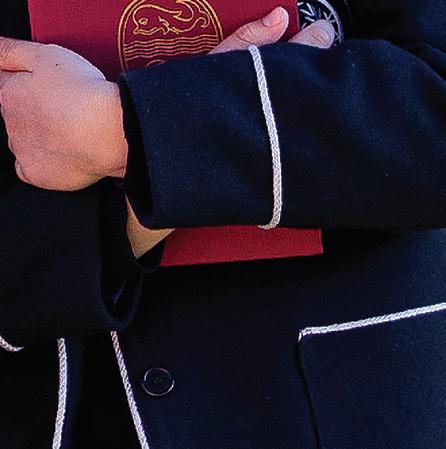


























































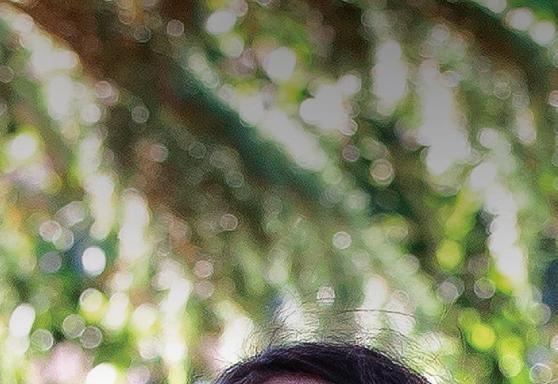


























































EDUCATION AUTUMN 2022 • £5 FOCUS ON Marymount London A GLOBAL SCHOOL WITH COMMUNITY AT ITS HEART ENTREPRENEURIAL SPIRIT Developing tomorrow’s business brains CULTURE CLUBS The best family memberships for exploring and learning PLUS SCIENCE Inventive WHY LEADING INDEPENDENTS ARE INVESTING IN CREATIVE STEM TEACHING

Heathfield girl has an irrepressible spirit. Uniquely hers, it drives her passion, voice and character. As well as providing an excellent academic education and top-class pastoral care, Heathfield identifies your daughter’s distinctive strengths and encourages her to live her ambitions, embrace her spirit and talent so that she develops as the best possible version of herself. Live life like a Heathfield girl.

Every
OPEN MORNING Saturday 18 March 9.45 to 12 noon ISI inspection EXCELLENT To book your place or to attend one of our Meet The Head events, please email admissions@heathfieldschool.net heathfieldschool.net | +44 (0) 1344 898343 Day, Weekly and Full Boarding for Girls 11-18
Tailored not
comes

uniform When it
to a good education, one size does not necessarily t all. At MPW, one of the UK’s best known names in fth and sixth-form education, we offer a distinctive alternative to traditional schools. A levels and GCSEs in over 45 subjects Retakes, revision courses and Year 12 transfers Personal tutors providing individual academic and pastoral support Oxbridge-style tutorial groups with nine students or fewer Excellent results and progression to top tier universities Best in class inspection reports from the ISI and Ofsted Discover MPW for yourself Visit www.mpw.ac.uk or call us to book your visit. London 020 7835 1355 Birmingham 0121 454 9637 Cambridge 01223 350 158
Students make rapid progress from their various starting points, in small-sized classes, due to highly e ective specialist teaching and closely focused pastoral support.

Schools

MPW London Independent
Inspectorate Report February 2022

Potential is Our Passion
Eaton House Schools are proud to have provided an exceptional education to our pupils since 1897. Based on two large sites in Belgravia and Clapham, our single sex schools for boys and girls are non-selective* and yet achieve outstanding results. We feed into Westminster, Eton, St Paul’s, Wycombe Abbey, St Paul’s Girls’ School, Winchester and other fine schools, winning many scholarships, awards and prizes each year.


Wellbeing is at the core of this well-rounded education. Each child is supported as an individual so that they can flourish both academically and socially. Finding the potential in each child is our passion.
New open house dates available now, visit bookopen.day to book.
Speak to our Head of Admissions, Miss Sam Feilding, on 020 3917 5050, or visit www.eatonhouseschools.com for more information.
*Non-selective at 2+ and 4+ entry.
Aatif Hassan

Founder and Chairman, Cavendish Education








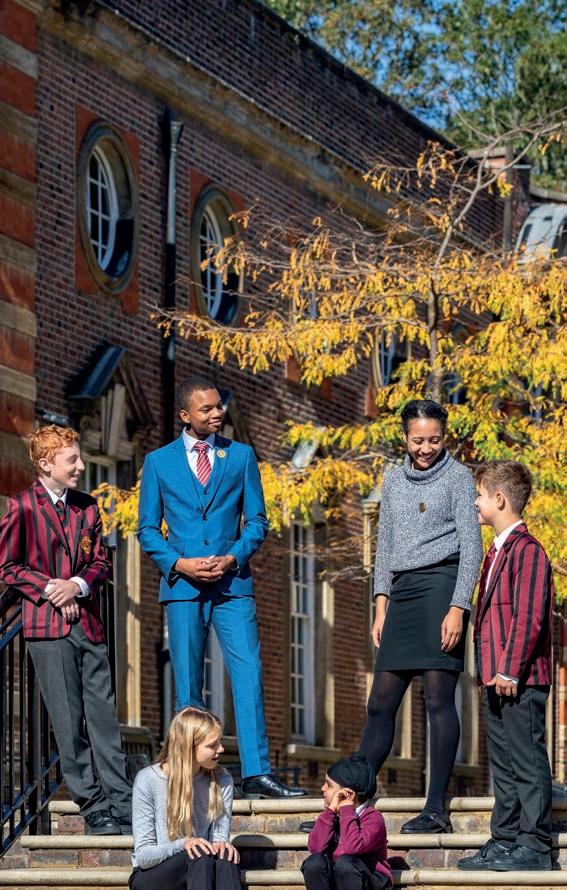
Aatif Hassan is Founder and Chairman of Cavendish Education and Dukes Education. He studied Maths and Economics and has a British Army Commission. He also has dyslexia and, in this issue, he suggests it's time for different language for dyslexia – what he prefers to describe as a "superpower" in all those young people who think differently.

Rachel Provest


Family Offi ce and Private Equity Director and author

Having studied French and Political Science at Edinburgh and an MBA at Chicago Booth, Rachel Provest combines a career in finance with a role at a Singapore schools’ group. In this issue, she talks about Max Your Money, her new children's guide (with Larry Hayes) to inspire future entrepreneurs and business stars.
Natasha Devon MBE
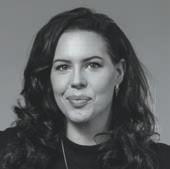
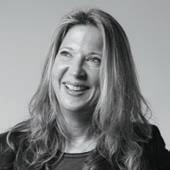
Writer, presenter and activist
Natasha Devon studied English at Aberystwyth and combines research and campaigning on issues such as mental health and equality with writing and presenting, including on LBC. She spends a lot of time in conversation with young people and, in this issue, talks about how they helped inspire her new YA novel about a darker aspect of teen friendships.

CONTRIBUTORS • ABSOLUTELY EDUCATION •
IT’S A CRYING SHAME…
…that she left it too late to apply for Hurtwood House, because it’s simply the best for acting, dancing, singing, film-making – “A utopia for creative minds” –as the Good Schools Guide says.
And crucially, this exciting school is equally successful academically. In fact, it’s statistically one of the top co-ed boarding schools in the UK.

So, if you’re looking for a really exciting and rewarding change of school at 16 – don’t leave it too late.
Contact Cosmo Jackson or visit our website for more information.
T: 01483 279000 E: info@hurtwood.net hurtwoodhouse.com
YES,
Nikita Gill

Poet, writer and illustrator



Born in Belfast, Nikita Gill moved to India when she was six and had her first work published when she was 12. She studied Design in New Delhi and then completed her MA at University for the Creative Arts. In this issue, she talks about her work in poetry and the inspirations and motivations that have fuelled this creative pathway.
David Griffiths Headmaster, Old Buckenham Hall
David Griffiths began his career in Wales teaching History and was Headmaster of Daneshill before taking on the role at OBH in Suffolk. He is also a longstanding ISI inspector. In this issue, he talks about the importance of parents and schools working together in order to achieve the very best outcomes for young people.


Dr Ranj Singh


NHS clinician, author and presenter


Dr Ranj Singh works as an NHS clinician specialising in paediatric emergency medicine, combining this with a media career – with work ranging from an award-winning CBeebies show to Strictly and This Morning. In this issue, he talks about his dual career and his children's books designed to help young people take care of body and mind.

CONTRIBUTORS • ABSOLUTELY EDUCATION •






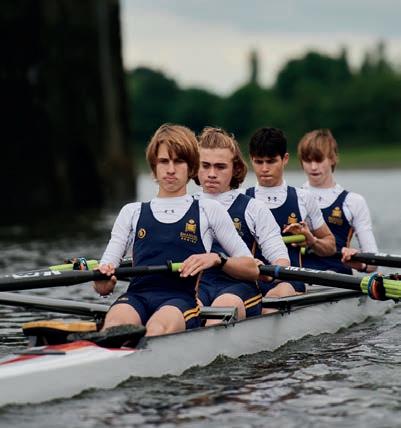

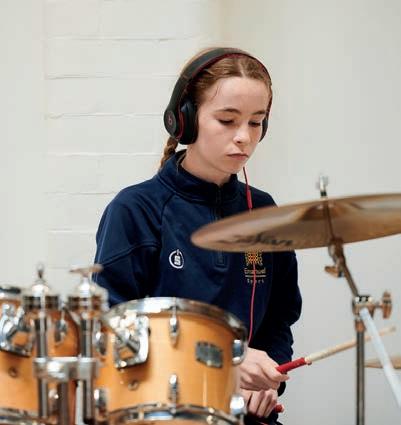















Co-educational • Ages 10-18 • Clapham Junction Founded in 1594 Entry at 10+, 11+ and Sixth Form Fee Assistance available at all entry points Battersea Rise, London, SW11 1HS www.emanuel.org.uk @emanuel.school @emanuel_school 020 8870 4171
A Passion for Life and

Allen’s Girls’
James
School Autumn Open Events Find out more about JAGS including our free and subsidised places. BOOK ONLINE jags.org.uk
Learning since 1741
From the EDITOR
The new school year always brings excitement and fresh challenges. There’s the pleasure in seeing old friends and making new ones – some of whom will be in our lives for many years to come. Schools, like wider society, are so much about interaction and sharing, both in how we learn and in how we create a culture of togetherness. On that note, we were delighted to visit Marymount International School London (page 32) for this issue’s Focus feature. Headmistress Margaret Giblin, who took up her role in the middle of the pandemic, talks specifically about the school’s welcoming community
young. I’m convinced, but if you are sceptical, do read Smart Money (page 100) and Food for the Future (page 138). Both show that young entrepreneurs not only have a creative mindset, but also the courage and persistence to carry ideas through. Something to give us all heart in these uncertain economic times.
We can also take heart from the authors featured in this issue. Cindy Forde, former CEO of Cambridge Science Centre, talks about her non-fiction book on the climate challenges of our time (page 78). Unlike so much of what we hear and read, her book is optimistic. She is, she says, working to inspire young people to look at what we can do – not at what we can’t – in order to achieve a sustainable future. And it was a huge pleasure to talk to Nikita Gill (page 148),
spirit and also its ability to look outwards – both essentials for the modern world.
Looking outwards is an essential for all scientific endeavour, and for Inventive Science (page 48) we check out the exciting array of teaching and learning forums happening in schools. The best approaches inspire young people to test and explore. So too tomorrow’s brightest entrepreneurial ideas, and in Teaching Entrepreneurship (page 88) we look at the array of approaches –from brainstorming to hackathons – that are informing potential future business leaders.
Of course, many people say that the best time to be an entrepreneur is when you are
a British-Indian poet who first found her audience through social media and writes from the heart to help young people on the sometimes painful journey to adulthood.
It seems clear to me that part of the power of Gill’s work comes from the fact she has never forgotten what being “young and powerless” actually feels like. This, surely, is a salutary reminder that in order to communicate e ectively with the next generation we must first do our best to recall what it feels like to be in their shoes.
Libby Norman EDITOR
13
Welcome
AUTUMN 2022 | ABSOLUTELY EDUCATION |
“YOUNG ENTREPRENEURS NOT ONLY HAVE A CREATIVE MINDSET, BUT ALSO THE COURAGE AND PERSISTENCE TO CARRY IDEAS THROUGH”
CONTE


SCHOOL DEVELOPMENTS




FOCUS ON THE FUTURE


32 A GLOBAL OUTLOOK
We
LEARNING TO SUCCEED
senior 88 TEACHING ENTREPRENEURSHIP
How schools deliver skills and information around business and


















INVENTIVE SCIENCE
58 TIME TO SIGN
66 MEDICINE MAN
Paediatrician

100 SMART MONEY
We speak to the co-author of a new book

to inspire future business brains
112 MINDING OUR LANGUAGES
Three schools share their inspiring approaches
teaching modern foreign languages

120 MUSIC MAKER
An interview with Alex Laing, the new Director of Music at Wells Cathedral School

126 GUIDING LIGHT
Natasha Devon, author and activist, understands
cult time today's young people
SCHOOL Leaver



138 FOOD FOR THE FUTURE

Two independent-school alumni share their journey as food entrepreneurs

145 STUDY AWAY
Forward College's founder discusses its multilocation degree course in great European cities

14 upfront 18 SCHOOL NEWS What’s going on in the world of education 25
A new building and an exciting school restructure 28
The history of Eaton House Schools FOCUS
visit Marymount International School London, a global school with a strong community focus 42
Aatif Hassan on the groundbreaking approach to SEND success at Cavendish Education PREP 48
Creative approaches to science that engage and enthuse young people
Why baby signing can deliver long-term benefits
and children's author Dr Ranj Singh
entrepreneurship
designed
to
the di
face
66 AUTUMN 2022 | ABSOLUTELY EDUCATION | AUTUMN 2022 152 32







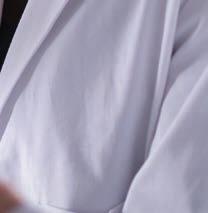



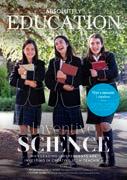








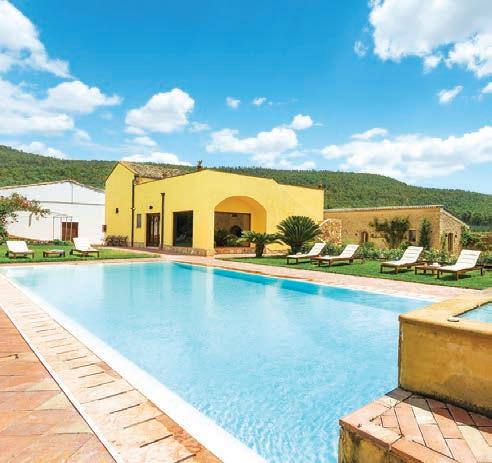
15 48 Books 148 POET FOR OUR TIMES Nikita Gill is a poet who voices the hopes and fears of teenagers 164 MAGIC REVEALED Cressida Cowell's new blockbuster is here SCHOOL's OUT 168 FAMILY FUN Great-value memberships to cultural treasures 174 MARVELLOUS MATILDA Revisiting one of the West End's most luminous shows 210 LAST WORD The new Headmaster of The Lyceum School 168 MARYMOUNT INTERNATIONAL SCHOOL LONDON George Road, Kingston Upon Thames, Surrey KT2 7PE. 020 8949 0571 marymountlondon.com FRONT COVER ZEST MEDIA PUBLICATIONS LTD Wenlock Studios, 50-52 Wharf Road, N1 7EU 020 7704 0588 ZEST-MEDIA.COM Zest Media Publications Ltd cannot accept responsibility for unsolicited submissions, manuscripts and photographs. While every care is taken, prices and details are subject to change and Zest Media Publications Ltd. take no responsibility for omissions or errors. We reserve the right to publish and edit any letters.All rights reserved. ABSOLUTELY-EDUCATION.CO.UK AUTUMN 2022 | ABSOLUTELY EDUCATION | NTS 190 EDITOR Libby Norman EDITORIAL ASSISTANT Rachel Hogg GROUP ADVERTISING MANAGER Nicola Owens BUSINESS DEVELOPMENT MANAGER Jay Pawagadhi ART DIRECTOR Pawel Kuba SENIOR DESIGNERS Mike Roberts Suzette Scoble MIDWEIGHT DESIGNER Carmen Graham JUNIOR DESIGNER Kai Nicholls PRODUCTION MANAGER Danica Brodie FINANCE DIRECTOR Jerrie Koleci CREDIT CONTROL MANAGER Alexandra Hvid DIRECTORS Craig Davies, Leah Day, James Fuschillo NON-EXECUTIVE DIRECTOR Alexandra Hunter MANAGING DIRECTOR Sherif Shaltout For advertising enquiries please call +44 (0) 20 7704 0588 or email: advertising@zest-media.com




Up

17AUTUMN 2022 | ABSOLUTELY EDUCATION |
Front RECORD BREAKER P 18 REMEMBRANCE LESSONS P 21 PONY PARTNERSHIP P 26 PIONEERING TRADITION 125 years of Eaton House Schools Page 28
HYBRID ACHIEVERS

Two years ago, Portland Place School launched a hybrid approach to independent education and its students are fl ourishing. Among the fi rst cohort of Hybrid GCSE students, 38% achieved grades 7-9 (the national average is 26%). Portland Place Hybrid School offers online learning for four days a week and attendance for one day at Portland Place School, which is located close to Regent's Park.

Sport director
The Leys School, Cambridge has appointed cricketer Carla Rudd as its new Director of Sport. Her arrival came just days a er fi nishing in second place as part of the Southern Brave team in this year’s The Hundred competition. Rudd was formerly Head of Girls’ Cricket at Felsted and, alongside her teaching, she


GIVING SUCCESS
Tonbridge School’s second Giving Day, which took place at the end of the summer term, raised more than half a million pounds. Giving Day supports Tonbridge's ‘widening access’ mission of doubling its number of Foundation Award recipients by 2028. The event saw a range of fun activities and community projects across the campus and the town.
Record breaker
Dauntsey’s student Ophelia (Phe Phe) Pye, 17, shone as part of the athletics team at the European Championships, becoming European 400 metre hurdles champion, with a national record time of 58.06 seconds. At the World Under 20 Championships, she was part of the bronze-medal winning 4 x 400 metres relay team.

STAR JUMPERS
Four pupils from Cottesmore won the National Schools Jumping Championships at The All England Jumping Course, Hickstead. The showjumping team of Darcy, Daisy, Orla and Mia are all from Mid and West Sussex. Orla also took 3rd place in the individual fi nal a er a nailbiting jump off round.
“If you concentrate on what you don't have you will never, ever have enough”
OPRAH WINFREY
“Portland Place's fi rst cohort of Hybrid GCSE students achieved excellent results”
18
PHOTO: MARTA GORCZYNSKA
| ABSOLUTELY EDUCATION | AUTUMN 2022
New school lead

Suzie Longstaff is joining Dukes Education to head up its new London Park School (LPS). Currently Head of Putney High, she will be the founding Principal, eventually establishing a new centre of excellence across a number of London sites, and a London Park Sixth Form in Belgravia.

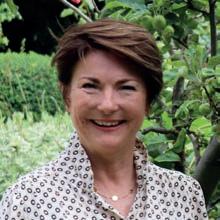
SIXTH PLACE

A smart new hub of Sixth Form life will soon be at Emanuel School, with a newly extended Sixth Form Centre. It is designed to offer areas for silent or group study, a café and common areas for socialising, plus conference spaces for meetings of the Battersea school's vibrant student-led societies.

American rules
Windlesham House Prep has become a National Football League (NFL) Hub for the south-east region. It will welcome NFL Flag Football training, host regular tournaments and play alongside other schools in the league. NFL Flag is the starting point for American football professionally, with a regional fi nal played at Tottenham Hotspur's stadium.

CHANNEL CREW
Children from Taunton Prep braved cold waters and jellyfish to swim the English Channel from Dover to Cap Gris Nez to help save their local Wivey Pool from closure. Boys and girls as young as 12 – all of whom had trained in open waters – swam the 21 miles, raising a total of £6,000.

SOMETHING THEY SAID
EAGLE HOUSE HEAD
Jane Jones will be Head of Eagle House School from January, joining from Swanbourne House. She had a career as a barrister and district judge before moving into education. Eagle House is a co-ed day and boarding prep and is part of the Wellington College family of schools.
UPFRONT / NEWS "
SUCCESS IS WALKING FROM FAILURE TO FAILURE WITH NO LOSS OF ENTHUSIASM "
WINSTON CHURCHILL
QUEEN ELIZABETH II
“No age group has a monopoly of wisdom, and indeed I think the young can sometimes be wiser than us”
19AUTUMN 2022 | ABSOLUTELY EDUCATION |
Girls

enjoying success “The school successfully meets its ambition to empower pupils to become independent thinkers and fearless learners.” ISI Inspection Report 2022 Visit our website to nd out more: www.channing.co.uk The Bank, Highgate, London, N6 5HF INDEPENDENT DAY SCHOOL FOR GIRLS AGED 4-18
PREP LEADER
Godstowe School in High Wycombe has welcomed Kate Bailey as the new Headmistress. Formerly Founding Head of Wetherby Pembridge New York, part of the Alpha Plus Group, she brings a wealth of experience to leadership of the day and boarding school for girls aged 3 to 13 and boys aged 3 to 7.


Ribbon cutting
Moulsford Prep in Oxford held the offi cial opening of its new pre-prep building in July, with children’s TV presenter Andy Day Doors cutting the ribbon. The building houses Reception and Years 1 and 2 for boys and girls, with the school remaining boys only from Year 3. It incorporates eco-friendly systems such as green roofs.
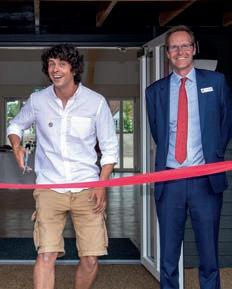
REMEMBRANCE LESSONS
Working with the National Literacy Trust, the Royal British Legion, has introduced free teaching resources to help young children understand the importance of Remembrance. Alongside a poetry project led by Tomos Roberts, there will be a livestream assembly on Armistice Day on 11th November. This year’s resources explore the theme of service.




CRICKET MEET
Mayfi eld School cricketers were delighted to welcome the MCC (Marylebone Cricket Club) for just the second time in the East Sussex girls’ school’s history. The students, ranging in age from 11 to 18, played two thrilling T20 fixtures against an MCC women’s representative side featuring two ex-international players.
New Head

Sarah Glencross became Head of Redcliffe Gardens School, part of the Godolphin and Latymer School Foundation, in September. Deputy Head of Redcliffe since January 2021, she has previously held key roles at other London schools, including Latymer Upper and Prep Schools and Newland House School.
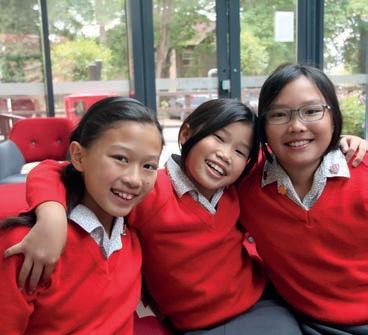

Top Story
Poetry challenge

Gyles Brandreth has launched a new poetry writing competition as part of Poetry Together 2022 on ITV’s This Morning and winners will get the opportunity to read their poems aloud on national TV. Poetry Together is wholly supported by Dukes Education and this year’s theme is Laughter & Tears. Find out more at poetrytogether.com



EMBLEY ARRIVAL
Harriet Povey is the new Head of Early Years at Embley, Hampshire. She says: “I’m a big believer in learning through play, following the children’s interests to extend their learning, and the importance of outdoor education.” Exciting trips are planned for pupils and Natural Science and Makaton are being added to the Nursery timetable’s specialist lessons
SOMETHING THEY SAID


21 UPFRONT / NEWS
“HOW CAN YOU SAY YOUNG GIRLS DON’T GET IT? THEY’RE OUR FUTURE...THEY KIND OF KEEP THE WORLD GOING”
HARRY STYLES
AUTUMN 2022 | ABSOLUTELY EDUCATION |

DISCOVER YOUR TALENT AT CRANLEIGH WEEKLY BOARDING WITH EXCELLENT ACADEMICS SUPPORTED BY A FULL PROGRAMME OF MUSIC, SPORT, ART, DESIGN AND DRAMA. REGISTERING NOW FOR 2025 AND 2026. ADMISSIONS@CRANLEIGH.ORG OR WWW.CRANLEIGH.ORG | 01438 276377
READING PRIZES
Farshore Reading for Pleasure Teacher Awards have been presented to Amanda Hanton, Lucas Maxwell and Amy Greatrex, and with a highly commended to Sarah Bell. There were ‘whole school’ campaign awards for Georgie Lax and Claire Nelson. The awards, launched in 2017 by the publisher, are in association with the Open University and UK Literacy Association.
Library star
Bedford School Librarian Lauren Chatley is one of three librarians in the School Librarian of the Year (Secondary) Honours List, a competition organised by the School Library Association. Among her innovations has been a multi-faceted ‘Reading for Wellbeing’ programme, working closely with the Head of PSHE, and topical displays from a wider fi eld of authors and styles, including manga and graphic novels.

WIZARD VICTORY

England beat Germany 160-140 in the fi nal of International Quidditch Association’s European Games in a hard-fought fi nal in Limerick, Ireland. Coming as the IQA prepared to rebrand the game – inspired by the Harry Potter novels – to quadball, it has become a popular co-ed sport among university students, as reported in Absolutely Education’s summer issue.
Water boys
A team of 14 students from Habs Boys celebrated a worthy second-place win at the U13 ESSA National Water Polo Championships, with Trinity School, Croydon crowned winners. Competing against a number of strong teams, the squad at Habs Boys secured qualifi cation to the National fi nals having won their quarter-fi nals match against hosts Northampton School for Boys.

COLLEGE APPOINTMENT
St Columba’s College in St Albans has appointed Karl Guest as its new Head from September 2023. Currently Head of Alton School, he succeeds David Buxton, who retired last summer. David Shannon-Little is Interim Head at the co-ed Catholic school, which was recently rated ‘Excellent’ in all areas by the ISI.

SOMERSET WELCOME
James Johnson is the new Head at Taunton School. He joins from Ardingly, where he was Head of Senior School. An English teacher by training, his background includes roles at Cheltenham College and Tonbridge. He has arrived in the year the Somerset school celebrates its 175th anniversary and continues its four-year investment in campus additions.
Giving thanks
Pupils at Holy Cross Prep in Kingston Upon Thames led a special service of thanksgiving for the late Queen Elizabeth II. Girls had learnt more about the Queen’s remarkable life and shared happy memories and prayers, which they had written collaboratively in class to present at the service.
 JAMES BALDWIN
JAMES BALDWIN
23 UPFRONT / NEWS
SOMETHING THEY SAID “YOU THINK YOUR PAIN AND YOUR HEARTBREAK ARE UNPRECEDENTED IN THE HISTORY OF THE WORLD, BUT THEN YOU READ
”
“St Columba’s was recently rated ‘Excellent’ in all areas by the ISI”
AUTUMN 2022 | ABSOLUTELY EDUCATION |





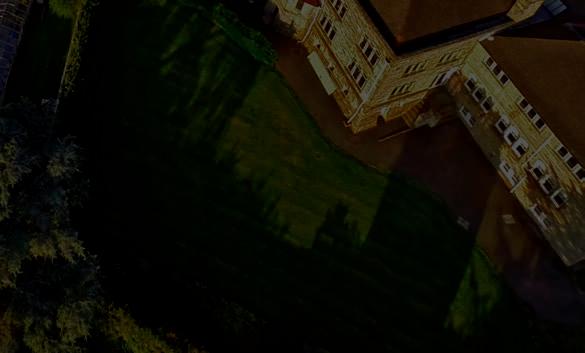





Mayfield AN INDEPENDENT BOARDING AND DAY SCHOOL FOR GIRLS AGED 11 TO 18, SET IN THE BEAUTIFUL SUSSEX COUNTRYSIDE JUST AN HOUR FROM LONDON OUTSTANDING ACADEMIC RESULTS • SCHOLARSHIPS AVAILABLE EXTENSIVE CO-CURRICULAR PROGRAMME EXEMPLARY PASTORAL CARE & NURTURING ENVIRONMENT STATE OF THE ART EQUESTRIAN CENTRE FLEXI, WEEKLY AND FULL BOARDING OPTIONS OpenMornings THURSD AY TH RUARY, SATURDAY 25 TH MARCH & THURSDAY 27 TH APRIL TO BOOK YOUR PLACE VISIT OUR WEBSITE TO ARRANGE A VISIT PLEASE CON TACT MRS SHIRLEY COPPARD, R EGISTRAR@M AYFIELDGIRLS.ORG WW W.M AYFIELDGIRLS. ORG
School developments
SIXTH FORM OPENING Heathfield School has opened its new purpose-built Cadogan Sixth Form
Hon Mrs George Cadogan – Heathfield old girl Davina Motion, who recently married George Cadogan – opened Heathfield School’s purposebuilt Cadogan Sixth Form in September. She was joined by another alumna, Sports Journalist of the Year Laura Lambert.

The new building o ers learning and breakout spaces for the school’s new Sixth Form Programme. Heathfield o ers over 20 subjects at A level, and with an extensive co-curricular programme. In the first half of the Lower Sixth, students follow a leadership course and a goalsetting seminar. Then they embark on Pathways and Horizons Programmes. Pathways o ers a choice of Extended Project Qualifications (EPQs), Massive Open Online Courses (MOOCs), Maths for Scientists, and an International English Language (IELT) qualification. Horizons o ers options of topics such as decoding language, dystopian fiction and a study of the iconic film La Haine. During Upper Sixth, students benefit from a series of time management and mentoring programmes.
“This project has taken several years to come to fruition,” says Headmistress Sarah Wilson. “Our students will be able to study, learn, meet mentors, develop their soft skills in one of our two presentation areas, and transition e ectively into higher education and the working world.”
NEW COLLEGE STRUCTURE
Hurst is adapting to changing times with a new structure for the 21st century Hurst College has grown significantly over the last 15 years – doubling in size, with a shift towards weekly and flexi boarding and a move to an equal co-ed split. The decision has been taken for the college structure to reflect this, and the changing nature of education.
Hurst has introduced a Junior Prep structure (Reception to Year 6) which echoes that of the maintained sector, and with a separate Senior Prep (Year 7 and Year 8) focusing on these important developmental years. School leaders say much can be gained by having Year 7 and 8 pupils at the top of their prep school.


The leadership structure has also evolved to reflect this, and Tim Manly has become Principal of Hurst and CEO of the Hurst Education Trust. Dominic Mott has now stepped up to become Head of College. His previous role as Head of the Senior School will now be taken on by Lloyd Dannatt. Michelle Zeidler becomes Deputy Head Academic and Director of Education for the Hurst Education Trust.
The Hurst Education Trust (HET) is a multiacademy initiative envisaged as ultimately including a small number of local primary schools and a secondary school. The College says it has been driven by a desire not only to do the right thing but also to benefit pupils and sta at Hurst and the schools within the HET.
UP FRONT / NEWS
25
Heathfield opens its Sixth Form building and there’s a visionary restructure at Hurst
LEFT
Hon Mrs George Cadogan, Sarah Wilson and Laura Lambert at Heathfield
BELOW Tim Manly and (bottom) Dominic Mott of Hurst
AUTUMN 2022 | ABSOLUTELY EDUCATION |
Pony PARTNERSHIP
Bassett House has celebrated the launch of a unique community partnership with Wormwood Scrubs Pony Centre


Pupils, parents, ponies and stable sta celebrated the o cial launch of a community partnership between Bassett House School and Wormwood Scrubs Pony Centre (WSPC). Bassett House children in Years 5 and 6 are now enjoying riding lessons and ‘living curriculum’ classes at WSPC, just a few minutes away from their school.
As well as learning to ride – on both real and mechanical horses – the pupils are finding out about all aspects of horsemanship, including caring for ponies. Bassett House is also using this opportunity to take learning out of the classroom, so pupils are studying animal science and physiology in WSPC’s learning centre.
The school’s support for the WSPC helps to ensure its long-term viability. The much-loved west London charity, which was founded in 1989 and is an RDA school, provides riding opportunities and equine therapy to students with physical disabilities and learning di culties. It also o ers riding



and other horse and pony care activities to members of the local community.
Bassett House Head Kelly Gray and WSPC’s Founder and CEO Sister Mary Joy Langdon cut the ribbon at the celebration ceremony. “We are so grateful for this community connection with Bassett House School. Long may it last and develop,” said Sister Mary. “There is so much more than riding here, so much for young people to gain from coming to the Pony Centre.”
Kelly Gray spoke of the “precious experiences” that Bassett House pupils are having at WSPC – their commitment to community service, as well as the thrill at being with the horses and learning to ride – and the extra benefits that brings. As WSPC is a registered equine therapy centre, children are taking part in therapeutic exercises during their riding lessons designed to enhance their wellbeing.
For the pupils of Bassett House this is pony heaven, with regular opportunities to ride and engage with the equines of WSPC and also understand more about how a stable works. One parent has commented that her daughter didn’t draw breath for about an hour describing the grooming, the riding and a special pony called Magic. Another pupil said simply: “I have had my best day at Bassett yet!”
To find out more about the work of Wormwood Scrubs Pony Centre, visit wormwoodscrubsponycentre.org.uk
TOP RIGHT WSPC Founder Sister Mary Joy Langdon and Bassett House Head Kelly Gray
BELOW Bassett House pupils love meeting the ponies
UP FRONT / NEWS | ABSOLUTELY EDUCATION | AUTUMN 202226

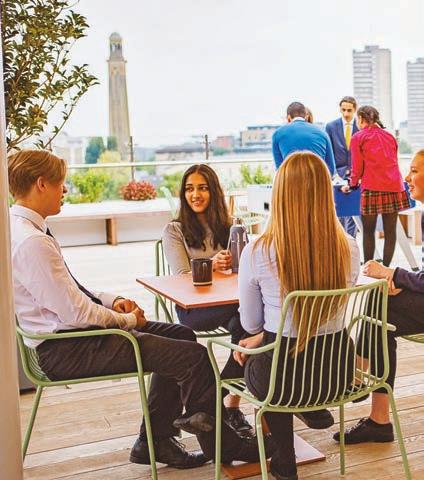

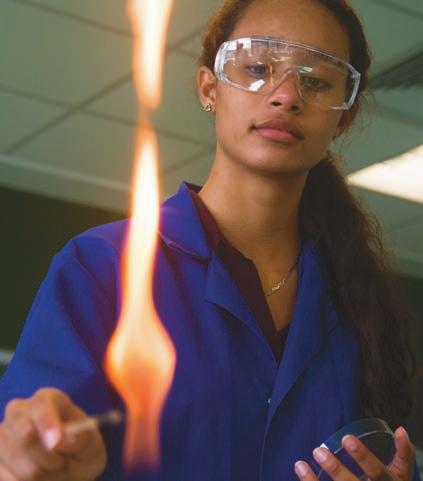
Embracing an innovative, modern approach whilst keeping traditional values at its core, Kew House School takes an exciting stance on 21st century education. With state-of-the-art facilities, a broad curriculum and excellent pastoral care, Kew House is a place where you would want to be – a place of learning and discovery, laughter and friendship. Book your place at one of our Open Events at www.kewhouseschool.com/ openevents @KewHouseSchool DISCOVER MORE T: 020 8742 2038 W: www.kewhouseschool.com An independent co-educational senior school for students aged 11-18 in West London
Focus on the



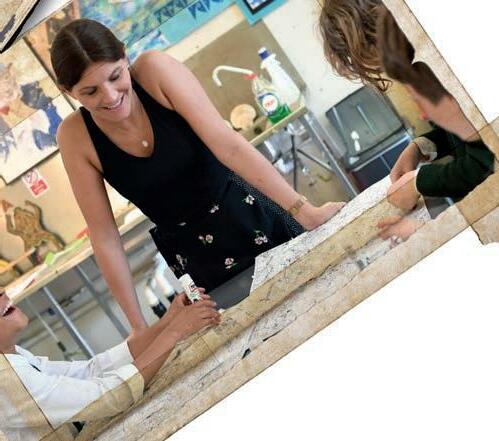

FUTURE

Celebrating its 125th birthday, Eaton House Schools has grown from one London prep to a thriving family of five schools combining tradition with a modern approach to education


28 | ABSOLUTELY EDUCATION | AUTUMN 2022 LIBBY NORMAN
Eaton House Schools is a stalwart of the London education scene, now encompassing five schools across two historic sites – one in the heart of Belgravia and the other overlooking leafy Clapham Common. This year, it is celebrating its 125th birthday. It champions single-sex education, with co-ed nurseries, and is known for giving boys and girls the strong start needed for top schools and a bright future.
The founder of the original Belgravia boys’ school was Thomas Sale Morton, a renowned Classics scholar and author – also tutor to the young Harold Macmillan. Indeed, it was the future UK Prime Minister’s mother Helen (Nellie) Artie Tarleton Belles who encouraged the gifted educationalist to establish a prep school.
It was known originally as Cliveden Place Preparatory School and inhabited 35 Cliveden Gate, moving several times to accommodate its swelling cohort, before a 1937 relocation to the premises at 3 Eaton Gate that still forms part of the school today. During World War II, pupils were evacuated to Haines Hill, a stately home in Berkshire. When the school returned to the capital a year after the War, 5 Eaton Gate was purchased in order to manage growing pupil numbers for the school – by now known as Eaton House. Morton had handed over the reins to Robin T. Gladstone (said to be a relative of William Gladstone) in 1910 and the Ingham family – previous owners of Westminster Kindergarten Preparatory School – took charge in 1959.
The late 1970s brought an exciting chapter under the visionary stewardship of the Harper family, Hilary Harper, newly married to Don
Harper, bought the school in 1977. She was then Head of the Junior School and already had 14 years’ service with the school. Under the Harper family’s leadership, the school went from strength to strength academically, becoming known for outstanding results in the 7+ and 8+ exams for the boys under its charge.
The Harpers spotted the future Eaton House The Manor when they were driving through southwest London. This fine Georgian manor overlooked Clapham Common Northside and was a significant local landmark. Known as Byrom House and ‘The Beeches’, it o ered both space and huge potential. The Harpers took it on as a project, developing the 1.5-acre site as a nursery, pre-prep and prep. Eaton House The Manor opened in 1993 and rapidly became an integral part of Clapham life.
Like its Eaton House Belgravia sibling, Eaton House The Manor developed an exceptional academic reputation and growing cohort. Further refurbishment took place from 2003 and five years later, it opened a separate girls’ school. This meant Eaton House The Manor now o ered a co-ed nursery with single-sex pre-prep and prep education for boys and girls on one site. Facilities have been added over the
years, including an underground gym, new labs and a theatre. It has also championed sustainability – from generating its over half its own electricity to supporting wildlife with its 300 square metres of green roofs and its ‘living walls’. It also continues to shine academically – with 38 scholarships and a Starred Pass to Eton for boys’ and girls’ schools in 2022 alone.
Huw May became Headmaster of Eaton House Belgravia in 2017 and the school now educates boys aged 2-11 on one site in Eaton Gate, and with a co-ed Nursery. Alongside that early beneficiary Harold Macmillan, other notable alumni include actors Sir Laurence Olivier and Eddie Redmayne, author Philip Pullman and adventurer Bear Grylls. It has an outstanding reputation for sending boys on to schools such as Westminster, St Paul’s and King’s College Wimbledon.
Hilary Harper retired in 2016, and her daughter Luchie Cawood took over. A new chapter began in 2021 when Eaton House Schools joined the Dukes Education family.
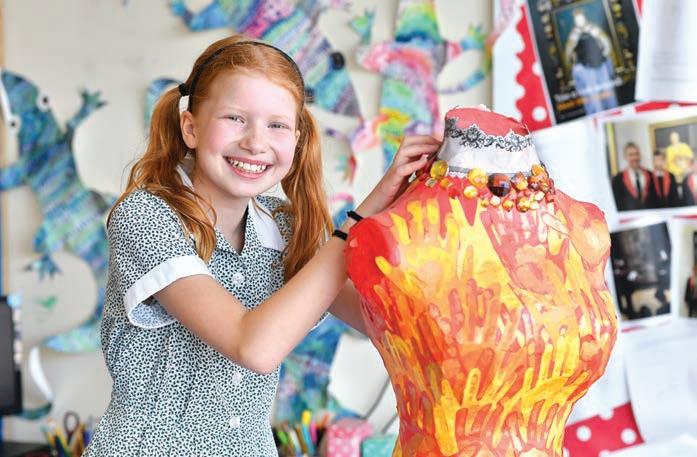
Sarah Seagrave – Headmistress of Eaton House The Manor since 2016 – took on the role of Principal of the Group in September 2022.


While a tailored approach to develop each pupil’s academic potential has always been Eaton House Schools’ philosophy, strong pastoral care, creative and sporting opportunities and a spirit of giving back are equally embedded. Generations of children have been educated across the two sites in Belgravia and Clapham, becoming a familiar site thanks to their distinctive uniforms and participation in community life. Wherever children’s talents and passions lie, the approach at Eaton House Schools has always been the same – to ensure they flourish.

“NOTABLE
EATON
HOUSE
ALUMNI INCLUDE SIR LAURENCE
OLIVIER AND EDDIE REDMAYNE, PHILIP PULLMAN AND BEAR GRYLLS”
UP FRONT / ROOTS 29AUTUMN 2022 | ABSOLUTELY EDUCATION |
RIGHT A pupil from Eaton House The Manor
BELOW Principal Sarah Seagrave and some Manor pupils







31 Focus AUTUMN 2022 | ABSOLUTELY EDUCATION | PARTNERSHIP BENEFITS P 39 LEARNING TO SUCCEED P 42 BREAKING NEWS P 45 LIFE AND LEARNING AT MARYMOUNT LONDON Page 32

32 | ABSOLUTELY EDUCATION | AUTUMN 2022
“IT’S MORE THAN JUST BEING AN INTERNATIONAL SCHOOL, THERE’S AN INTERNATIONAL MINDEDNESS HERE”
A global OUTLOOK
Absolutely Education visits Marymount International School London, a place that blends a truly global education with strong community traditions that set girls on course for bright futures
LIBBY NORMAN
Head up the drive of Marymount International School London and you could almost believe you had stepped back in time. It sits on a private estate close to Coombe Hill Golf Club and the delightful Edwardian main building harks back to an age when fine architecture and pride in craft prevailed. The sevenacre campus with spectacularly well-tended gardens is a calm oasis. Yet Kingston upon Thames is just down the road, it’s close to the London ‘villages’ of Richmond, Wimbledon and Putney, and with superb road and rail links to central London (just 20 minutes away) and Heathrow.
The setting is Surrey idyll, but there’s a resolutely forward-looking approach in the education provided here. Marymount was the very first all-girls’ school in the UK to adopt the International Baccalaureate

(IB) curriculum back in 1979. This is something it remains, justifiably, proud of. The school o ers both the IB Diploma and the innovative Middle Years Programme.
Marymount London was established in the mid 1950s by the Religious of the Sacred Heart of Mary (RSHM), a pioneering Catholic order focused on education. It is part of a network encompassing nine countries and three continents, with sister schools spanning Paris, New York, Rio and other world cities. The school welcomes all faiths and none, but Headmistress Margaret Giblin sees the RSHM element as its bedrock. “I say to the students that it’s our anchor and it’s our guide because it roots us in why the schools were formed.
“I find Mother Butler, who founded Marymount Schools, quite inspirational. She set up the first school in the early 1900s and she wanted holistic education. She talked about physical, academic, moral and spiritual
33AUTUMN 2022 | ABSOLUTELY EDUCATION |
ABOVE
Marymount girls are part of a global RSHM community FOCUS / MARYMOUNT LONDON
learning. She was preparing women for a changing society. At that time, many were establishing churches, but Mother Butler was setting up schools. As an order, they are very progressive and very community oriented.”
Margaret Giblin knows whereof she speaks – Theology is one of her teaching subjects (the other is English). She has also seen the Marymount community spirit at work, having started as Headmistress here in January 2021 – in the maelstrom of Covid.

“The community here is so welcoming to the students, and I also felt very welcomed as an incoming Head and a new member of sta .” And this despite the fact that she had her first two weeks all mapped out – down to cookies and hot chocolate for her tutor groups – when the government decision was made, two days before the start of term, not to reopen schools.
“But what can you do? I put my assembly online, I had virtual hot chocolate and cookies with
all the students – it was an interesting way to begin!”
Giblin was new to this role, but arrived as a seasoned school leader, having trained in Ireland and taught there on both sides of the border. She’s covered both state and independent sectors in her time and came to Marymount from Woldingham, where she had what she calls a “boomerang” tenure – teaching there first in the early Noughties and then returning in 2012. Second time around, she
covered a range of roles culminating in Senior Deputy Head. She’s grateful for this breadth. “I’ve seen all facets of school life, which puts you in good stead to relate to people,” she says.
She says it also helped that she was on the teaching roster in those early days. “I had Grade 6 RE, and that was really lovely. For that period of time that you are in the classroom you’re just Mrs Giblin their RE teacher.” Head duties in the last school year – with routine but important inspections and accreditations to prepare for – made a timetabled slot impractical, so she became “super sub”, ready to cover absences and unforeseen events. “Any time there was an opportunity, I taught,” she says. “I think every teacher goes into teaching because they love it.”
The cohort at Marymount International School London truly is international – something like 40 countries and over 50 nationalities if you count students’ primary, secondary and sometimes third passports. The majority are day pupils. Some are so local that they walk to school, while others catch one of the school buses that travel in from London and Surrey environs. “Day pupils are London based and they are locally based, but they are coming from international backgrounds oftentimes. Many have dual nationality – they may have one parent who is British and one who is another nationality. But I think it’s more than just being
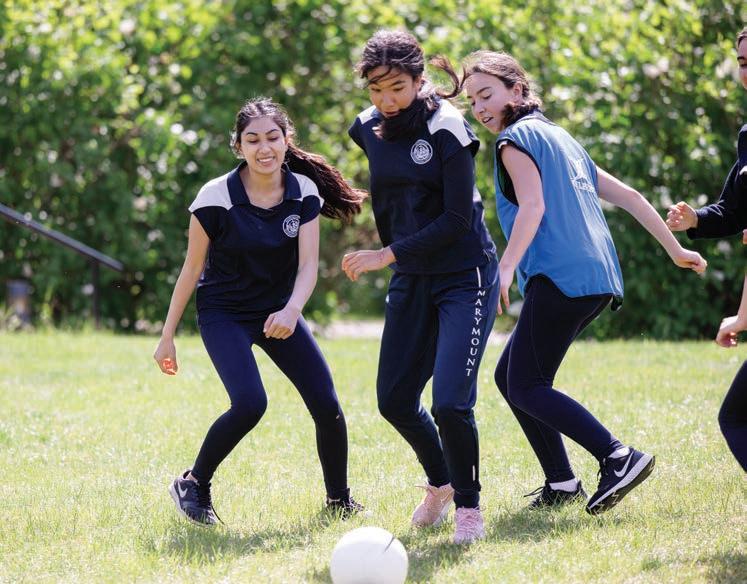

34 | ABSOLUTELY EDUCATION | AUTUMN 2022
ABOVE Chapel is part of daily life at Marymount
RIGHT Popular sports here include soccer (football)
RIGHT Science investigation in action
international, there’s an international mindedness here,” says Giblin.
When it comes to boarders, there’s a real geographic spread but no one dominant group, which the school sees as important. “What you want it to feel like is a genuinely diverse community where all are welcome. It’s all about coming together as a community, so we are really fortunate that we have such a breadth.” In the school’s light-filled and welcoming Dining Hall you see an important element of how breadth is celebrated, with a smorgasbord of imaginative and healthy choices inspired by all continents. Food is savoured here, and no need to forgo home comforts.
Boarders live in halls overlooking the gardens. There’s a homely but

modern feel, with comfortable twin rooms and social spaces. The recently added kitchen and dining areas are “absolutely loved” by the girls, o ering a useful taster of university-style independence.
The boarding is organised in grade-specific corridors, but with a strong sense of integration – between age groups, but also boarders and day pupils – thanks to the House structure that blends them. While day pupils often invite boarders over for sleepovers, at Marymount it works the other way too. “I think that’s really lovely – it is their home. Our Head and Deputy Head of Boarding really work to foster that.”
Marymount o ers options to match modern family life. Five-
day and seven-day boarding remain extremely popular, and flexi is also firmly in the mix. There are many advantages in boarding – not least ease of access to facilities and fixtures after hours – but every pupil here enjoys a wealth of educational spaces. Marymount’s new STEAM centre brings interdisciplinary and digital learning to life, while wonderful Visual Arts facilities include a kiln and potter’s wheel, but also laser cutter, 3D printers and Adobe software. Performing Arts are a strong suit too, and Drama and music happen throughout the year in the auditorium and other spaces, with exciting o -campus events and enrichment opportunities locally and internationally. There’s also a

35AUTUMN 2022 | ABSOLUTELY EDUCATION | FOCUS / MARYMOUNT LONDON
“THERE’S A SKILLSET EMBEDDED IN IB –THE ATTITUDE TO LEARNING, THE SELFREGULATION, THE INDEPENDENCE, THE CURIOSITY, THE BALANCE
”
ABOVE Marymount London has an idyllic sevenacre campus
great mirrored dance studio, and the subject has become so popular that the school is o ering Dance within the IB Diploma for the first time this year. Giblin says that she’s excited to see what the cohort here who “live and breathe dance” will achieve.
There’s a well equipped new sports hall, plus outdoor pitches and courts where team games are played – volleyball, soccer (football), badminton and basketball among them. Wimbledon is ten-minutes away, so tennis is, of course, a mainstay. School teams (Marymount Aces) compete weekly in the London Schools Sports Association against rival international schools in London and
Surrey, and Varsity teams have the opportunity to travel across Europe for fixtures. There’s also the RSHM Sports Festival each year – a friendly three-day tournament among network schools. Local opportunities to represent the school range from golf tournaments to swimming meets.
There’s a strong sense of community evident in everything at Marymount London, and never more so than in the IB structure. Open-minded enquiry and group and individual project work are central principles, and the impressively stocked Library is a hub for embedding this approach from the Middle Years Programme onwards. Collaborative lessons
ABOVE
between teachers and librarian help students hone sophisticated information-gathering skills and there are a huge number of books and periodicals (covering nine languages).

Margaret Giblin believes some “myth busting” is needed about the Middle Years Programme as it is not as well understood as the Diploma. She and her team have been engaging with prep schools they work with to help them understand more about the foundation it provides.
“There’s a skillset embedded in IB – the attitude to learning, the self-regulation, the independence, the curiosity, the balance,” she says.
“By the time learners come to the

“WE’RE A VERY TIGHT COMMUNITY, BUT A COMMUNITY THAT IS BOTH INWARD AND OUTWARD FACING. I THINK OUR STUDENTS ARE SUPERB AT KEEPING THAT VISION”
The Library is a hub for collaborative study and individual research
36 | ABSOLUTELY EDUCATION | AUTUMN 2022
Diploma they’ve acquired that instinctive approach because it has been so repeated and so supported in the Middle Years journey.” One thing that Giblin loves about the IB route – and she speaks with deep experience of di erent pathways – is the spirit of enquiry it engenders. Also, as she puts it, “this sense of being comfortable with not knowing the answer because part of the education journey is in finding that”. Results speak for themselves, with a consistent average IB Diploma score of 37 points. This puts Marymount into the top 15% of IB schools worldwide. A third of the class of 2022 scored 40 points and above. Also, and this shows the international nature of the cohort, a third of graduates took the Bilingual IB Diploma. “We are really fortunate that the core
academics here are really strong, and they have to be. That’s every school’s bread and butter – you have to be getting it right in the classroom.”
Small class sizes support high achievement, but the focus is always on developing students’ curiosity. The enrichment programme, led by Specialist Learning Director Dr Sandra Forrest, o ers support and stretch to suit individual needs and interests. This feeds into the holistic approach that Giblin sees as central to the school’s ethos. Students are encouraged to think independently and also look outwards in academic and other areas – for example, student-led initiatives for Kingston Foodbank and for a sister school in Zambia. Whatever they are planning, there’s feedback and encouragement from the sta . “We are always saying to the students ‘so what other areas are there for you to explore?’”
Underpinning all of this is the RSHM bedrock – Margaret Giblin believes it is the extra ingredient that gives the Marymount London community strength and purpose. “We’re a very tight community, but a community that is both inward and outward facing. I think our students are superb at keeping that vision – where do we fit in the world and what di erence can we make here and more widely?” she says. “And there’s a lot of laughter here. We work hard and we laugh a lot –there’s a real joy in learning.”
At a Glance
Marymount

International School London
FOUNDED: 1955, by the Religious of the Sacred Heart (RSHM)
HEAD: Margaret Giblin, since January 2021
GENDER: Girls’ school
NUMBER OF PUPILS: 250 DAY OR BOARDING: Day and boarding AGES: 11-18
POINTS OF ENTRY: Most popular points are Grade 6 (Year 7) and Grade 11 (Year 12), accept in-year applications for admission too ADMISSIONS: Assessment, references from current teachers, reports and interview
RELIGIOUS AFFILIATION: Catholic FEES: School fees £27,250pa; full boarding and school fees £46,130pa; flexi and 5-day boarding options available ADDRESS: Marymount International School London, George Road, Kingston Upon Thames, Surrey KT2 7PE


37 FOCUS / MARYMOUNT LONDON AUTUMN 2022 | ABSOLUTELY EDUCATION |
marymountlondon.com
LEFT Headmistress Margaret Giblin
ABOVE Performing arts are a school strength RIGHT The lush gardens o er space and calm
This is where you light your fire find your magic learn to love your mind Bryanston is a leading co-education boarding and day school in Dorset for pupils aged between 3 and 18.
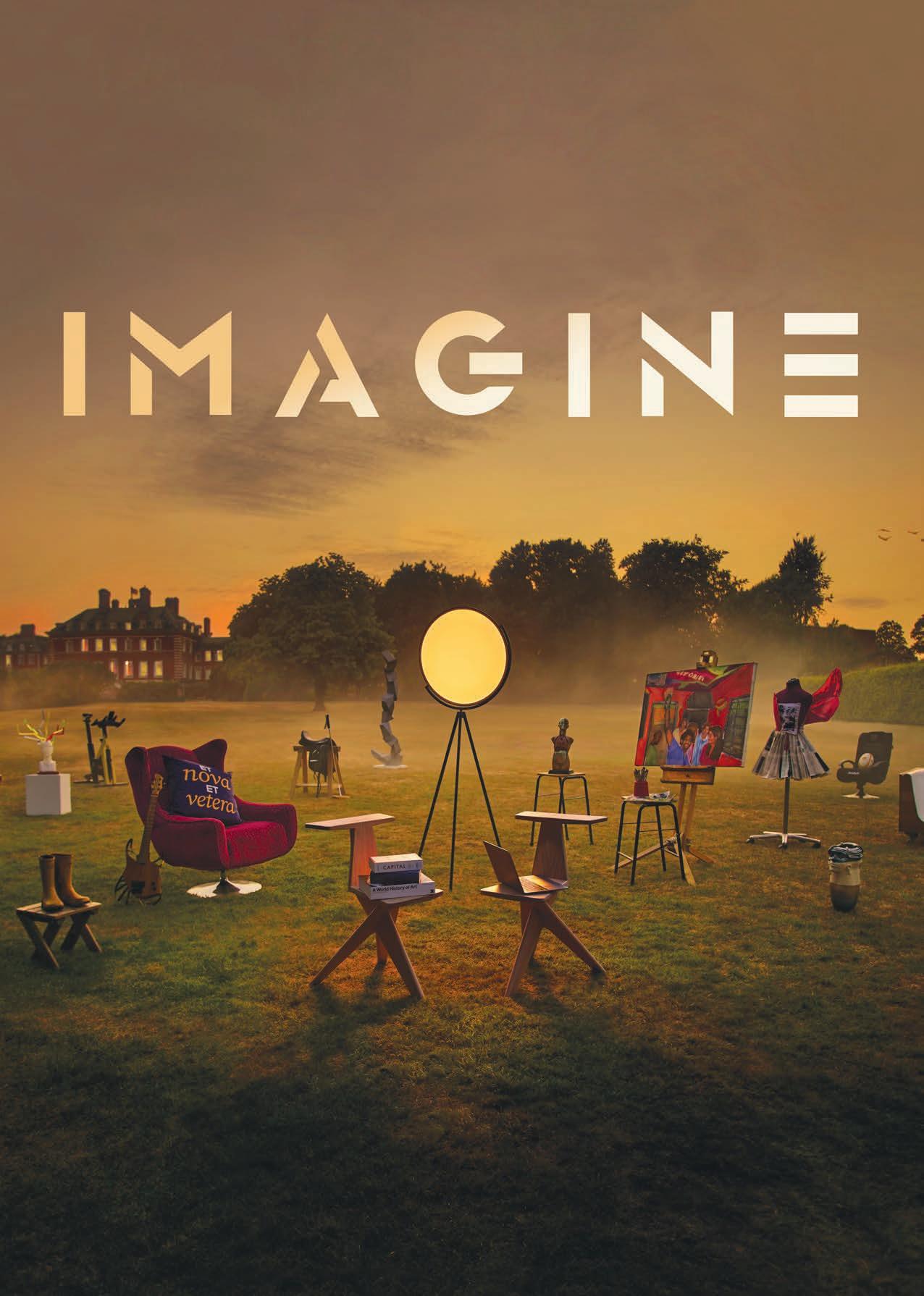
bryanston.co.uk/yourplace
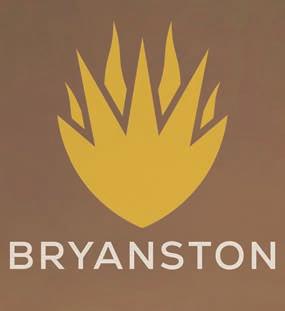
Talking HEAD



Partnership BENEFITS
As I write this, we are 48 hours post Sports Day, the milestone that rounds o the sports element of the Summer Term. It was, and always is, a magical day. The atmosphere is full of good humour and laughter, cheering and support. It brings the community together in a way that few other events across the entire calendar do. Sta and parents alike love the day – it is when we see our partnerships at their very best.
If only every day was like that. Of course, it is not. The relationship between teachers and parents is vital in making a child’s time at school a success. This applies to senior and prep, but I believe is more critical in the prep years due to the higher interaction between parents and teachers.

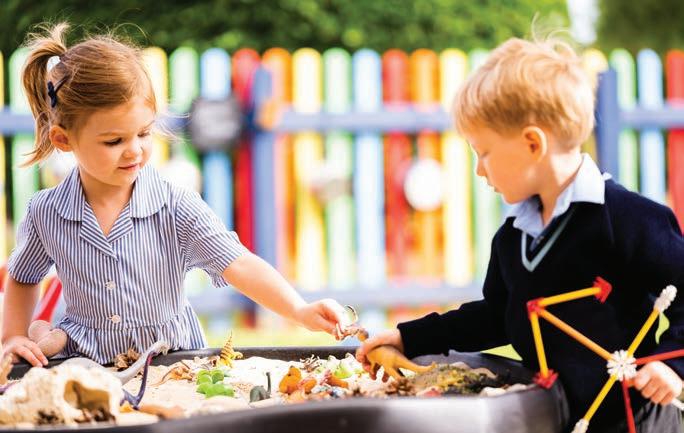
As a Head, my interactions with parents can cause great highs, and sometimes not insignificant lows. These tend to come from minor complaints, parents pushing boundaries too far, or the very aspirational parent not quite being of the same mind when it comes to senior school destinations. I am a robust individual who does not easily get stressed, but these interactions may take a lot of time to resolve positively. If I feel like that, no wonder many classroom teachers and members of the school management team feel it to a far greater degree.

Often there is a deficit mindset from parents and teachers towards each other. Teachers may not understand the anxiety that parents feel. As parents (and we have three of prep school age) we all want the very best for our children and we only get one shot at it. Therefore, we are anxious about future schools. This is especially true if we have little information about what goes on in school or our children come home and give us a version of events that is less than glowing. If teachers can appreciate these anxieties – this fear – they can empathise, and provide support and information that has a calming e ect. The fraught emails can be reduced.
Parents often underestimate how much teachers give to their students and how much they really do care about what the children are learning and how they are progressing. I have never met a teacher who didn’t want to do the very best job that they could. I have occasionally met teachers who lacked in some significant skillset, but never a teacher who didn’t care. If parents can appreciate the time, dedication and e ort that goes in to providing the very best for their children, communication becomes less fraught and conversations more productive.
The reality is that we are all on the same team, working towards the same goals. It is the responsibility of a Head to train their teachers on this issue and to help them to understand the reasons for parental anxiety. The Head should reassure parents that sta are delivering the very best that they can, and that they are always willing to listen to concerns and adjust where appropriate to do so. If there is a culture that is successfully cultivated around partnership, the conversations improve, the emails lessen and all of us can really focus on what is important – the children.
39
AUTUMN 2022 | ABSOLUTELY EDUCATION | FOCUS / TALKING HEAD
DAVID GRIFFITHS Headmaster Old Buckenham Hall
“If there is a culture that is successfully cultivated around partnership, the conversations improve, the emails lessen”
ABOVE & LEFT Old Buckenham Hall pupils
The Headmaster of Old Buckenham Hall in Su olk discusses how parents and schools ensure productive partnerships to the benefit of children
PHOTOS: TOM SOPER PHOTOGRAPHY

Sixth Form Information Evening Tuesday 15th November 6:00 - 9:00pm
Talking HEAD
Positive shift
Creative departments so often showcase what matters to young people today. If you walk through our Art department right now, the impact of Black Lives Matter (BLM) and Everyone’s Invited (EI) are evident. In our photography rooms are images of protestors and signposts with words like ‘She just wanted to walk home safely’. If you make your way into our Sixth Form art studio you will see displays of A-level artwork, with students proudly displaying their own faces with Jamaican, Nigerian and Gambian flags superimposed across them.
Fuelled by movements like BLM and EI, and by the fluency of their IT skills, young people feel more entitled to share their opinions on any topic important to them. While standing up for one’s beliefs
ABOVE Students at St Margaret’s
eliciting views – questionnaires, pupil focus groups and bystander training to inspire even the most reticent child to speak up. Schools are having to continually find new ways of leaning into conversations so they encourage pupils to talk more.

is admirable, not all of this has been positive. PSHE programmes and pastoral sta are having to coach children in how to convey their thoughts respectfully. The impact will have been felt across all classrooms, especially in English and RS lessons, but we schools are also listening harder. Regular drop-in sessions with Headteachers have been commonplace for many years, but so too other ways of
Issues around feeling safe have had a much sharper focus since the EI movement. At St Margaret’s we have thought hard about this and have asked pupils to physically draw onto site maps where they feel safe and where they feel vulnerable so that we can adapt our common spaces and our duty system. Further emphasis on how to handle intimate relationships as children get older has been important too, always explored in a way that is clear, open and respectful.
PSHE now has more time and energy dedicated to it and is part of joined up thinking across all that we do. This includes the reflections of pastoral sta and the
LARA PECHARD Head St Margaret’s School
support-driven parent events that sit alongside our work with young people. As ever, keeping up as parents is not easy. Strong pastoral settings in school are providing parents with help on how to navigate and best encourage and support their children. This term we are running a follow up to previous parental pastoral webinars and events. It’s entitled: ‘What your teenager wants to tell you but can’t’. Like many schools, we are looking hard at how we can ensure our sta and governors reflect our community. Allowing pupils to run with societies that are important to them – whether it is the LGBTQ+ group or a faith service of their choice – is also important. In this regard, things have shifted irreversibly for the good. Thankfully, schools are thinking about how to help young people in a positive way rather than simply reacting to events.
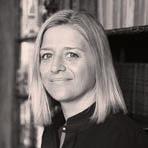
41
FOCUS / TALKING HEAD
The Head of St Margaret’s reflects on the impact of recent social and political movements, seeing positive shifts in the way schools now listen to the student voice
“As ever, keeping up as parents is not easy – strong pastoral settings in school provide help on how to navigate and best support children”
AUTUMN 2022 | ABSOLUTELY EDUCATION |
LEARNING TO SUCCEED
Rudyard Kipling talked of treating the ‘two imposters’ of triumph and disaster ‘just the same’. During my time at school, as a dyslexic, I learnt this was not as clear cut or as easily achievable as the poet had suggested.On the one hand, I vividly remember struggling to read aloud in Latin whilst contending with the ridicule of peers and classmates (reading in English was challenging enough in those days). Equally, if you put me on the rugby pitch or gave me a complex military-style
to ‘special educational needs’, we prefer to say that our pupils have ‘unique learning profiles’. It’s perhaps ironic that another term often used to describe dyslexia is ‘word blindness’, yet it is the use of positive words and language that is the first step to start to change the mindset and allow people to ‘see’ what a gift it can be.
Being dyslexic means that you have a nervous system that works di erently and there are remarkable advantages to having a brain that works in this way. As the Founder of Cavendish Education – a rapidly growing family of 12 schools for pupils with unique learning profiles – I see a
may not be linear and, equally, the gifts that our pupils have are also unique. For Einstein, it was physics; for Disney, it was art; for Branson, it was business. As such, what we do know is that the narrow and straitjacketed mainstream education system does not work for our pupils.
At Cavendish Education, we are passionate in the belief that learning di erences should not be a barrier to our pupils’ success or to their future careers. Our unique schools carefully provide an academic and pastoral experience in a mainstream-style setting, but with specialist support to enable young people to succeed.
The extraordinary stories of our pupils speak for themselves. I am constantly blown away by what these young people can do; they are so talented and we are just giving them a window to show the world how much they can achieve. Every day they inspire me and my sta . They are blessed with the ability to ‘think di erently’ and we are blessed to work with them.
command task, I was able to see the gaps, angles and solutions, unlike many others.
What is clear today is that dyslexia is most definitely a superpower that has propelled my career, as it has done for many others, including famous actors, musicians, entrepreneurs, inventors, sporting celebrities and scientists. What is sad though is that we have failed to dispel the stigma attached to dyslexia and ‘thinking di erently’.
When I see reference made to people ‘su ering’ from dyslexia’ (though I clearly understand the challenges that it presents) I disagree – preferring to think of it as a ‘blessing’. While the education sector refers
vital part of my role as trying to re-address these misconceptions in our society. Our mission is that all of our pupils will progress onto further or higher education or into employment and so far, since inception in 2013, we have been able to achieve this.
I see no reason why any of our pupils cannot maintain this fabulous outcome. This is what we call the 4Cs. We start early and equip our young people with bags of ‘confidence’ in a ‘creative’ way so that they leave us as ‘competent’ individuals who are full of ‘character’. It is no surprise that we are seeing record applications for places at our schools.
The educational pathway for our pupils
Cavendish Education opened two new Prep Schools in September – Abingdon House in South Kensington and Burlington House Prep in Fulham (see page 75).

42
Aatif Hassan of Cavendish Education on the unique gifts that its family of schools celebrate and nurture to ensure children who ‘think di erently’ will succeed
AATIF HASSAN Founder and Chairman, Cavendish Education
“Our mission is that all of our pupils will progress onto further or higher education or into employment, and so far we have been able to achieve this”
| ABSOLUTELY EDUCATION | AUTUMN 2022

43 ABOVE A Cavendish Education pupil FOCUS / INSIDER AUTUMN 2022 | ABSOLUTELY EDUCATION |















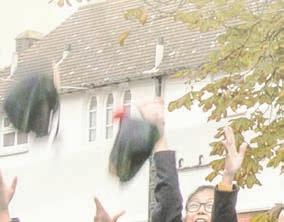






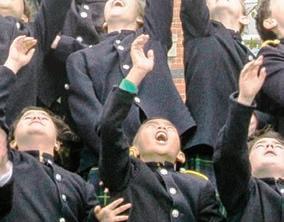
















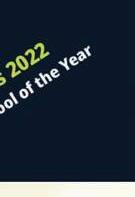


GORDON’S SCHOOL Years 7, 9 and 12 boarding places available. BOARDING IN SURREY For Open Events, please see website www.gordons.school ‘Studentswhoattendtheboardingschoolprovisionexceedtheir predictedoutcomesandconsistentlyreach,andfurther,theirpotential’ OFSTED BOARDING INSPECTION REPORT 2019 BESPOKE RESIDENTIAL BOARDING HOUSE FOR YEAR 7 STUDENTS CLOSE TO LONDON AND ITS AIRPORTS BY ROAD AND RAIL
Talking HEAD

Breaking news
Sarah Glencross, the new Head of Redcli e Gardens School, examines how to discuss upsetting news stories, particularly with younger children.
The death of The Queen, the war in Ukraine, climate change, costof-living crisis – today’s breaking news headlines are worrying for us all but can be particularly frightening for younger children if not handled sensitively. Developing an understanding of world events and global issues is an important part of a good education, but current a airs and political threats need to be discussed in an age-appropriate way.
Many schools use assemblies or ‘circle time’ to talk about news-related topics.
Secondary school students have exposure to news at home and, of course, via their smartphones and social media channels, and increasingly schools are having to provide students with workshops on how to spot ‘fake’ news. These encourage students to evaluate news sources and examine why governments or organisations might want to spread false information.
Students might be encouraged to have an open classroom discussion and to explore topics from di erent angles and di erent points of view. For example, the recent death of the Queen can be placed in a historical context and perhaps can open up debate into the role of the monarchy.
These concepts are likely to be a little too sophisticated for the younger prep school pupils. They will relate more closely to the very moving images of Prince George and Princess Charlotte at the funeral. Quite often these issues dovetail closely with a school’s PSHE (personal, social,



health and economic education) programme and can be approached from a pastoral care and emotional wellbeing perspective. This might entail happiness and wellbeing projects such as ‘Think Positive’ and ‘Time for Laughter’, providing ‘worry’ buckets for pupils to share their concerns and, when appropriate, speaking to children individually and providing them with comfort and reassurance.
Whatever the age of the students, combatting any feeling of helplessness is very important and finding a way for pupils to respond positively to a crisis can be mutually beneficial. Fundraising is an excellent way to provide ageappropriate information and to help children engage positively with global issues. For instance, recently we saw many schools in the UK fundraise considerable amounts to support Ukrainian refugees. At Redcli e, students, sta and parents supported the Refugee Response programme run
by the local church to provide refugees and asylum seekers with hot meals and English lessons.
In March, we were lucky enough to have a visit from His Royal Highness, King Charles III, who came to learn first hand about the important work the church was doing.
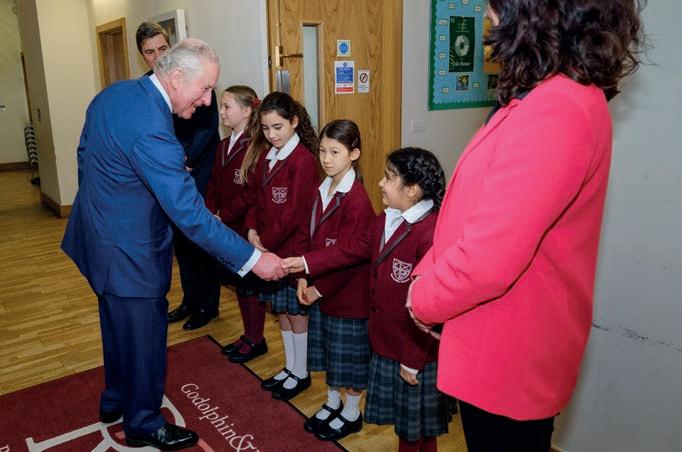
Environment is another area where schools are doing fantastic work in harnessing students’ energy and passion into positive action. Many schools run schemes to discourage car use for the school run, promote recycling, cultivate their own vegetables and plant trees.
For younger children there are age-appropriate news resources, such as The Week and BBC’s Newsround, which can be invaluable. But being in a smaller school where teachers can quickly spot and step in if a pupil is upset can also really help. Sometimes just taking time to really listen to a child’s concerns and letting them know that it is OK to be worried is what is needed most.
45
FOCUS / TALKING HEAD
SARAH GLENCROSS Head , Redcliffe Gardens School
“Combatting any feeling of helplessness is important and fi nding a way to respond positively can be mutually beneficial”
ABOVE King Charles visited Redcli e Gardens in March
AUTUMN 2022 | ABSOLUTELY EDUCATION |

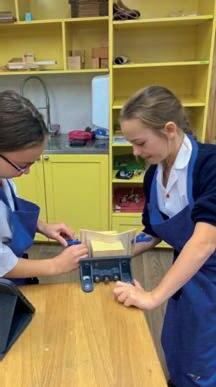

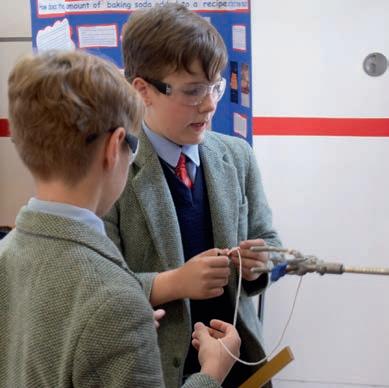



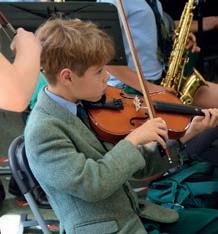




















BE YOUR BEST at our excellent pre-prep and prep schools Upper School Girls 8-13 years 68-74 NIGHTINGALE LANE, SW12 8NR FINALIST School of the Year 2021 for Student Well-Being Lower School Co-educational 4-8 years THE VICARAGE - 192 RAMSDEN RD, SW12 8RQ 50 NIGHTINGALE LANE, SW12 8TE FINALIST Pre-Prep School of the Year 2021 Boys 8-13 years 26 BOLINGBROKE GROVE, SW11 6EL FINALIST Prep School of the Year 2021 Pastorally kind Academically ambitious www.northwoodschools.com Admissions@northwoodschools.com Tel 020 8682 8830 Regular small group Friday tours Private tours available Shortlisted for SIX Independent School of the Year Awards for 2022: Pre-Prep of the Year Prep of the Year Outstanding New Initiative Student Well-Being (x2) Unsung Hero of the Year Rated EXCELLENT in the recent ISI inspection for all three schools (May 22)

47 PrepTIME TO SIGN P 58 MEDICINE MAN: DR RANJ SINGH P 66 CLIMATE HOPE P 78 BOARDING SUCCESS P 83 SCIENCE ADVENTURES A pupil at Broomwood Hall Lower School Page 48 AUTUMN 2022 | ABSOLUTELY EDUCATION |
SCIENCE
Scientists are our hope for the future, so how do schools bring STEM to life and give young people the practical skills and creativity they need to take their skills and knowledge further? Absolutely Education investigates
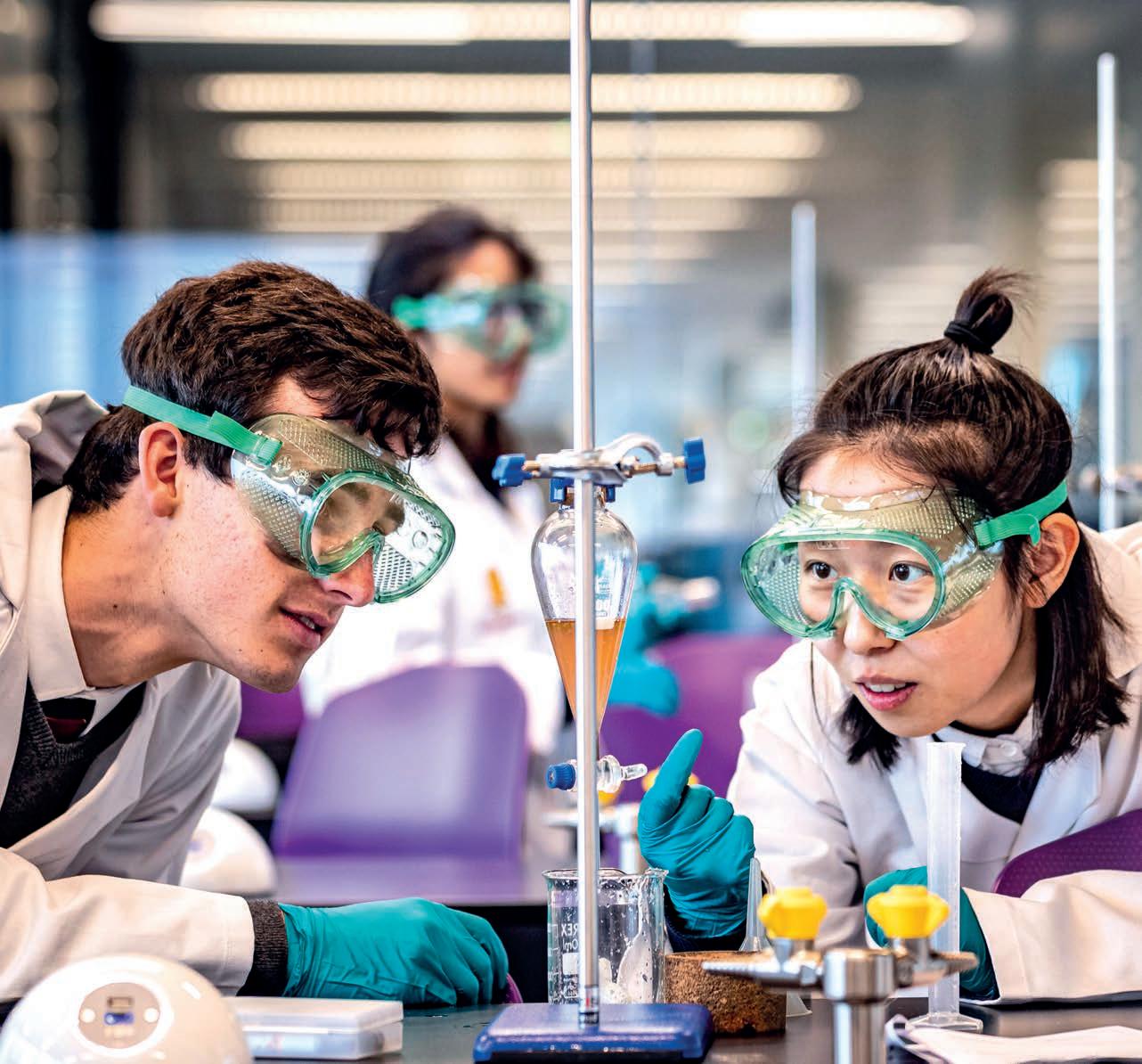
48 INVENTIVE
ABOVE Experiments at Brighton College | ABSOLUTELY EDUCATION | AUTUMN 2022
Northwood Schools
At Northwood Schools, science is central. The four linked schools – Broomwood Hall Lower and Upper, Northcote Lodge and Northwood Senior – give students extensive access to both facilities and expertise from the early years. There are three labs across the prep schools, plus a dedicated Design and Technology space with state-of-the-art machinery.

Immersive and hands-on are the order of the day here from the start. So, whether it’s digging in dirt, steaming wood or designing and building a bridge, the aim is always to feed curiosity and teach practical investigative skills. For instance, at Northcote Lodge, the science fair tasks boys to create a hypothesis then conduct a suitable experiment, write up the results and present findings to visiting judges from Northwood Senior.
The schools run dissection clubs to enable children to understand the intricacies of biology, bringing science to life with real organs. Children also design and build rockets and bridges to put engineering and physics to the test. Visiting scientists and engineers give talks and there are trips to exciting museums – the Old Operating Museum and Science Museum among them – as well as science days at senior schools.

Northwood Schools believes in the power of cross-curricular learning – whether it’s
building buggies in DT or Rube Goldberg instructions in Art or Lego robots and 3D designs in Computing. During book week the science labs become hives of Harry Potter potions and there’s a wildly popular and deadly serious crosscurricular CSI day at Northwood Senior.
At this grisly science event, students solve a ‘whodunnit’ using blood spatter analysis, fingerprinting, hair analysis and chromatography – even working out the height of the culprit from shoe sizes.
St Catherine’s, Bramley
At St Catherine’s, Bramley, there are nine fully equipped Science Labs in the Senior School and a new (opened 2019) WonderLab in the Prep. With these excellent facilities, the school takes its work beyond the school gates too, running ‘Super Science Summer Workshops’ for children aged 8-10 from a local state school. The children join St Catherine’s science teachers and Lower 6 science mentors in the WonderLab to get hands on, building flying machines, exploring materials using slime and
investigating life through maggots.
St Catherine’s Sixth Form girls thinking of STEM degrees and careers can join a four-term engineering project involving the technical build of a Lotus ‘Seven’ kit car. This project gives them the opportunity to explore construction materials, mechanics and suspension geometry, as well as engine technology. Blended study is also a feature here. For instance, one current student is studying Computer Science, Art and Maths at A level, along the way exploring concepts of control and communication in Art inspired by Tony Oursler and Jim Campbell. She is heading on to study Mechanical Engineering and Mechatronics.
There are clubs for the individual sciences and this year students entered the British Physics Olympiad experimental challenge. A large group of Sixth Form students recently took part in the Schools’ Analyst Competition in Chemistry, working in teams to use four analytical techniques and find the best ingredients for fish and chips! Live science events are designed to be fun. For the Physics Rollercoaster, U5 girls go to Thorpe Park. They experience the rides but are also set tough challenges
49 PREP / SCIENCE
ABOVE Human biology explained at Northwood Schools
BELOW Up close science at St Catherine’s, Bramley
“Whether it’s digging in dirt or dissection, the aim at Northwood Schools is to feed curiosity and build investigative skills”
AUTUMN 2022 | ABSOLUTELY EDUCATION |
by the school’s Head of Physics – from the transfer of potential energy to kinetic energy, gravity, velocity and speed.
St Catherine’s Sixth Formers will visit CERN Control Centre in 2023 (following on from the last trip of 2019) to see the Large Hadron Collider. Closer to home, L6 psychologists had the opportunity for a behind-the-scenes visit to meet St Catherine’s alumna and director of the Wellcome Centre for Human Neuroimaging Professor Cathy Price. They were able to see the world’s most advanced brain scanner to date – the OPM – and understand more about how it uses magnetic fields. Researchers expect this to be the next leap for brain scanning technology because it can scan people’s brains while they are mobile.
Oakham School
At Oakham, there’s a a ‘hands on’ approach to learning science subjects and using methods which challenge students’ thinking, as well as developing creative and technical skills. With state-of-the-art spaces and labs, STEM core subjects are taught from Year 6 onwards.

Inquiry-based projects are introduced early on using the FOSIL framework, which encourages pupils to investigate topics and theories for themselves.
ABOVE
Tim Weston, Head of Design and Technology at Oakham School, says: “A great thing about our STEM subjects is that they all have experimental aspects which pupils really respond well to”. He says one thing students enjoy is the idea that nothing is ever completed – it can always be improved. “It keeps them coming back to a piece of work or a theory and seeing how they can progress it further.”
Showing links and overlaps between subjects encourages engagement and horizontal curriculums help to identify when content and skills can be developed further. Leo Dudin, Deputy Head Academic at Oakham, says it’s about encouraging pupils to “think creatively, critically and reflectively” in all areas. “In Years 7–9 our curriculum is based around the acclaimed IB Middle Years Programme,” he adds. “The IB MYPaddresses our pupils’ intellectual, social, emotional and physical wellbeing and gives them the opportunities to develop the knowledge, attitudes and
skills they need to manage complexity.” Collaborations between Art and Biology –and even DT, Biology and History to review the history of medical devices in World War I – show how this cross-disciplinary learning can work to enrich learning in multiple disciplines. That project included a talk by BLESMA, an armed forces charity for limbless veterans. Students were then tasked to design key medical devices that might be used to evacuate casualties.
Students have opportunities to participate in a wide range of challenges and extracurricular projects. For instance, groups have participated in the TeenTech Awards, the Middle School take part in the UK-wide Biology Challenge and the Sixth Form compete in Biology, Chemistry and Physics Olympiads. School science clubs are a mainstay, and the school o ers the Physics Gold CREST.
In the Upper School, Oakham supports the extension of ideas through multiple science societies and activities such as

50
“At Oakham School in Rutland, a focus on cross-disciplinary learning works brilliantly to enrich students’ understanding across multiple disciplines”
Firing imaginations at Brighton College BELOW
Understanding bones at St Catherine’s, Bramley
| ABSOLUTELY EDUCATION | AUTUMN 2022
film nights and quizzes. Further Biology, Chemistry and Physics sessions are o ered, along with specialist groups. For instance, DocSoc is a long-established group to support aspiring health care professionals. Another project available to 16+ pupils is the Industrial Cadets Gold Award, which sees pupils working on real-life problems with a company. Students have the opportunity to engage first hand with mentors in projects led by industry experts.
Brighton College
Recently named Top School in Britain for STEM subjects by The Week magazine, Brighton College has long been a pioneer of progressive science teaching, linking subjects in inspiring ways. The Week noted that: ‘Its stunning new School of Science and Sport is evidence of its commitment’.



Designed by OMA architecture practice, the building includes 18 universitystandard labs, breakout spaces, ‘bio lab’ greenhouse on the roof and cinema-style auditorium for live science events.
The school, which o ers co-education for ages 3-18, has a science-led approach from the start. Specialist teaching begins in prep years, and by the time students step up to senior level, they cover the three core sciences separately, along with related learning in IT, Coding and DT.
Beyond the curriculum, there’s a full suite of clubs and activities – from Medical Society and Dissection Club to Physics Crest, Sound Recording, Lego Robotics and Games Programming. The Women in STEM webinar series, featuring events with female academics, was launched late year by Heather Justice, Software Engineer and Mars Rover Driver at NASA’s Jet Propulsion Laboratory in California. This series was also opened to girls at local state schools.
Every type of STEM competition is entered by pupils – major awards include the British Physics Olympiad and the Corpus Christi College Schools Science Prize for Materials Science. Students have also attended the International Olympiad on Astronomy competition in India and every year a team compete in the FIRST Robotics Competition in Turkey.
51
“There’s a full suite of clubs and activities at Brighton College, from Medical Society to Lego Robotics and Games Programming”
PREP / SCIENCE
RIGHT
Dissection at
Brighton
College BELOW Practial investigation at Oakham School AUTUMN 2022 | ABSOLUTELY EDUCATION |

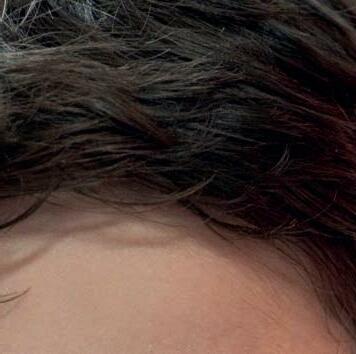


















North Bridge House North Bridge House is on a constant journey of getting to know and understand every child as an individual, realising their true academic and personal potential through specialist provision at every school stage. Top 20 London Nursery, 54% Grade 7+ at GCSE, Russell Group destinations Apply now at northbridgehouse.com or call 020 7428 1520 to find out more. NURSERY & PRE-PREP WEST HAMPSTEAD 2 - 7 YEARS NURSERY & PRE-PREP HAMPSTEAD 2 - 7 YEARS PREP SCHOOL REGENT’S PARK 4 - 13 YEARS SENIOR HAMPSTEAD 11 - 16 YEARS SENIOR CANONBURY 11 - 18 YEARS Apply by 25 Nov for Sept 2023 entry
Mayfield School
At Mayfield School, science is brought to life in a variety of ways and with emphasis on interdisciplinary thinking, problem solving and teamwork. For instance, in Year 7 and 8 the school runs a themed cross-curricular day each term. “Girls are taken o timetable to explore topics in greater depth and bring to life the links between subjects,” says Head of Lower School Claire Baker. Recent examples have included Earth Day, Moon Camp, Code Breaking, and the Cookie Project.
During the two-day Moon Camp, girls worked as a team to design and pitch an idea for a base on the Moon. “Each member of the group took on di erent responsibilities and aspects of the challenge, with some conducting scientific experiments to evaluate window designs to withstand the lunar environment, and then exploring the challenges of living, working, eating and exercising in a low gravity
environment,” adds Claire Baker.
Some girls used 3D CAD software to create a model of part of their moon base, while a third sub-group used their creative skills to produce artwork and logos to build a brand identity. Girls learned about communication and teamwork and finally had to pitch their proposed Moon Camp to a panel of judges. Events such as this, bring the curriculum to life and help students to develop their soft skills, as well as their scientific knowledge.
As girls progress, so does the level and pace of scientific challenges. The school’s Innovate programme, led by David Warren, was introduced in 2019 for Year 9 girls. For their first project, students develop a prototype electronic device to help tackle the challenges presented by a climate or environmental issue. For the second project, they use 3D design and manufacturing to create something to combat a real-world issue. This might be, for instance, a product to assist those

with a disability or medical condition.
At Sixth Form, Maths and Sciences are the most popular A-level subjects. Head of Sixth Form John Doy says almost half the current cohort of 60 are going on to study maths- or science-based courses. Mayfield encourages girls to think about science, whatever their ultimate goal, and many choose eclectic A-level combinations – for instance Chemistry and Ceramics. Such choices can be career enhancing and rewarding. One recent alumna, now studying Engineering at Cambridge, produced an A-level project for Art that evolved from a set of scientific drawings of flora and fauna.

Reed’s School
Located in Cobham, Reed’s o ers a wealth of science facilities for its students, with 16 science laboratories. There’s also the school’s flagship FutureTech building, a multi-use facility supporting the STEM programme. It contains an electronics studio, computer suite and workshops for DT.
The school takes that view that, since pupils’ lives are far more dominated by technology than in the past, the curriculum must reflect that reality. FutureTech recognises the importance of these emerging technologies. Along with the three traditional sciences, Reed’s o ers a triple set of technology subjects – Computing, Electronics and Engineering at GCSE.
A FutureTech programme is embedded within the curriculum – all Year 9 pupils experience a wide range of cross-curricula STEM topics that improve practical and problem-solving skills. The course covers six topics, which vary annually but have included areas such as Robotics using the Vex IQ, Coding with Sphero, Engineering of Airplanes, Building the Modern Home, and Technology in the Tour
53 PREP / SCIENCE
“During the twoday Moon Camp, Mayfield girls worked together as a team to design and pitch an idea for designing a base on the Moon”
ABOVE Reed’s students have a wealth of science facilities
TOP RIGHT Mayfield pupils solve a technical challenge
AUTUMN 2022 | ABSOLUTELY EDUCATION |
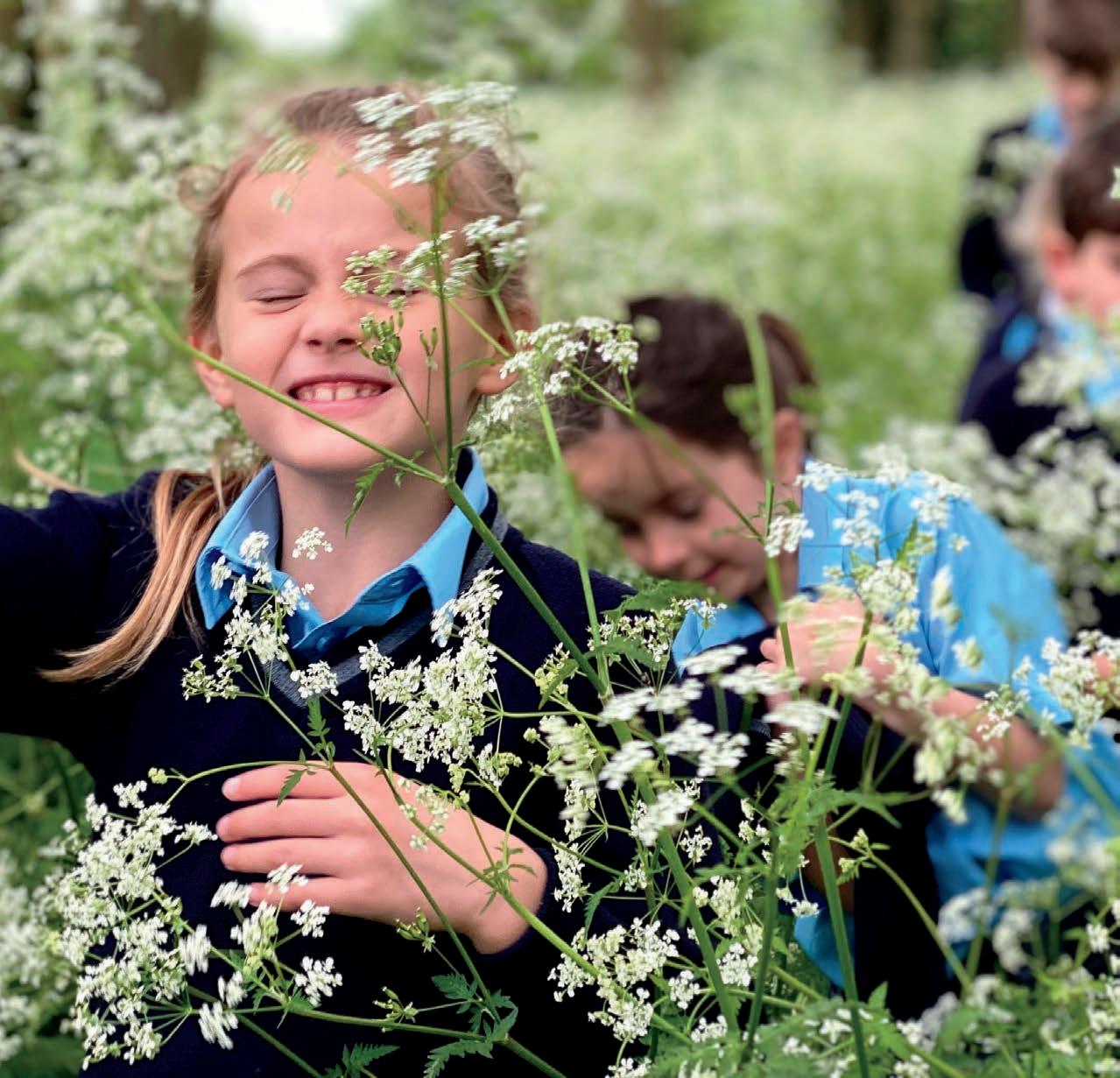

A leading co-educational preparatory school for children aged 3-13 years @obhschool @OBHschool @OBHschool www.obh.co.uk admissions@obh.co.uk 01449 740252 Brettenham Park, Suffolk IP7 7PH OLD BUCKENHAM HALL ere, children remain just that. They experience, they learn, they grow, but they do so within one of the most idyllic environments imaginable. H
de France. The topics not only engage pupils with ‘real world’ applications, but also foster independent learning and bring an exciting glimpse into subjects not o ered at GCSE and A level. Lectures from external STEM experts extend knowledge and understanding and are shared with students across the school.

The extracurricular programme at the school includes clubs such as Robotics, Greenpower Challenge, McLaren Challenge, Land Rover 4x4 challenge and Technology. At Engineering Club, Sixth Form students have the opportunity to conduct a series of engineering projects and activities to prepare them for a variety of university courses. There are plenty of other opportunities for Reed’s pupils to experience live science. The Bebras Computational Thinking Challenge is entered by all pupils in Years 7 to 9. There are visits to Bletchley Park and science Olympiads to provide academic stretch. The school also enters Surrey SATRO – challenges using knowledge from across the STEM curriculum. Reed’s students are regular visitors to outside centres of excellence, including the Royal Institution in London and the Rutherford Appleton Labs at Oxford.
St Dunstan’s College
St Dunstan’s has a long tradition of investing in science – its original school governors wished it to ‘have special reference to technical education’. This was in 1888, a time when most public schools focused on Latin and Greek. It soon earned endorsements and was visited by delegations who wanted to learn more about its unique approach.
Fast forward to the 21st century and the investment continues, with the new stateof-the-art STEM Centre for Excellence and Innovation. Students from Year 7 onwards receive specialist teaching in Biology, Chemistry, Physics, and Design Engineering. It includes practical resources for active science projects and experiments, each with a full-time technician attached to assist in theheuristic(hands-on) approach the school still favours for teaching STEM subjects.
Mathematics is housed within the STEM Centre to facilitate cross-curricular projects, which always come to the fore during the St Dunstan’s Festivalfortnight at the end of each academic year. This is when students go ‘o -piste’ with quirky project-based learning that bridges di erent subjects. “A key outcome for STEM education at St Dunstan’s is for students to realise the ‘live’ nature of these subjects, and for them to become
scientists, engineers, and mathematicians actuallydoingthesciencein a practical way,” says Deputy Head Academic Jonathan Holmes. He adds that the freedom o ered as an independent school, in particular for Years 7-9, is an opportunity to challenge young people to discover how their knowledge links back to the real world.
St Dunstan’s supports enthusiasm for science with conventions and events. It recently held its first ‘Where can mathematics take you?’ careers event, drawing in an array of industries – from finance and architecture to digital music and games development. There are plenty of external trips and events to reinforce the relevance of STEM – from a Year 8 Chemistry trip to the L’Oréal Institute to learn about commercial materials science to trips to London Zoo for zoological clubs. The Biology Department’s in-house animal science club is also hugely popular, with students caring for live animals as part of their extended learning.

55AUTUMN 2022 | ABSOLUTELY EDUCATION |
“Reed’s flagship FutureTech building is a multi-use facility supporting STEM, and contains an electronics studio, computer suite and workshops for DT”
LEFT & RIGHT St Dunstan’s College has a long tradition in science teaching and a cross-curricular approach
PREP / SCIENCE

HEAD
Child-led LEARNING
Liz Brown, Headteacher of Reflections Nursery, on the history and guiding philosophy of its Reggio Emilia approach to Early Years education




Unlike Montessori, the Reggio Emilia approach is not well known in the UK. Pioneered in Emilia Romagna, northern Italy after World War II, it is now gaining popularity worldwide. Reflections Nursery and Small School is an early adopter – one of the only Reggio School settings in the UK.

Loris Malaguzzi was a young teacher when he met a group of women determined to build a school. It grew from a shared ethos that the next generation, their children, would grow up as free thinkers who would fight against injustice and inequality. Malaguzzi joined the women and became instrumental in the development of the Reggio Emilia approach.
It is a democratic educational construct where educators and children are partners in the learning process. At its core was Malaguzzi’s belief that social learning precedes cognitive development, so environment has a key role to play in the process of learning, as well as creativity. The seven key principles include an ‘emergent curriculum’ based on the child’s individual experiences and interests. There is a focus on community and teachers are partners. Children’s learning is documented, and parental participation is vital.
At Reflections, our approach is rooted in Malaguzzi’s belief that all children are capable thinkers and learners as well as creative communicators and conversationalists. The possibilities for their ‘languages’ include drama, painting, dancing, playing, questioning, singing, dreaming and experimenting.
The environment is our third teacher, a space for providing numerous opportunities and experiences.
In one of our Ateliers you may find resources such as light boxes, digital overhead projectors and ‘provocations’, in the form of objects that inspire children to question and create theories between themselves. We allow the children to follow a self-guided curriculum.
The principles of respect, responsibility and community
are promoted. Children work in small groups and the adult will o er open-ended questions or discussions – allowing the children to teach each other. This develops children’s ability to research, listen to opinions and develop confidence in sharing their own ideas.
Children develop their own theories to make sense of the world and we explore these theories together. We listen to their ideas and take them seriously – and facilitate their research through ‘project work’. Whereas topic work is planned by adults, and with a determined outcome, project work is guided by children’s own interests and questions. We document these projects with notes and photos to show the children, other educators, and parents. This tells the story of the project and gives the children authorship of their work.
At Reflections, we see the Reggio Emilia philosophy during these early childhood years as an approach that can embed the foundations for learning and, in turn, shape how children proceed through their educational journey.
These foundations enable them to become capable and curious learners for life.

57 Talking
PREP / TALKING HEAD
LIZ BROWN, Headteacher, Reflections Nursery and Small School
“Malaguzzi believed that social learning precedes cognitive development –environment plays a key role in learning”
ABOVE Exploring at Refl ections Nursery
AUTUMN 2022 | ABSOLUTELY EDUCATION |

58
“Little people often have big feelings, and the goal of baby signing isn’t to get rid of those feelings but to help them better communicate them”
| ABSOLUTELY EDUCATION | AUTUMN 2022
LEFT Baby signing helps children to engage with you and supports their development

TIME to SIGN
 RACHEL HOGG
RACHEL HOGG
Picture this, you are taking your baby to the park, and you tell them this by using the signs for ‘walk’ and ‘park’. Your baby keeps signing back to you the words ‘cat’ and ‘bed’ and at first you think they have misunderstood. But then you remember that this time last week, when you were heading along this same road, you saw a cat sleeping on a wall. Your baby has remembered that encounter and wanted to share the memory. This was, in fact, a real experience between a mum and a baby and illustrates just how rewarding baby signing can be. The experts say it’s a tool capable of opening up dialogue between parents and children well before spoken conversation begins.
It is important to distinguish ‘baby signing’ from ‘sign language’. British Sign Language (BSL) is specific to the deaf community and is a complete language in its own right. Baby signing, on the other hand, is the use of gestures with spoken language. It is not meant as a substitute for the spoken word, but rather as a means of supporting language and helping young children engage with their world. Baby signing involves parents using a limited number of simple gestures to support words as they are spoken. This underpins the natural development of your child’s speech.
Baby signing today has its roots in the US and is generally acknowledged to have started with the work of Dr Joseph Garcia (then an American Sign Language interpreter). He noticed that children of deaf friends who used ASL communicated by six months old. A similar concept was pursued by two University of California academics in the 1990s, Dr Linda Acredolo and Dr Susan Goodywn. They spent some 20 years developing an impressive body of evidence and techniques for baby signing. Here in the UK, baby signing has found many champions. Sasha Felix developed one of the first parent programmes, Sing and Sign, some 20 years ago. This has now introduced thousands of families to baby signing using music.
59 PREP / LANGUAGE
Baby signing is a way to open up conversation with your child before they can talk – and with potential benefits that last beyond infancy
AUTUMN 2022 | ABSOLUTELY EDUCATION |
Baby signing does not require a huge investment of time and nor does it feel like an imposition. Gesturing when we speak is something most of us do instinctively. Baby signing also acts as a natural extension of children’s own gestural stage, which is an important part of speech and language acquisition in early years.
You can get started by reading books or watching online videos, but a popular (and social) option is to attend in-person classes with your baby. Whatever route you choose, once you have started to pick up the basics it’s easy to implement these throughout your daily life. Armed with this new simple language of gestures, you then pass on these communication tools to your child.
A popular age to start implementing baby signing is around 6 months – once an infant can sit up and use their hands to sign things out. Sasha Felix believes this is the best age to start, but some parents are keen to get going even earlier. Baby signing does
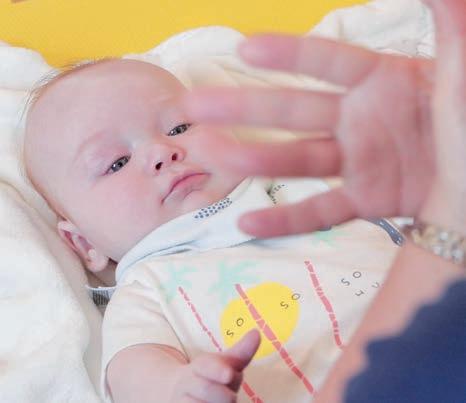

not interfere with your child’s natural speech development. Once your child becomes verbal, they will typically start to phase out their signing. That said, children may still continue to include a sign for emphasis, out of habit or when they are being particularly insistent.



FAMILY BENEFITS
The broader goal of baby signing is to help families to communicate, and the benefits are felt by parents and children alike. For parents, it is a good way of learning how to speak clearly and communicate words and concepts at a level infants can understand. It also gives vital, and fascinating insight into how children navigate the world. “It means they can communicate so much of what they are seeing, experiencing and feeling, so it’s a wonderful tool for bonding and getting to know your child”, says Sasha Felix.
While communication is the first goal, when a child has the opportunity and means to express their thoughts, feelings and desires this can also have a positive impact on behaviour. “I would never be so presumptuous as to say that it takes away the frustrations of a two-year-old,” says Sasha Felix. “Little people often have big feelings, and the goal of baby signing isn’t to get rid of those feelings but to help them better communicate them.”
So don’t expect a total absence of temper tantrums or meltdowns – there is no such

thing as a weak-willed twoyear-old. That said, arming them with extra communication skills does help with conflict deescalation. Children are likely to pause to respond, and may also feel more understood through the process of signing to you.
Another big benefit is that baby signing naturally kick-starts the process of learning to recognise and label feelings, which is an important step in developing emotional intelligence.

While learning to hold a conversation with someone still in nappies may seem strange at first, baby signing is fun for both sides and establishes an environment of positive communication from the earliest years. Families that implement these simple language tools often continue to feel the benefits long after their little ones have moved on from signing and grown into talkative young people.
For more about baby signing classes and resources, visit singandsign.co.uk
60
“Baby signing helps children to recognise and label feelings – also building emotional intelligence”
PREP / LANGUAGE
ABOVE Children typically phase out signing once they become verbal, but may still use it for emphasis
| ABSOLUTELY EDUCATION | AUTUMN 2022
IB ELIEVE


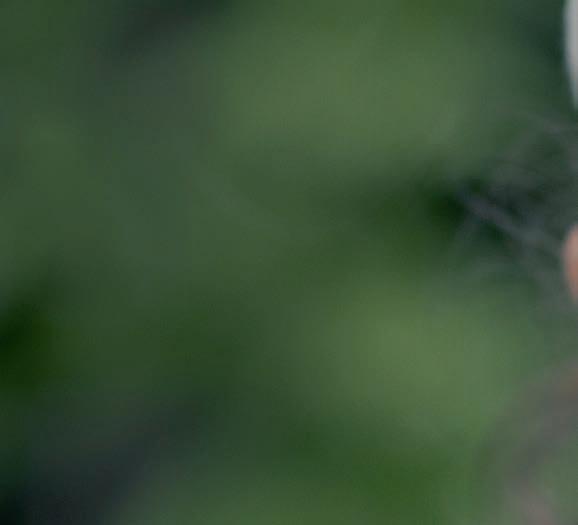


IN DOING THINGS DIFFERENTLY
Explore a different approach to academic excellence for children aged 3–18 years. One that unearths talents, celebrates individuality and helps students go on to the best universities in the world.

Places for 2023 entry are strictly limited. Apply now at southbank.org

Now Open

LEARNING CURVE

Julian Reed of The King Alfred School describes the positive impact of its interdisciplinary projects

There is a growing feeling that the current education model is failing our students as their needs, and ultimately the needs of employers, are shifting rapidly. By making learning more creative and challenging – and giving students more ownership – we can give them both a more rewarding school experience and invaluable foundations as they transition through secondary school and beyond.
At The King Alfred School the students in Year 7 have been reaping the benefit of curriculum changes inspired by education in Finland, Singapore and globally through the International Baccalaureate. A third of their timetable is dedicated to Interdisciplinary Enquiry (IE) projects, which bring together three subjects and use cross-curricular learning activities to answer overarching questions such as ‘How did early humans survive?’ or ‘Is space tourism ethical?’.
This approach requires students to apply skills and knowledge learnt in one discipline to the context of another, more closely mimicking the workplace and developing an approach which is the hallmark of a sophisticated cognitive level. Each project culminates in a miniexhibition or presentation. Parents and sta have been invited in to witness students presenting ‘communal identity’ collages, survival shelters, space research articles,
migration ‘zines’, slave trade memorials and microcrop-growing systems. These presentations provide impetus and an audience to the end of each project and give students a real sense of achievement as they learn to explain, reflect and take responsibility for their work.
Speakers and practical experiences help to enhance their learning and the outputs are often built around realworld situations. Speaking after the first IE finished, one student reflected: “I learnt a lot about collaboration and teamwork. It isn’t always easy, but we realised you don’t have to all be doing the same thing to make it work".
When students looked at the question ‘How do we feed an overpopulated world?’, they began with a Biology trip to Kew Gardens, where they participated in a workshop about reproduction and pollination. They then met an urban farmer who showed them how to plant pea
shoots before experimenting with di erent variables to increase yield and quality of crops (using Maths to work with the data). In Design Technology, students worked on designing and building structures to grow their crops in and learnt more about commerce by negotiating a deal with the school caterers to buy the resulting produce.
The learning experience better reflects the outside world, and so does the assessment process. Involving students in designing the success criteria, selfand peer-assessment means they are continually celebrating their progress and identifying areas for further improvement.
Our experience has been that the time students spend developing and assessing interdisciplinary academic skills gives them the tools and confidence to approach the next stage of their academic careers as curious, reflective and self-reliant learners.
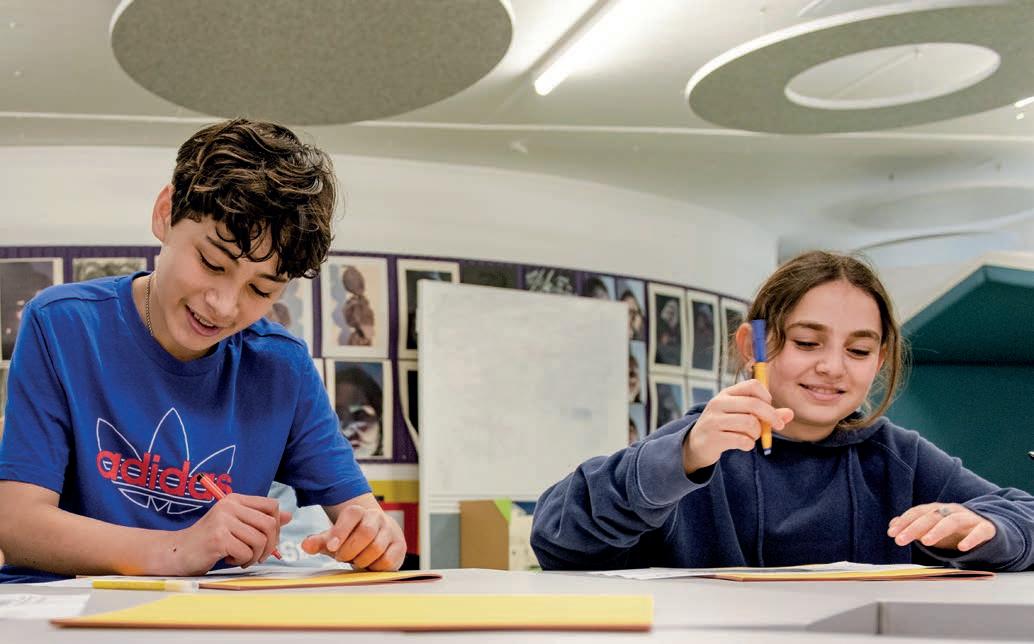
63
“Projects give a sense of achievement as students learn to reflect and take responsibility for their work”
JULIAN REED Assistant Head (Director of Years 6-8), The King Alfred School
PREP / OPINION
ABOVE Pupils at The King Alfred School
AUTUMN 2022 | ABSOLUTELY EDUCATION |










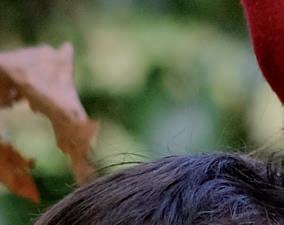









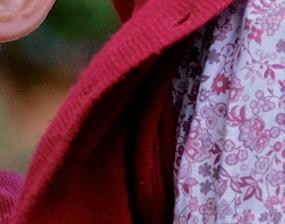











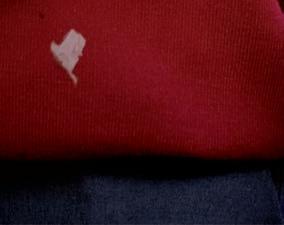




NURSERY AND PREP SCHOOL FOR BOYS AND GIRLS AGED 2½–11 "Exceent" ISI Inspection Report March 2022 DOUBLE 47 Redcliffe Gardens, London SW10 9JH office@redcliffeschool.com | 020 7352 9247 www.redcliffegardens.com BIG FAMILY. Book Online for a Personal Tour of our Nursery and Prep School @redcliffeschool SMALL SCHOOL.
HEAD
We need ambition
The new Headteacher of Kew Green Preparatory School, Sasha Davies, argues that it’s vital to celebrate ambition
As the new Headteacher of Kew Green Preparatory School, I believe it is essential for ambition to be embedded in all areas and aspects of school life, learning and culture. When asked to state my educational philosophy, I often speak about collaboration, innovation, creativity and high self-esteem, alongside the core values of compassion, respect and resilience. This is reflective of my view that all children are unique and that the environment in which they grow must be inspiring. I might also add that I often stop short of mentioning a further value that I hold – ambition.
Why is my first instinct to act with caution when admitting that I am ambitious, both for myself and in what I seek to achieve as Headteacher for my school? Perhaps it is time to stop cautiously




admitting that we are ambitious. Instead, we should start embracing and promoting this as a proud quality and an essential part of any educational philosophy.
Being ambitious in a competitive environment provides a motivating context to achieve, and in a school context it ensures that my pupils are happy in wanting to be successful. It is through having ambition that the highest quality of education, established within an outstanding school community, can be achieved. Indeed, it is through the process of achieving our goals that, as educators and school leaders, we provide the very best education and thereby enable all our pupils to succeed.
Ambition is integral to all that we do here at Kew Green, both at Kew Green Nursery and the Preparatory School. It is the fabric and the make-up of our ethos and is underpinned by four key aspects: aspiration,


motivation, e ort and achievement. This ethos should be visible in pupil progress and learning outcomes, a product of ambitious teaching and a dynamic curriculum. It should also be evident in the high self-esteem and aspiration of pupils. Ambition should be felt as soon as you step through the school gates. One of the main purposes of any school is to ensure that the educational provision in place provides appropriate building blocks to allow opportunity and achievement for all pupils. In London, most preparatory schools are regulated by the rigorous expectations and demands set by the 11+. While this can give rise to fierce competition, the pressure it places on Year 6 pupils underpins the aspirations we have for all our pupils, and I would argue that ambition must be at the core of the whole process.
The adage that ‘good can always be better’ underpins my philosophy of ambition. It is through a culture of ambition and a truly rounded experience that an independent school such as Kew Green enables successful pupil outcomes, both academically and in children’s personal development. I would urge us all to embrace ambition, finding a place for it in our own personal development, and to proudly seek out and celebrate its presence in our schools. After all, as Salvador Dali said: “Intelligence without ambition is a bird without wings”.
65 Talking
PREP / TALKING HEAD
SASHA DAVIES Headteacher, Kew Green Preparatory School
“I would urge us all to embrace ambition and to proudly seek out and celebrate its presence in our schools”
ABOVE Kew Green Prep pupils
AUTUMN 2022 | ABSOLUTELY EDUCATION |
Dr Ranj Singh has won over the nation on breakfast TV, Strictly and CBeebies, yet he still puts in the hours as an NHS paediatrician. Absolutely Education finds out more

| ABSOLUTELY EDUCATION | AUTUMN 202266
MAN LIBBY NORMAN M EDICINE
Dr Ranj Singh follows in a fine tradition of medics who also entertain the nation (Harry Hill, Graeme Garden, Jonathan Miller, to name just three). He can sing and dance really well, he acts and now he writes books. Yet he still finds time to be a doctor (these days part-time) working as an NHS clinician specialising in paediatric emergency medicine. It is, he says, a terrific ice breaker when worried families turn up at his London hospital to find ‘that man o Strictly’.

Singh doesn’t see media work and medicine as strange bedfellows. “A lot of medics – even though they are highly academic people in a very vocational job – are multi-faceted. I went to university with people who had many di erent skills: writing, performing, music, dance, you name it. So, we are multifaceted, and that for me lends itself really well to paediatrics. You have to have that approach as you’re dealing with kids, families, communication and complex medicine.”
His desire to be a doctor started really young. Indeed, he settled on medicine shortly after the typical childhood astronaut phase. “Ever since I was a few years old I just had a fascination with the way things work. I used to take all my toys apart, much to my parents’ frustration,” he says. “Also, I always had this desire to help people – I wanted to make things better for people.”
He was an able student, acquiring his first GCSE at the tender age of eight – although there was a cunning plan behind this precocious achievement. “My parents were very keen that we were able to read, write and speak Punjabi so they used to send us to a Sunday school. So, the exit strategy – the deal – was if I got my GCSE in Punjabi I didn’t have to go. I didn’t particularly like going to school on a Sunday, so I applied myself. I thought, ‘I’m going to get this GCSE by hook or by crook’.”
When Singh “scraped a pass” not only did he earn time o on Sunday but also kudos at school. He recalls the headmaster almost falling o his chair when he showed him the GCSE certificate. “Other kids were getting certificates for swimming and sports. I really wasn’t a sporty kid, so I didn’t get all those rewards in assembly. I just wanted to be presented with a certificate!”
While Singh was always dedicated to getting good grades – he says you have to be on such an academic pathway – he also had performing in his bones. “Music was the very first thing I was told I was good at,” he says. His singing got him picked for the school choir and he won second place
at Kent Music Festival. “That was the first ever certificate I got, so music was always something that was special to me,” he says.
“While I was a really creative kid, that was something I put to one side and had as a hobby.”

His path into medical school was easier than the transition to real-world medicine. “It was a complete culture shock. Studying medicine is very di erent to practising medicine and that first year was a baptism of fire,” he says.
“I thought, ‘this is completely di erent to what I expected and I’m not sure this is the right thing for me. I’m not getting that sense of achievement and satisfaction that I thought I would’.”
Having decided on a six-month sabbatical, Singh was clearing his mind by redecorating his parents’ house when he was asked to interview for a paediatric role. He got the job, which meant house decorating at speed, but the payback came in the realisation he’d found his passion. “I suddenly got this sense of, ‘this is why I became a doctor’,” he says. “It was fascinating medicine; every day was interesting. I was working with amazing people – paediatric teams are just the best people – and all of a sudden I felt reinspired. I was destined to be a paediatrician after that.”
Paediatrics was the perfect fit, not least because there is a creative side when you are working with children. They may be frightened, and they often can’t tell you what’s wrong. For children lucky enough to encounter Dr Singh at his London hospital, there’s a friendly and very empathetic manner. Little wonder then that his ability to engage with young people took him beyond the hospital. CBeebies viewers learnt that doctors are there to help on Get Well Soon, a fun factual programme for very young children. He co-created this with Kindle Entertainment and it first aired in 2012, picking up a BAFTA in 2016.
Dr Singh soon came to prominence for adult viewers too, as the resident medic at ITV’s
67AUTUMN 2022 | ABSOLUTELY EDUCATION |
“It is a terrific ice breaker when worried families turn up at hospital to find ‘that man o Strictly”
PREP / PROFILE
LEFT & BELOW
Dr Ranj Singh still works in NHS paediatric care –his books reach out to the audience he knows

ABOVE
All Dr Ranj books help children to focus on their inherent strengths


ThisMorning, and with multiple appearances over recent years on everything from Good Morning Britain and Inside Out to 5 News and BBCMorning Live – even Cooking with the Stars, where he showed he’s no slouch in the kitchen. Other media work includes contributions and columns for NetDoctor, Al Jazeera and Attitude. He has become, in short, one of those doctors trusted to dispense sound advice to the nation. But his performing ability has been the big surprise. While he hoofed like a pro on Strictly, the voice he revealed in ITV’s All Star Musicals in March 2021 was a revelation and led to a one-o West End show in aid of Make a Di erence Trust Theatre Fund. He has loved these opportunities. “It’s given me a chance, I guess, to be the fuller me!” During Covid, Singh stepped back to focus on being a doctor, but also made time to help spread health messages. “Doctors working in the media
have done this for a very long time – albeit it has been more traditional platforms in the past,” he says. “Now, in the age of social media, we found that information, and particularly misinformation, spread very rapidly and could have a massive e ect. That job of putting out factual and sensible information – dispelling those myths – became even more vital. For me, that’s hugely important because it’s helping people to make better decisions.” Whether it’s reminding parents about the importance of the measles vaccination or adding calm good sense to di use the latest health scare, @Dr Ranj provides a welcome antidote to the viral spread of conspiracy theories and wild rumours.
Books for young people have been a natural progression. “Kids and young people are who I work with. They’re the ones I know how to communicate with. I thought to myself: ‘I want to write books that they find helpful and useful, that they can turn to for information or reassurance’.” Singh chose a subject close to his heart with How to Grow Up and Feel Amazing: The No Worries Guide for Boys “There was a need for a modern, up-to-date guide for boys and young men going through a very challenging time in this world.”
Brain Power followed this and was written to help counter some of the mental health and
69AUTUMN 2022 | ABSOLUTELY EDUCATION |
“Kids are pretty good at working out who they are – we’ve got to let them explore and discover for themselves”
PREP / PROFILE
wellbeing impacts of the pandemic. Then came picture books for young readers. A Superhero Like You was written as a thank you to front-line workers. “Also, a reminder to little ones about all the joy and positivity out there, even in a pandemic-stricken world. A Superpower Like Mine is a step on from that and is designed to inspire little ones to think about themselves and their own inherent superpowers and human skills that they can discover, build on and nurture.”
Singh sees the much-publicised mental health issues among young people as something that had been building for some time and came to a head during the pandemic. “I feel like we are being forced to deal with it. If there’s any silver lining from the pandemic, it’s the hope that we will perhaps take mental health a bit more seriously going forward when it comes to kids and young people.” He believes parents and carers have a vital role here. “You don’t necessarily have to have all the answers. I know people panic because they think they have to be a therapist all of a sudden, and I always say: don’t. Your job is not to be a therapist as a parent or a carer. Your job is to be a conduit – to create a safe space.”
He’s been open in the past with his own journey as a gay man from a Sikh
background. His advice to parents of children who may be struggling with identity or confused about growing up is straightforward. “Give them a space to explore who they are safely and be able to come to you when they are in trouble. Also, acknowledge the fact that children are very open-minded and they get diversity – let them learn about it,” he says. “There are so many resources out there to help, and so many helplines for parents if they are panicking. But kids are pretty good at working out who they are and settling, eventually, on what they want to be. And we’ve just got to let them explore and discover for themselves.”
The doctor hasn’t hung up his stethoscope or his pen, nor indeed his mic and dancing shoes. With more books for children and young adults planned for next year, there’s also been a Celebrity Cruises gig over
summer and he’s in pantomime – “which I love” – towards Christmas. And he’s still pursuing his first-love career, putting in the hours in the emergency room of a London hospital and helping children. “I still get to exercise that part of my brain and do my bread and butter. It’s the thing that drives me, the bit that gives me a sense of purpose.”
All this begs one question: does Dr Ranj Singh ever have down time? “I always said I’d love to do a job that doesn’t feel like work, and I feel like I’ve finally found that. I’m very, very fortunate,” he says. “Of course, having space and time away from it and having a bit of self-care and allowing yourself that structure is really important too. But for me this is not work, it’s life.”
A Superpower Like Mine is published by Hachette Children’s (£6.99).

| ABSOLUTELY EDUCATION | AUTUMN 202270 PREP / PROFILE
“If there’s any silver lining, it’s the hope that we will perhaps take mental health a bit more seriously going forward when it comes to kids and young people”
ABOVE Ranj Singh has more books planned for next year
PHOTO: DOMINIC TURNER

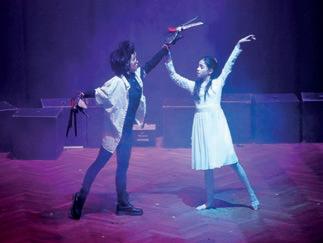




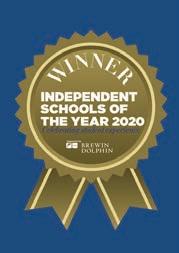

Scholarships and Bursaries available at 11+ and 16+ Find out more at www.stdunstans.org.uk Stanstead Road, London, SE6 4TY

WHY JUNO? OUR SERVICE, BESPOKE TO YOU: Many families struggle to enter the competitive and complex British private school and university systems. We combine expert, independent consulting with academic and personal development support to take families through the whole process. Our students enter their top choice schools and universities as confident, well-adjusted, and critically thinking individuals. • International family support • Impartial, student-centred advice • Connections to top schools and universities • Attentive team of experts • Personal and emotional development focus 01 02 03 04 05 06 07 Family consultation Mock interview and tests Education milestones strategy School/university preparation sessions Tuition, coaching and well-being support Admissions process handling Aftercare mentoring programme WHEN TO START OUR SUCCESS TO DATE: Typical entry points: 11+, 13+, 16+, Bachelor’s (18+) Ideal start time: 2 years before for top schools. 4 years before for top universities. *We support late / mid-year / nonstandard entry point applications too. 96% 100% 100% entry into top choice school entry into top three choice institutions entry into a Russell Group university WHAT DO WE DO? +44 0203 886 15 99 | contact@junoeducation.org | junoeducation.org
HEAD
Modern values
One Monday last year, a Year 6 boy arrived for school clutching a parcel containing a fresh whole trout. He had caught it the previous day, had wrapped it in the weekend papers and was delivering it to me – knowing that I enjoyed fishing and cooking – because he thought I might “appreciate it”. In that moment, the problems lurking in my in-tray suddenly became easier to tackle. The day, and week, was o to a flying start. Where did this boy’s kindness come from? Aside from a naturally pleasant disposition, it came from home, of course, and the values instilled in him by his parents.
It is no coincidence that schools emphasise their values so clearly – they understand their importance to parents.
At St Philip’s, for example, we encourage the boys to act ‘with joyfulness and kindness’ every day in every situation. We urge boys to make the most of their talents and take responsibility for their words and actions, and we seek to create a culture of kindness by living according to those values every day, modelling and promoting them consistently.

Developing this culture takes time and patience, but it is important work. Not only is this more authentic than any red-letter awareness day, it is also more e ective.
Children notice kindness and appreciate it,
and if they benefit from kindness they are more likely to treat others in a similar way. They are grateful to receive hand-written notes, for example, and are likely to write thank you cards in later life if they receive them in childhood.
St Philip Neri is the patron of St Philip’s – and, appropriately, the patron saint of laughter and joy – so he is our model here. “In dealing with our neighbour,” he said, “we must assume as much pleasantness of manner as we can, and by this a ability will win him to the way of virtue.”
After schools like St Philip’s, children are certain to be confronted with all manner of challenging situations in their senior school years. This is normal. It is the fate of all children as their bodies and minds develop with great speed – and quite often not in a conveniently parallel way – in the transition from childhood to adulthood via adolescence. If they are to navigate these wondrous but challenging years with any degree of success, they need to call on their values and make wise choices along the way.
They need to take responsibility for their actions and the e ect that they have on others, and this needs to become second nature.
It is interesting that the solutions to ‘modern’ problems were being discussed by men like St Philip in the 1500s. This is because the values he promoted – such as kindness, tolerance and respect for others’ views – are timeless and the base upon which healthy personal relationships are made. It is not overstating things to say that they are the foundation on which healthy civilisations are also built, and they must be preserved. Marcus Aurelius was more e cient with his words than St Philip but was delivering the same message 1,500 years earlier when he said: “Waste no more time arguing about what a good man should be. Be one”.
ALEXANDER THOMAS Head Master
St Philip’s School
73 Talking
PREP / TALKING HEAD
The Head Master of St Philip’s School on why timeless values such as kindness are so important in the modern world
“Children notice kindness and appreciate it, and if they benefit from kindness they are likely to treat others in a similar way”
ABOVE Alexander Thomas and pupils at St Philip’s
AUTUMN 2022 | ABSOLUTELY EDUCATION |
St


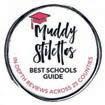



Courage. Courtesy. Compassion.
Columba's College Co-educational Independent Catholic Day School for ages 4 to 18 in St Albans stcolumbascollege.org 01727 892040 “Quality of pupils’ academic and other achievements is excellent.” “Pupils’ personal development is excellent.” ISI Report May 2022
HEAD
Bridging THE GAP
The beginning of this school year marked an exciting addition to the learning landscape of London, Cavendish Education and my career as Headteacher of a new prep school – Burlington House Prep. The school takes pupils from seven to 13 (Years 3-8) and, most excitingly, is for children with a specific learning di erence such as dyslexia or dyspraxia. The new prep school is an expansion of the current successful senior school, The Moat – now renamed Burlington House Senior. With the new prep school just a seven-minute walk away from our Fulham base, the two schools are able to share outdoor space as well as a fabulous indoor sports hall.
One of my personal education heroes Ken Robinson once said: “Education needs to be transformed. The key to this transformation is not to standardise education, but to personalise it, to build achievement on
discovering the individual talents of each child”. Burlington House aims to do just that, providing a unique, supportive learning environment where pupils with a specific learning di erence can progress and flourish. Every child is respected as an individual, with their own valuable strengths and talents, alongside learning challenges.
Our schools are, as we describe them: ‘mainstream in structure but specialist in nature’. Our pupils may need additional support to help bridge the gap between their performance and their potential. Therefore, every aspect of the education provided at Burlington House is designed to support pupils as they meet the challenge of bridging this gap. Provision for speech and language and occupational therapy are both integrated within the curriculum and small class sizes guarantee high levels of attention from our empathetic sta .
Having taught in mainstream and independent primary schools, internationally and, more recently, in a specialist setting, I have witnessed the importance of a nurturing environment where a child




feels understood and so ready to learn. Self-belief, confidence, the ability to reflect on mistakes and a growth mindset are just some of the foundations of a child’s learning. They need a safe, happy environment so that they are motivated to learn.
Children with specific learning di culties often have an incredible sense of creativity, as well as an aptitude for many subjects, but they may also face di culties with reading, writing, spelling and numeracy, as well as organisational skills or speed of processing. I envisage every child to be on a journey at Burlington. Not every child will reach the same destination at the same time, but we will help them to discover their strengths at their own pace. For some children, delays to literacy or numeracy development lead to frustration, anger or a reluctance to learn and this can lead to false belief about their real ability which, down the line, will a ect them socially and emotionally. Once a false belief is ‘set’, it can be di cult to reverse – and that is why early intervention is key for an individual. At Burlington House, we are championing the individual.
75 Talking
PREP / TALKING HEAD
NICOLA LOVELL Headteacher, Burlington House Prep School
“Every child is respected as an individual, with their own valuable strengths and talents, alongside learning challenges”
ABOVE Students at Burlington House Prep
The Head of newly opened Burlington House Prep on its mainstream approach to help children with specific learning di erences to thrive
AUTUMN 2022 | ABSOLUTELY EDUCATION |
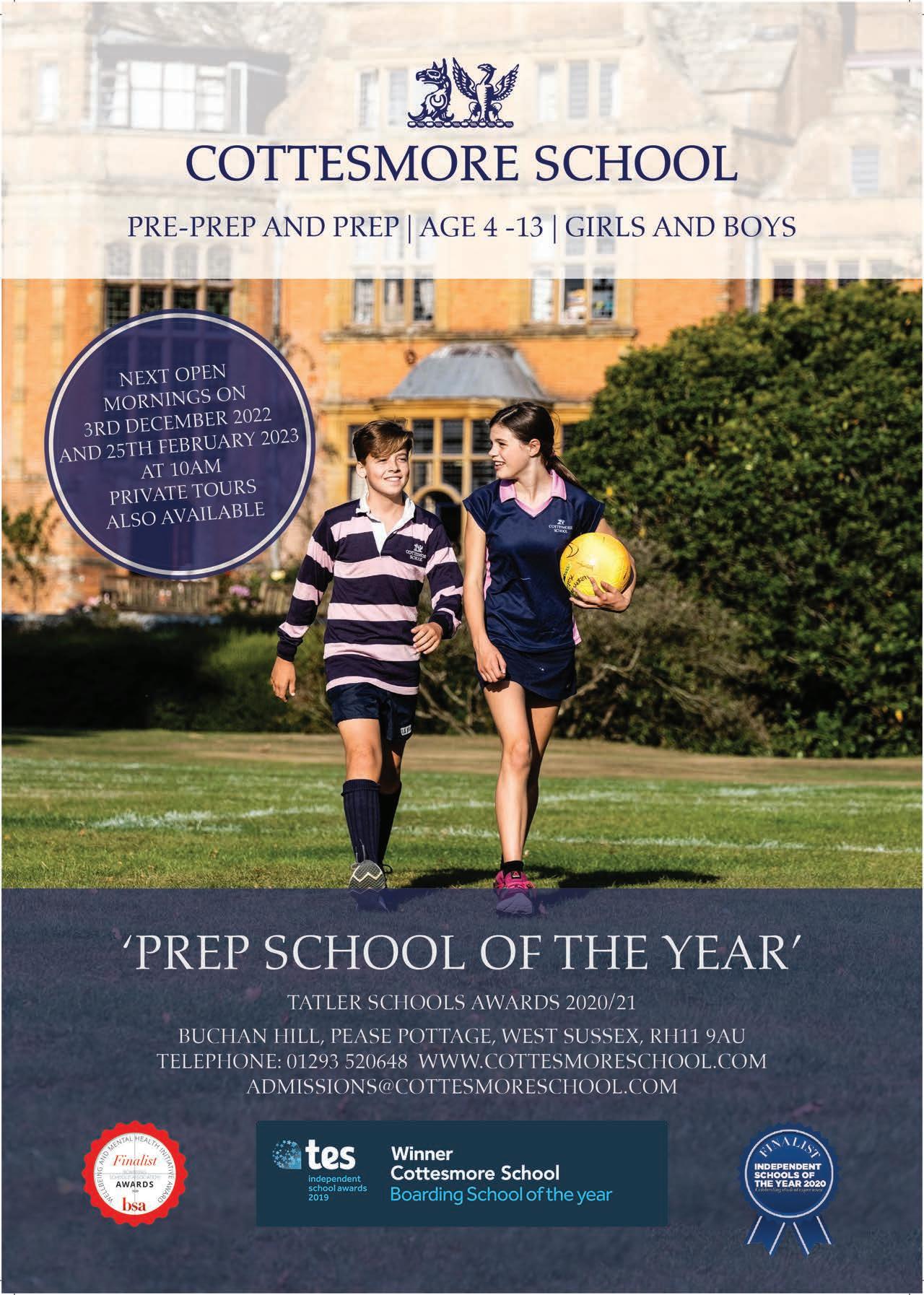
Talking HEAD



Outside edge
The most valuable learning experiences in schools take place outside the classroom. Yet, far too often, children spend the majority of their day in a confined and controlled environment studying the academic curriculum. Now, more than ever, schools need to be bold in reducing time spent studying traditional curriculum subjects in the classroom.
Learning outside class has always been the best environment to develop a child’s character, be it communication skills on the sports pitches, teamwork as part of an orchestra or the value of pushing beyond their comfort zone on the stage. Introducing nature to learning creates unpredictable circumstances that allow our children to become flexible, adaptable and reflective learners. These are all essential skills that pupils need as they head on to their senior schools and for life beyond education.
academic results allows schools to be bold in spending more time learning outside.
Two main factors can constrain time spent learning outside the classroom, the fear of not covering the academic curriculum being the primary one. Like everything in education, it is not how much time you dedicate to something that is relevant but the measured progress made and how much learning is taking place. At Sandroyd, we continually assess the children’s learning and find that our academic outcomes are improved by spending less time in the classroom. Tracking and measuring
A further constraint on schools is the concern teachers can have in delivering lessons in an unpredictable environment. Too often, subjects that are better taught in a more formal classroom environment are moved into the woods, or similar, with a negative e ect. This exacerbates the nervousness of teachers to use the outdoors in future learning, so they need to be supported in understanding that they are developing a completely di erent set of skills. It is not simply a case of adapting traditional lessons. Teaching outdoors means that both resources and behaviour are more challenging to manage, yet it is the unpredictable nature of learning outside the classroom that provides so much value.
At Sandroyd, every day of the week we aim for children to spend as much time learning outside the classroom as in academic lessons. For example,

our daily Strive programme sees children going on nature walks, building structures in the woods, and completing leadership command tasks. Recently, we have introduced a whole week in the summer term where all children are taken o timetable, many staying o -site throughout the south of England or learning outside the classroom. This week-long programme allows the children to participate in a wide range of experiences that aim to place them out of their comfort zone. Above all, the week is designed to be great fun.
ALASTAIR SPEERS
Teambuilding, communication and resilience are all vital skills, and none of these are easily measured and examined; neither are they part of the national curriculum. It takes bold leadership and a culture in the school to prioritise time away from traditional academic lessons, enabling these vital life and character skills to be nurtured in our children.

77
PREP / TALKING HEAD
Head master Sandroyd School
The Headmaster of Sandroyd in Wiltshire says schools should be bold and tap into the huge benefits of learning outside the formal classroom
“Introducing nature to learning allows children to become flexible, adaptable and reflective learners”
ABOVE Outdoor learning at Sandroyd
AUTUMN 2022 | ABSOLUTELY EDUCATION |

78
“We need to give young people the sense that there are relatively simple things they can do”
ABOVE
Cindy
Forde
| ABSOLUTELY EDUCATION | AUTUMN 2022
Climate
HOPE
For young people, climate change is a tough subject. Adults present a set of challenges, not of their making, and focus on insurmountable problems. Too often this comes across as a vision of time running out. Bright New World, a new book by Cindy Forde aimed at the 8+ age group turns this narrative firmly on its head. With a big format, bold colours and wonderful illustrations by Bethany Lord, it o ers inspiring real stories and ideas for fixing problems. Hope was what inspired Cindy Forde because she believes a lot of environmental information o ers only downbeat messages. “Children subliminally get the message that this is a di cult subject, a sad subject – even a dreary subject,” she says.
“The world is bright and beautiful. Children love nature,” adds Forde. “We really wanted to have that in the book, so that instead of environment being associated with everything that’s gone wrong and these very depressing images, the images inspire you both with the beauty of nature and with the fabulous creativity of humanity.”
She is critical of the trend to talk about a
future full of hair-shirt denial – believing the story should be one of evolution. “There’s huge abundance on earth, still. Earth is capable of sustaining large populations of humans and other creatures, it’s just that we need to shift our distribution.” She points to the “brilliant innovators” across science and other disciplines, already designing solutions. “The whole feeling now is that there’s this opportunity to transform.”
Bright New World covers a lot of ground on environmental issues – from food choice challenges and circular economy principles to the future of travel. This is not pie-in-the-sky idealism, but is supported by facts, figures and information, all underpinned by the United Nations’ Sustainable Development Goals (UN SDGs). There are plenty of environmental heroes here, with cases to demonstrate that change for the good is happening. “We need to give young people the sense that there are relatively simple things that they can do. I don’t want to put the onus on the individual because to really change this trajectory we need systemic change, but systems are guided by the individuals who live within them.”
Forde comes from a science and environmental communications background,
describing her overarching role as that of storyteller. She was previously CEO of Cambridge Science Centre and, before that, Managing Director of oceans charity Blue Marine Foundation. More recently, she founded Planetari, an organisation focused on worldwide environmental education. This has Amber Nuttall and Jonathan Porritt CBE among its team of advisors – Porritt also wrote the foreword to Bright New World
The book is both inspiring and informative, o ering a clear roadmap to the future. It’s also part of a wider mission. Cindy Forde would like to see environmental education delivered more systemically – and positively – using UN SDGs as the bedrock, and Planetari is setting out to do just that. Bright New World is also part of this mission and she is designing additional material that she hopes will give educators resources that, alongside the book, will support lessons across the syllabus. As she says: “It comes from this place of not being afraid to look at the truth but to see that there is a much more positive way forward if we believe we can take it”.
Bright New World is by Cindy Forde (Welbeck Publishing, £18.99).

79
A new book turns familiar climate narratives on their head, describing a future of innovation and reinvention
PREP / FEATURE AUTUMN 2022 | ABSOLUTELY EDUCATION |
DEPTHJOY STRUCTURESPACE
Your child’s primary years are fundamental in shaping not just what they become, but who they become.

King Alfred School has over 120 years of experience of designing joyful learning experiences which give each child the space they need to discover and develop their passions, to embrace challenge and reflect on their achievements.

Our creative curriculum inspires children because they do it


through experience, through play, through genuine interest; we nurture an eagerness to know more and encourage greater depth of understanding. We have high expectations for our children and give them the freedom to explore and grow - all within a structure which lets them develop at the pace which is right for them. The results speak for themselves; happy, confident children who love to learn.
Find out more about the school, or book to attend an open event at www.kingalfred.org.uk

Responsible ENTREPRENEURSHIP
Southbank International School on teaching entrepreneurship and global thinking at a young age
Developing financial acumen and a savvy business brain at a young age are increasingly important elements in modern education. At Southbank International School, children as young as grade 2 (age 7 and 8) get involved in learning about entrepreneurship.
Children focus on how people work together to create products for the community – and with a big focus on interconnection. To make the experience immersive, children work in teams to start a small business together. They decide on a product that they can sell to their target market (which is their parents).

There is emphasis on considering audience needs and wants, and the children do their own market research. Teachers find this a fantastic way for them to learn how to formulate questions. At Southbank, everything is cross curricula and data gathering work feeds into maths learning.

Next the groups think about marketing. There is a talk by a member of sta or parent to help them decide how to communicate their message and then
create an advert. Experts are enrolled throughout the product development phase to give constructive feedback.
Finally, the product goes into production, with each team member assigned their own tasks. They form a production line and make the right number of pieces as per the order forms. Deciding on a suitable price during the market research phase and collecting money (further maths work) are important parts of the process. They also decide on a suitable charity or environmental cause they want to support.
Throughout the entire project there is a lot of reflecting on IB Approaches to Learning, particularly focusing on communication and
collaboration skills. Everything is seen through the context of the IB – striving to educate students to think beyond themselves and consider their responsibilities in the world. Entrepreneurship is also introduced through extracurricular activities. Clubs such as Action Through the Arts o er an opportunity to work together to make a di erence. For instance, Southbank International pupils recently made a video on climate action and also created a book for refugee children coming to London from Afghanistan – children drew pictures and the words were translated.
Last term, children (ranging in age from 5 to 9) decided it would be a good idea to fundraise to support young people fleeing the war in Ukraine. The group settled on key chains and bookmarks – determining costs to make units and a fair selling price. The project raised an impressive total of £373 to buy book boxes for Ukrainian children to be given as gifts on arrival in the UK. Children typically spend 10-12 weeks working on Action Through the Arts projects, and all the work involved orientates around entrepreneurship, and there is always a focus on making money not for themselves but to 'give back'.
81
ABOVE Children at Southbank International School
“The work orientates around entrepreneurship, and children focus on making money to ‘give back’”
AUTUMN 2022 | ABSOLUTELY EDUCATION |
PREP / FEATURE

BOARDING SUCCESS
Boarding schools have come a long way since those tales of cold showers and huge dormitories. Dedicated sta now guide students as they navigate social interactions, mental-health issues and meeting the high expectations of school, all the while being away from home for the first time.
Today’s students often describe boarding as ‘one big sleepover’, a ‘home from home’. Secure and friendly, it is where they not only flourish academically, but learn tolerance, resilience, discipline and independence – and make lifelong friends. Free time is packed with activities. They can enjoy the company of hundreds of others – with older students becoming sibling figures.
At Gordon’s – recently named TES Boarding School of the Year – Year 7 boarders are accommodated in Woolwich House, with us as Houseparents. Settling in new charges


time), an action supported by the vast majority of our parents. The reasoning behind their removal is to encourage friendships. It’s easy for children to sit in a corner with their phone if they’re feeling self-conscious, but without one they are making friends and learning how to gel with those in their house. Phone usage is gradually increased but often, once these much sought-after privileges arrive, they are ignored in favour of spending time playing with friends.
and allows them to focus on their academics and sports. Similarly, if they are active rather than passive – be it looking for ‘lost items’ or keeping their dormitories tidy – they are solving problems for themselves and are in control. This, in turn, gives them confidence.
begins months before students’ arrival. During in-person meetings or Zoom calls, we glean as much information as we can about each child so they can be helped to settle in quickly. For their part, parents are urged to prepare their children before they arrive by increasing their independence, reducing their dependence on mobiles and encouraging them in practical tasks and chores such as making their own bed.
Mobile phones are limited in the junior house and removed from students for their first three weeks (although children may use the house phone to phone home during this
In the early stages, the children are kept busy. Playing rounders or ‘capture the flag’ means they’re building relationships through play and are less likely to dwell on home. However, homesickness is always going to crop up – usually at bedtime. Then they come downstairs and are soon on the sofa talking it through with a warm drink. They also support each other in their bunk beds – that is how they develop those lasting friendship bonds.
Each new boarder is assigned a buddy from a year above, to guide them through their first year and on to their senior boarding houses. Independence and organisation are encouraged from the start – if they can get that sorted in their first year, it will be easier in the long run
A bell wakes them up for the first half of their first term, but after that they are given an alarm clock and become responsible for waking themselves up. They are all ready for their senior houses at the end of the year, looking forward to more independence and with the skills and maturity to deal with the next stage of their boarding journey.
83 PREP / INSIDER
“During meetings, we glean as much information as we can about each child so they can be helped to settle in quickly”
Sam and Daisy Cooper, Houseparents at Gordon’s School (TES Boarding School of the Year), describe ways in which they help first-time prep boarders settle in and thrive
SAM & DAISY COOPER Houseparents Gordon’s School
ABOVE Social time at Gordon’s School
AUTUMN 2022 | ABSOLUTELY EDUCATION |

SENIOR TRANSITION
Making the choice and managing the entrance to senior school can be complex for parents familiar with the UK system – even more so for families who are moving (or returning) to the UK. The first important step is not to panic. Your priority should be to find a fantastic school for your children – and the good news is there are plenty of excellent choices. A good school will not only actively prepare your child academically and emotionally for every transition but will also support your family throughout the educational journey. Here’s a checklist of areas we suggest parents focus on.
Decide priorities
Do you prefer a single sex environment or a co-educational one? Perhaps you are open to all. Are you looking for a boarding school or a day school? While traditionally there was a tendency to look at the league tables and start from there, what is equally if not more important is the ‘value added’. This is a great measure of a school’s determination and ability to get the best out of children and help them to thrive. Decide what values are important to your family. This is particularly important at a boarding school, as your child will spend a great deal of time there and the values and ethos should replicate your own.

Carry out research
While nothing quite compares to visiting a school in person, since the pandemic – when schools couldn’t host physical visits – many o er website tours that give great insights into what the school is all about. The best capture the life of a school. This is useful starting point to focus your search and set of criteria before narrowing down. Visiting schools in person (or via oneto-one virtual appointments if physical visits are impossible) is the next logical step. This will provide a clearer sense of the atmosphere and culture at the school. It’s also an opportunity to meet key members of sta who will tell you more about the inner workings of school
life there. It’s a good idea to have questions prepared in advance – you want to maximise your session and leave feeling satisfied that any queries have been addressed.

Criteria can and do change... Many parents I see will have an idea of the type of education or school they envisage for their child. Sometimes this is based on their own experiences, or it might be based on what they have heard. Sometimes it is purely down to the stats. But education has moved on since we were at school, and it is important to stay open-minded – the first and foremost priority is to find a senior school where your child will thrive, not simply survive.
It is very common for families to end their search in a very di erent place to where they started. I have parents who only wanted a day school but ended up pursuing a boarding route and families who took a risk on a newer school versus more established ones. Time and again, parents will say: ‘we never thought to consider that school, but it turned out to be exactly what we were looking for’.
LOUISA MCCAFFERTY
Head, Broomwood Hall Upper School
85 PREP / INSIDER
ABOVE Pupils at Broomwood Hall
“The first and foremost priority is to find a senior school where your child will thrive, not simply survive”
Louisa McCa erty, Head of Broomwood Hall Upper School, discusses how parents can ensure the application and transition to senior years goes smoothly
AUTUMN 2022 | ABSOLUTELY EDUCATION |









200 pupils at Dulwich have free or subsidised places Pupils are encouraged to be and do everything Bursaries of up to 100% and Academic Scholarships of up to one third of full fees are available. Find out more and how to apply by scanning the QR code. Entry into Years 3-6 (ages 7-10) Mrs Polly Twisk, Junior School Admissions 020 8299 8432 junioradmissions@dulwich.org.uk Entry into Year 7 and Year 9 (ages 11 and 13) Mrs Sarah Betts and Mrs Alison Williams 020 8299 9263 the.registrar@dulwich.org.uk Join us at our Open Events Book your place dulwich.org.uk/admissions

87 Senior TEACHING ENTREPRENEURSHIP P 88 MINDING OUR LANGUAGES P 112 GUIDING LIGHT P 126 POSITIVE APPROACH Wellbeing focus at Wellington College See page 117 AUTUMN 2022 | ABSOLUTELY EDUCATION |
Entrepreneurship
Teaching the skills and know-how for entrepreneurship adds huge value, whether or not a young person decides to carve a career in business. We find out how schools develop that can-do attitude – alongside social responsibility – both in and out of the classroom

88 TEACHING
| ABSOLUTELY EDUCATION | AUTUMN 2022
Cranleigh School

At Cranleigh School in Surrey, entrepreneurship is introduced in imaginative ways. Year 9 pupils consider financial planning, profit/loss and marketing via the Egg Drop Challenge. This involves teams thinking out of the box to get the best result. In addition to formal classroom sessions, all pupils attend regular talks by established business owners and entrepreneurs. Business knowhow themes are broadened to include a set of topics key to developing responsibility. Tomorrow’s entrepreneurs have a very di erent landscape to work in, and Cranleigh’s overarching vision is underpinned by three pillars focusing on thinking, being and giving –these encourage students to think beyond the test, consider who they are and understand the importance of giving back. Each of Cranleigh’s eight boarding houses run a charity event to make as much money as they can. In addition, as a response to the war in Ukraine, the school’s Charity Committee organised donations from the whole community, resulting in a very large lorry transporting thousands of items. This initiative was entirely pupil driven. Pupils interested in entrepreneurship gravitate towards Business Studies, and many also take Economics. Pupils in the Lower Sixth are also encouraged to take part in Ivy House, a development programme
RIGHT
to encourage individuality and leaderships skills, looking directly at any individual challenges a student faces. There is also a practical approach to developing financial acumen. Amanda Reader, Joint Head of PSHE says: “In the Sixth Form, PSHE sessions take a more grown-up approach, looking at finances, credit cards, mortgages, payslips, student finance and budgeting”. These are essentials for both business and onward life. Responsibility is vital to developing future business brains and Upper Sixth students are all given responsibilities in-house or on sports teams as captains and vice-captains. With several student-led committees, including Cranleigh Being Alliance, Charity Committee and Eco Committee, there are plenty of areas where pupils can take on roles where they give back and also develop skills useful to an entrepreneur.
Cranleigh is a leader in developing the Extended Project Qualification (EPQ) –Director of Learning, Teaching & Innovation Dr John Taylor was among pioneers of the qualification and is a Chief Examiner. The EPQ allows pupils to develop an idea with the support of mentoring tutors and regular meetings to iron out roadblocks. The project culminates in a 10-minute presentation. This qualification not only helps to develop individual interests, but also problem solving, research and critical thinking.
Queen Anne’s School
At Queen Anne’s School
(QAS), Caversham, girls are introduced to entrepreneurship in a variety of ways. Outside the classroom, Tycoon enterprise competition is run with U4 girls for two terms. The best groups get invited to Windsor Castle or Buckingham Palace for the awards ceremony and QAS girls have been finalists a number of times, winning a £3,000 category prize in 2018-19. There’s also a popular Tenner Challenge run for L6 girls. Personal financial acumen is developed as students progress. A workshop with U4 (Year 9) students is delivered as part of World of Work day. A number of external speakers visit the school to talk to the Sixth Form about tax, mortgages and other financial matters essential to their onward lives. QAS sta also provide sessions on how student finance works –alumni and local graduates come to give ‘on the level’ advice.Within Economics lessons, the school teaches some areas of personal finance through class discussions – also covering big-picture topics such as Consumption. Students appreciate the taster lessons in Economics and

SENIOR / FEATURE
LEFT & BELOW
Cranleigh School students
Group work at Queen Anne’s School
“Tomorrow’s entrepreneurs have a very different landscape to work in, and Cranleigh’s overarching vision is underpinned by thinking, being and giving”
89AUTUMN 2022 | ABSOLUTELY EDUCATION |
Business run ahead of their introduction as full subject choices at A level.
In Business Studies lessons, finance from the business perspective is covered as a whole topic, while entrepreneurship comes into topics such as leadership. Social enterprise and corporate social responsibility are major topics, revisited continually and linked to current a airs.
Entrepreneurship is developed in a specifically designed leadership course for all QAS Senior Prefects (o ered to all students in the Lower Sixth as well). This innovative course uses industrystandard leadership training tailored to what the students need to know at the start of their careers, especially with regards to emotional intelligence, situational leadership, managing e ective meetings and time management.
The school says that all girls enjoy the challenge of its enterprise competitions. There’s a rich vein of entrepreneurship with social responsibility here, with students taking part in the Micro Tyco Innovate Competition every year. QAS girls won the English round last year and came second globally. In this competition, students learn about UN Global Sustainability Goals and then design, pitch and implement ideas.
Last year’s team focused on food waste and worked with the school catering team to reduce it in the Sixth Form Cafe. QAS is also a ‘Using Less Stu ’ school, which means that all students (and sta ) makes a pledge each term to use less of something and progress is monitored.
Emanuel School
At Emanuel School in Battersea, twin themes of entrepreneurship and responsibility are introduced early on, so that children can develop their understanding.


Year 8 pupils are introduced to areas of business and finance by learning about their own personal finance first. This includes topics such as budgeting, savings and responsible financial decision making. In the spring term, pupils’ learning progresses and they have one lesson a week to understand the approach taken by groups to develop non-profit solutions to a social or environmental issue.
The delivery is designed to inspire and maintain interest so, at the start of the course, pupils take part in a ‘hackathon’. This acts as an introduction to an entrepreneurial way of thinking. It is a design sprint event to brainstorm ideas in a large group and find solutions to challenging issues. The team at Emanuel say that this is a really fun and exciting way to spike young people’s interest in creative problem solving – an essential skill for any successful entrepreneur. There are then lessons that focus on the qualities of leadership and teamwork. Children work together to think of ideas for a product or service that has the potential to alleviate issues relating to the environment.
Pupils learn from a selection of guest speakers who have worked with successful
social enterprises, and they also get the opportunity to hear first-hand the di erence that social entrepreneurship can make. In collaboration with a variety of departments, pupils then develop their own business plan and marketing campaign for a business idea that will solve a social or environmental issue. It involves market research to develop a branding, pricing and funding structure. The children also learn about the theory behind business objectives and mission statements, as well as understanding basic financial principles and break-even theory. Throughout the process, they are encouraged to focus business objectives around ethical and sustainable practices. In the Summer Term pupils find out about marketing and work together with the drama and film departments to develop a video to support their campaign.
While entrepreneurship takes place as part of timetabled activities, children are also encouraged to develop ideas for themselves. Over the Easter break, they undertake fundraising activities to support a charity focused around their chosen issue. Pupils can fundraise by completing an activity or volunteering a service. For example, they might ask people to sponsor them for reading several books or running a specified distance. The school encourages children to be as creative as they wish. The year culminates in an exciting showcase event when parents are invited to see pupils present their projects and ‘pitch’ their final business plans.
“At the Micro Tyco Innovate Competition, QAS girls won the English round last year and came second globally”
“Emanuel’s ‘hackathon’ acts as an introduction to an entrepreneurial way of thinking and is a design sprint event to brainstorm ideas”
ABOVE & BELOW
Pupils at Emanuel School focus on entrepreneurship with responsibility
90 | ABSOLUTELY EDUCATION | AUTUMN 2022
Hurst College
















Hurst College has dramatically increased its provision around entrepreneurship and business in the past decade. Brian Schofield, Head of Upper Sixth at Hurst, says it is responding to shifting aspirations among students. “With students more concerned about degree (or apprenticeship) options that genuinely add value, rather than simply serving as rites of passage, the popularity of business and entrepreneurship courses has accelerated.” Business Studies is now, alongside Medicine, the most popular degree choice among Hurst leavers. What is most notable, says Brian Schofield, is the rapid increase in the number of girls plotting a future focused on launching and running businesses.
Hurst now produces an annual student and parent guide, ‘Hurst Means Business’, that reviews which business and entrepreneurship degrees the school’s expert team consider most valuable. In addition, to help prepare students for such a career, entrepreneurship is interwoven into school life at all stages. For instance, students in Year 9 receive
training in the fundamentals of the financial system – this from the perspective of both personal money management and the global markets. In Year 10, all students undertake the school’s Enterprise Challenge to develop a sustainable, successful mini business.
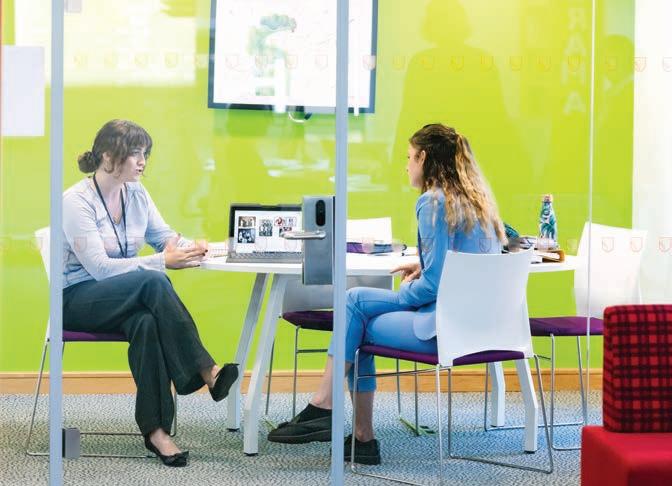


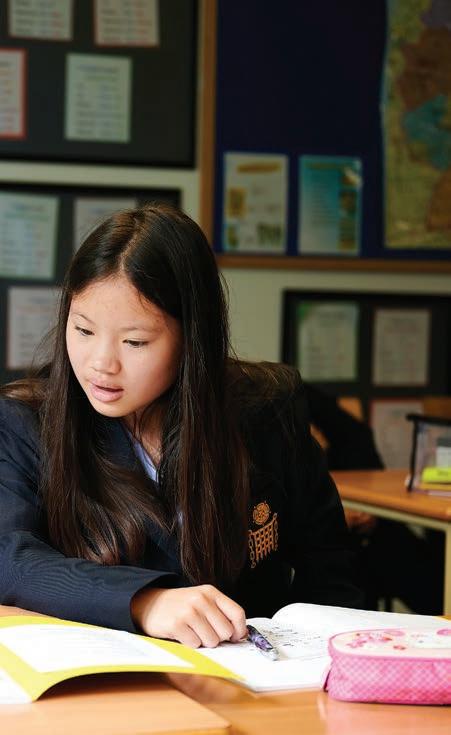
The Young Enterprise programme is now so popular that Hurst runs two Year 12 teams. “They consistently dominate the county awards, thanks to the hard work of the students and their sustainable, ethosdriven approach,” says Brian Schofield. Also in Year 12, as part of Hurst’s ‘University of
Life’ programme, students receive training in financial resilience and self-reliance. Finally, in Year 13, as part of its Futurology lecture series that all students attend, guest speakers provide insight into the changing face of business, as dynamic forces such as artificial intelligence and ‘Big Data’ evolve.
Entrepreneurial spirit is highly visible within the sphere of charitable fundraising. Here, students are encouraged to launch as many social enterprises as they can think of, to hit Hurst’s typical student-driven fundraising total of £30,000 a year. From personalised Valentine’s cake delivery businesses to mini yoga-schools, an array of projects are launched and executed. Hurst has been placed in the top three UK fundraising schools for Movember in the past two years, raising £18,000 in the 2020-21 academic year alone – boys and girls participate, whatever the focus. Schofield says that perhaps the most important lesson Hurst has taken on board in the past decade is that interest in entrepreneurship among young people –social, financial, technological, or otherwise – is not at all gendered. “No-one talks about becoming a ‘businessman’ here at Hurst.”
“With students at Hurst more concerned about options that genuinely add value, the popularity of business and entrepreneurship courses has accelerated”
SENIOR / FEATURE
91
ABOVE & BELOW Hurst College has a rich business programme
AUTUMN 2022 | ABSOLUTELY EDUCATION |

BUSINESS FOCUS
Joseph Birchall, Head of King’s Magna Middle School – part of Queen Ethelburga’s Collegiate (QE) – on its innovative enterprise education programme
Business and Economics are two of our most popular subjects at both GCSE and A level here at QE. We also have long-established and very successful Young Enterprise programmes that have run in both Year 6 and Year 12. However, there still remained a gap for more business education, and in 2018 we introduced this option in Years 7 to 9 within our enrichment programme. This proved very popular, and it quickly became apparent that there was a need to extend this provision within the formal curriculum.
In September 2020 we introduced a new Business and Enterprise programme as an optional subject in Year 9. The new course is a standalone programme of study for two hours a week. At this point in a student’s educational journey, the fast-paced route of GCSEs and A levels are in sight, and the importance of supporting student aspirations and fuelling their curiosity in their future career options needs to be harnessed.
This new programme prepares students for study across the full range of social sciences: GCSE Business, BTEC Enterprise and GCSE Economics. It is important to think about skillset and the personal skills essential for future career success. We also look at life skills, and how these integrate into study. Our students develop skills in finance, an identified key area across the Key Stage 4 courses which students find challenging. A small team of GCSE Business teachers put together the new programme of study to support the objectives of the course.
All students study finance for one hour per week, with the course featuring a wide variety of practical tasks designed to develop deep understanding of the key concepts required for GCSE. For example, one project has involved students researching setting up their own online t-shirt business to develop an understanding of fixed and variable costs, calculating break-even as
well as their gross and net profit. These are important in a business context, but also with valuable practical lessons in budgeting.
Running parallel to the finance unit, students are introduced to enterprise through analysing famous entrepreneurs and learning the key foundations of enterprise. Students analyse their own enterprise skills and use practical activities such as the marshmallow challenge to develop teambuilding skills. Over 80% of students who have graduated from the Year 9 programme have gone on to study business or economics courses in Year 10, with others
expecting to take up a one-year GCSE in Year 11. While it is too early to measure the impact on formal academic results, students have continued to develop their entrepreneurial skills – for example through the paper-clip challenge (one student managed to trade up to a set of LED strip lights in just two weeks!)

The course has grown in popularity and is currently studied by 87 students – 74% of the year group. As educators, we should all be striving to inspire a new generation of entrepreneurs, and the earlier this education can start, the better.
JOSEPH BIRCHALL Head
King’s Magna Middle School, QE
 ABOVE Students at King’s Magna Middle School, QE
ABOVE Students at King’s Magna Middle School, QE
93
“While it is too early to measure the impact formally, students have continued to develop entrepreneurial skills”
SENIOR / OPINION AUTUMN 2022 | ABSOLUTELY EDUCATION |


AN INDEPENDENT DAY AND BOARDING SCHOOL FOR GIRLS AGED 11 TO 18 Kind Hearts Fierce Minds Strong Spirits Transport network across London and Home Counties A Microsoft Showcase School 35 acres in the heart of Caversham, Berkshire Full boarding and flexi options available OPEN MORNING 2022 Friday 11 November OPEN MORNING 2023 Friday 3 March Book your visit at www.qas.org.uk
STEM FOR WOMEN
The Head of Physics at Royal Hospital School on why we need more female STEM teachers and role models to inspire girls and young women
Recently, there was an article by the BBC on how physics is seen as a maledominated industry. As a female teacher working in STEM, it is shocking to think that in today’s world there is still such a gender divide in our schools and in the profession itself. I am sure many will think back to their time in science lessons, and most will recall that their teachers were male. Thankfully, I am proud to say that this is not the case in my current role as Head of Physics at Royal Hospital School – where 50% of the subjects are led by women.
However, the BBC article certainly highlights the lack of female representation in science and will make many women reflect on what it truly means to be a female working in STEM. For me, it is important to use my role to face this lack of representation and push the next generation to see science as genderless.

For those schools looking to increase this figure, it is imperative to have a topdown approach to gender-stereotyped subjects, with strong female teachers promoting the message that STEM subjects are for everyone. It is also important for male teachers to be champions of women in science to create a unified and inclusive message.

There is also a huge absence of women scientists within the national curriculum and this is something that can be changed. We want to see Curie, Meitner, Johnson, Burnell and Somerville named to ensure some gender balance, and this is something as teachers we can start mentioning within the classroom.
It is also important to face these topics head on with the next generation of talent and debate the implications of the number of women going into science and other STEM subjects.
The overwhelming majority of Year 11 physics pupils at Royal Hospital School feel that the BBC article was a true reflection of their perception of the subject – and that’s despite having female physics teachers standing in front of them. Some pupils said they had found a love for the subject and wanted to continue the subject at A level, hoping to be part of the change. Others spoke
openly about how they felt they would be perceived as ‘di erent’ if they chose to study physics and maths further, which was why they had decided to go with other subjects for A level.
The debates we have in the classroom are incredibly important, as the sector has notably faced challenges in the uptake of women in STEM subjects. By understanding the viewpoints of pupils and responding with positive examples, we can open their eyes to how they can help change that stereotype. This, in turn, will help create the next generation of talent in science.
If STEM teachers can become unified and work to counteract the messages from wider society by raising awareness of the achievements of female scientists with students – also creating more positive role models for girls to aspire to in the future – then surely we stand a good chance of changing these shocking statistics.
KERRIE FINLEY Head of Physics Royal Hospital School



“It is imperative to have strong female teachers promoting the message that STEM subjects are for everyone”
95AUTUMN 2022 | ABSOLUTELY EDUCATION |
SENIOR / OPINION
ABOVE
Pupils at Royal Hospital School
We made friends for life








at The Leys












www.theleys.net Achieve the exceptional at Cambridge’s leading co-educational boarding and day school for ages 11-18 Scholarships Academic Music Choral Sport Art STEM Drama
IMMERSIVE INNOVATION
Flying through space in search of planets that can sustain life or travelling back in time to World War II. These may sound like sci-fi movie plots, but they’re actually VR (virtual reality) activities we’re using to enhance learning at King’s InterHigh online school.
Stepping beyond a flat screen, VR environments are simulated spaces where you can interact with virtual surroundings in 3D. When students put on a VR headset and grab their motion controllers, they can explore any place imaginable and feel like they’re really there.
This is a game changer in education Research over the years (including our own pilot study) shows that VR can help students focus, improve understanding of complex topics, boost recall of information when tested, and much more. It can connect with students of all learning styles – from visual to auditory to physical. In short, the benefits of VR are unmatched, and today’s students have much to gain from learning with this technology.

For example, reading Anne Frank’s diary is one thing; putting yourself in her shoes is another. With their VR apparatus, students can be transported back in time to explore a full recreation of Anne’s annexe without even leaving their desks. “I don’t usually feel moved by books or texts,” said our student Harry after visiting the Anne Frank VR tour, “but actually experiencing what it was like… feels almost haunting.” Virtual reality experiences like these are more
than just emotive – they’re also e ective.
Even with no prior teaching on the subject, our students were able to explain the facts of Anne’s time based on the 25-minute VR tour alone. Combined with traditional teaching approaches, this has the power to take knowledge and understanding to a new level.
The applications of VR are endless, with gains seen across various subjects and skillsets. For example, remaining fully focused throughout a class is a common di culty, but virtual reality gets students to actively engage across a whole lesson by immersing them in the topic at hand. VR also opens up opportunities. Many young people will not get the opportunity to go scuba diving or visit the Great Wall of China in real life – with VR, anyone can explore marine ecosystems or walk the Wall’s length, regardless of budget, geography or physical mobility.
This year, students taking the world’s first online International Baccalaureate (IB) Diploma with us will regularly don VR headsets to complement their live classes and other interactive learning tools. Inquiry is one of the key aspects of IB learning, and immersive education is an incredible way
to drive that curiosity and investigation.
Virtual reality is just one of many innovative learning methods we hope to see more students gain access to in the future.
For students at our digital-native school, where our vibrant learner community is built around online technology, it fits in right alongside augmented reality (AR) interactive classroom activities, non-VR language and science simulations, and more proven educational platforms.
One day, VR will likely be as commonplace in schools as pen and paper or computers. At King’s InterHigh, we’re giving our students a headstart in the future of education.
NATHAN O’GRADY
VR and AR Lead King’s InterHigh

97 SENIOR / INSIDER
ABOVE VR exploration at King’s InterHigh
Nathan O’Grady of King’s InterHigh discusses its exciting and innovative approach to enhancing learning and enriching the experience of students at the online school
AUTUMN 2022 | ABSOLUTELY EDUCATION |
“This is a gamechanger in education. VR can help students focus, improve their understanding of complex topics and boost recall”
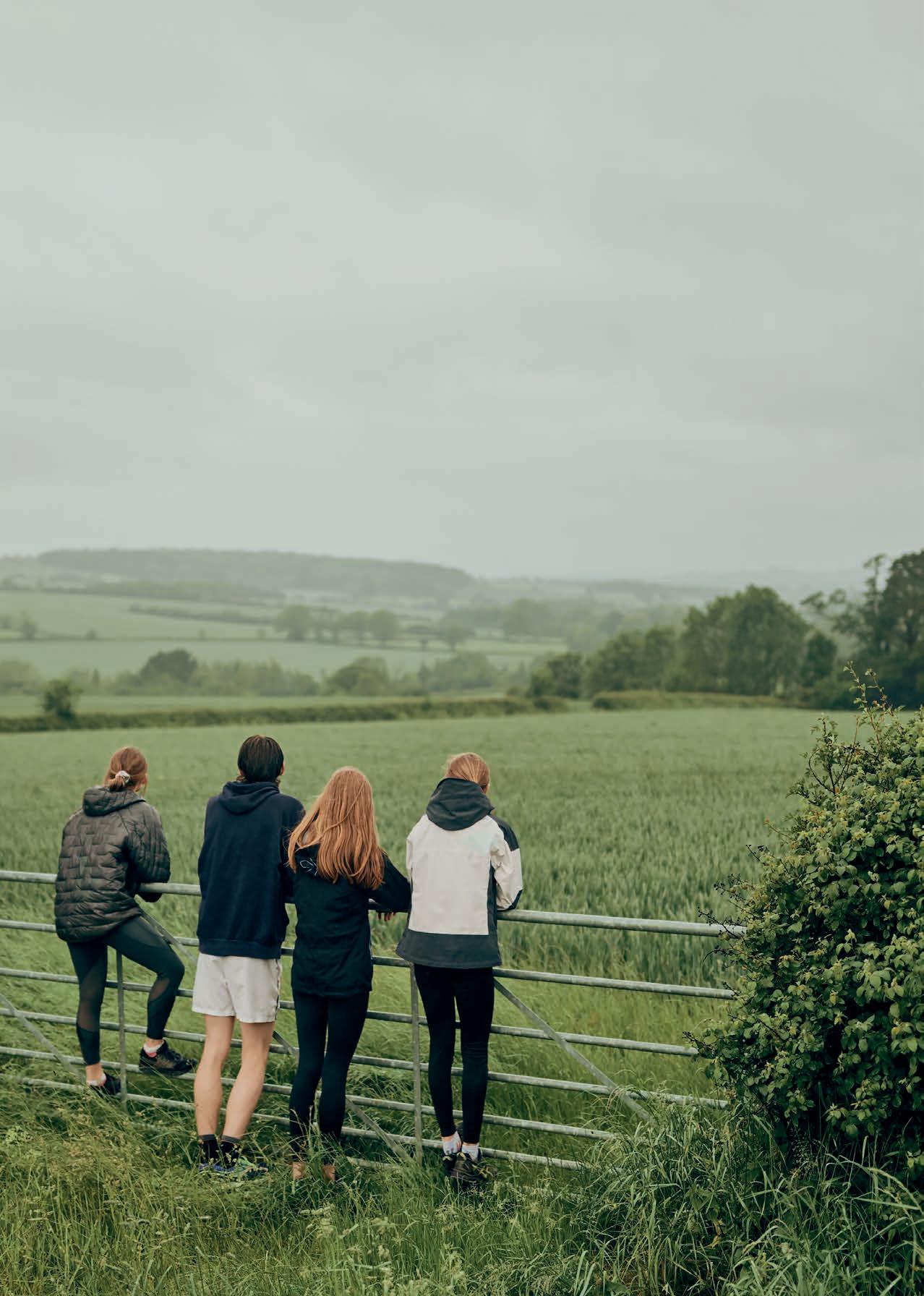



Talking HEAD

Global Outlook
The Head of Queen Anne’s School on why arming students with an ethos of global citizenship has been front of mind this school year

It has been an extraordinary start to the new school year. For me, it is a joy to experience my first September at Queen Anne’s. The first few days of the month echoed previous returns to school that I have known and loved in other settings – the back-to-school feeling is echoed the world over.
I was mightily relieved to feel how the start of term, although pacy, had at least started at a canter rather than the all-out gallop that I had jumped into back in January when I joined. But then, in the early evening of our first Thursday, we received the sad news of HM Queen Elizabeth II’s passing. From there, our start of term took a very di erent turn, and we were reminded of how quickly we can be pushed o course.
As the eyes of the world centred on our very own London and we honoured the life of our Queen, I was struck by the kinship and coming together of communities that has become familiar over these unpredictable few years. It is the sense of global citizenship and hope that allows us to share positivity for the future with our students whilst also arming them with skills for the new world.
I have always been conscious that we live in a fast-paced and ever-evolving world. However, right now, the pace of change is exponential, precipitated
in no small part by technological advancement, globalisation, Covid-19 and the climate crisis.


As educators working in the context of the Fourth Industrial Revolution, we really do have to prepare our students for a world we do not know.
We must consider deeply the skills, knowledge and attributes that we wish to develop in our students to enable them to thrive.
Research by the McKinsey Global Institute has looked at the type of high-level skills that are becoming increasingly important in the workplace. Their findings highlight how individuals will need to continually adapt to new ways of working and new
occupations. This adaptable skillset is well known in the International Baccalaureate and, having worked in IB schools and in the UK and Belgium, I am embedding further this sense of deep learning and inquiry into the school’s ethos.
This year at Queen Anne’s, we are championing transdisciplinary projects, breadth of subject choices and an emphasis on volunteering and extra-curricular activities. Coupled with the breadth of our curriculum here and a positive approach to modern languages, we are ensuring the development of critical thinking, mental flexibility, emotional intelligence and digital fluency to help students to find their place as global citizens equipped for the evolving workplace.
99
SENIOR / TALKING HEAD
ELAINE PURVES Head Queen Anne’s School
“This sense of global citizenship and hope allows us to share positivity with our students – arming them with skills for the new world”
ABOVE Pupils at Queen Anne’s School
AUTUMN 2022 | ABSOLUTELY EDUCATION |
MONEY
A new book for young people sets out to demystify money and help them unlock their entrepreneurial flair, and the timing is spot on

100 LIBBY NORMAN
SMART
| ABSOLUTELY EDUCATION | AUTUMN 2022
Talking to young people about money is tricky. Schools usually shoehorn personal finance within PHSE. For parents, it’s even harder – we want our children to understand its value, its pitfalls and the importance of securing their own future financial stability without alarming them.
Despite best intentions, often we approach the subject with our own baggage (guilt, cynicism and anxiety included). What makes it more complex today is that all bets are o on old certainties – safe career trajectory, job for life, cast-iron pension.
Money has leapfrogged from business to front-page news this year – so a good time
for a financial heart to heart. A new book, Max Your Money, makes a great starting point for honest conversations. The book takes an international perspective and is aimed squarely at ‘tweenies’ and teens, pitching content at a level young people relate to. Its authors are old hands in the world of high finance. Larry (Laurence) Hayes runs an investment fund when he’s not writing books for children (including How to Survive Without Grown-Ups), while Rachel Provest is a family o ce and private equity director based in Singapore, and with a special interest and expertise within education.
Here’s some good news the book reveals. During their research, Hayes and Provest discovered a rich vein of optimism and entrepreneurial flair bubbling up among the young. “Larry and I were just amazed by the number of

case studies we came across of children in the target age group, from 11 upwards, who had started their own business and were running it brilliantly,” says Provest. “Having really taken the time to do the groundwork on this area, we’re convinced – and quite blown away – by the power of children to build their own businesses without that adult cynicism.”
Provest puts some of it down to the ease with which an internet connection enables young people to carry forward brilliant ideas, learning and researching as they go. “YouTube is the great educator these days.” She also believes young people see the business opportunities adults can’t spot. “Adults are almost in their shadow trying to keep up with the way they are thinking.” And thanks to crowdfunding and other new avenues of funding, the traditional barriers are down. “Historically, you had to have money behind you otherwise it was impossible to catch up – you never had that advantage – so very few children could get beyond that and be successful o their own back. Whereas now, there’s really nothing stopping children as long as they have a good idea. With that, it’s more important than ever to make sure that they do have this basic understanding – how do you understand a profit and loss account, what’s the bottom line, how do you budget?” says Provest.
This is where the book does a brilliant job. Divided into Earn it, Grow it, Use it, it o ers the kind of useful information every young person needs. For instance,
101 SENIOR / MONEY
“With children there’s no cynicism there – no negativity – they just go into things with best and honest intentions”
AUTUMN 2022 | ABSOLUTELY EDUCATION |
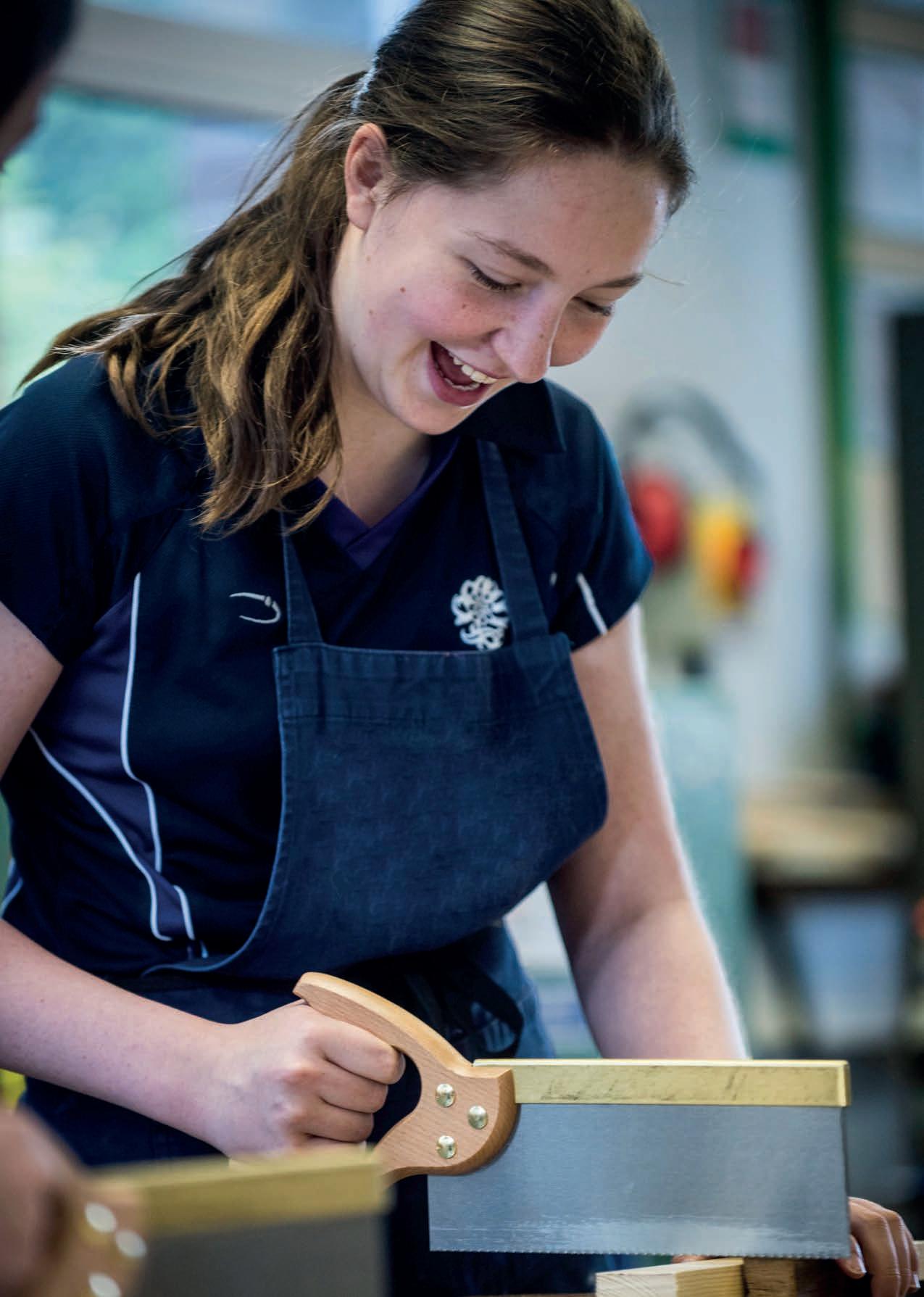




135 years of empowering girls to forge their own path. Year 7 2023 entry application deadline: 14 November sydenhamhighschool.gdst.net
it has a comparison of certain jobs and what they pay. (Who knew a Lego Master Builder can make £19 an hour and an English League 2 footballer makes £25?) Fascinating facts indeed, but the book goes deeper, including explanations about why some salaries are much higher than others, which jobs may disappear in the future and how to boost your earnings.
There’s advice on how to work out what sort of job would suit you, and how to

approach interviews. Also, how to negotiate a pay rise and know your own worth – a section many parents may also find useful. The book covers savings and investment, spending money wisely, e ective charitable giving and – in the most exciting part –testing your own brilliant entrepreneurial ideas like a business pro to see if they could be winners and then learning about other successful young entrepreneurs.
The authors got their own children involved as critical readers to ensure the text was clear and engaging. “If they didn’t understand what we were talking about we’d go back and try and clarify it a bit more. So that helped us ensure we had a form of bulletproof book that was definitely child friendly,” says Provest. One thing that surprised them both during their research was young people’s openness to business ideas and their ‘can-do’ spirit of optimism. “It’s wonderful because with children there’s no cynicism there – no negativity. They naturally don’t think that way, they just go into things with best and honest intentions.”
Read the book’s case studies of young entrepreneurs and you will agree that there’s something wonderful going on. From the super earner Ryan (of YouTube channel Ryan’s World), who earned $29.5m


in 2020 as an unboxer to the Argentinian ethical hacker Santiago Lopez who netted a more modest $1million plus, young entrepreneurs around the globe outline how they have spotted opportunities and gone for it. The Max your Money authors have a companion book on its way for young would-be millionaires and Provest is looking to use some of their research so far as the basis for a curriculum to help young people unlock their entrepreneurial talents. One side benefit of Max Your Money is that Provest’s own daughter – one of the book’s critical readers – has taken its ideas to heart. Aged 12, she is now running a startup that utilises her digital skills and creative spark. “She makes TikTok videos for companies,” says Provest. “It started with a friend who needed help. It has gone from one to seven people. She sets their videos up for them, which is fantastic. I’m looking forward to retiring quite soon!”

103
“We were just amazed by the number of case studies we came across of children who had started their own business and were running it brilliantly”
RIGHT Rachel Provest BELOW Larry (Laurence) Hayes
Max Your Money by Larry Hayes and Rachel Provest is published by Welbeck Children’s Books, price £14.99.
SENIOR / MONEY
AUTUMN 2022 | ABSOLUTELY EDUCATION |









Book a visit: https://wells.cathedral.school/relocating admissions@wells.cathedral.school Nursery - Pre-Prep - Prep - Senior - Sixth Form Thinking of Relocating? Wells Cathedral School is a co-educational day and boarding school based in the vibrant City of Wells surrounded by Somerset countryside. DirecttrainstoLondonfromnearbystationsofBath,BristolandCastleCary
Talking HEAD
Culture CHANGE
Cancel culture is on the rise. It has become familiar to see a person or business called out publicly about something they have said or done. It is important to call out injustices, but we must also ensure that young people are equipped to express themselves in a reasoned, respectful and empathetic way. For many children, cancel culture has contributed to hesitation and nervousness in expressing opinions for fear of being ‘cancelled’. It can promote group thinking because individuals are not confident enough to stand up against louder voices.
Recognising mistakes and then addressing them is a part of life and of learning. Yet cancel culture does not allow that freedom – there is no room for apologising, demonstrating remorse and making amends. So how can we help our students develop open, unbiased

is crucial, as is recognising strength in diversity – whether that be politics, academic theories, gender or race.
Each year, we hold our own Question Time, staged in a formal environment with visiting politicians. We also focus on presentation skills, with regular opportunities to deliver these in lessons, year group, assemblies and in Chapel readings. We have a Student Council, and pupils and sta run committees where opinions and ideas can be raised and discussed openly.
opinions based on information and evidence rather than posts on social media or what their friends say? The solution lies with providing a safe and accepting school culture, also providing opportunity and guidance to develop tolerance and empathy, along with critical thinking and listening skills.
We provide ample opportunities for our students to research and develop thoughtful opinions, rather than relying on the quick fix of something trending on social media. Whole-school debates provide the platform for young people to understand other students’ perspectives and the reasoning behind these views. Appreciating the viewpoints of others
We help our pupils to recognise that tolerance is not passive. It demands an active choice to reach out when there is disagreement, on the basis of mutual respect. Tolerant people show their strength by being open to di erent perspectives, a trait that is important in personal development. Empathy is also a complex concept – we are asking young people to ‘walk in someone else’s shoes’ and understand the feelings of another. It’s really important that every opportunity is taken to model and teach both these attitudes throughout everyday

school life and also the planned curriculum. When people take an interest in what others think, feel and experience, they are recognised as caring, trustworthy and approachable – excellent skills and attributes for life. In Years 7 to 13, Heathfield’s positive psychology curriculum is used to teach and help students develop the skills of empathy, gratitude and selfawareness, alongside emotional intelligence. Building a school culture where individual voices and di erent viewpoints are heard and expressed is vital. With the rise of cancel culture, our students need to understand how to promote mutual tolerance and respect – and also maintain freedom of expression in their own interactions.
SARAH WILSON Headmistress Heathfield School


Society is evolving and young people have an important role to play in communicating their experiences and perspectives. Education should help them use their voices confidently and intelligently, forming their own opinions and arguing in an empathic and e ective way because that will enable them to make positive changes to their world.

105
SENIOR / TALKING HEAD
“Recognising mistakes and addressing them is a part of learning, yet cancel culture does not allow room for making amends”
ABOVE Students at Heathfi eld School
Sarah Wilson, the Head of Heathfield School, argues that teaching and modelling an attitude of tolerance and empathy is the best antidote to cancel culture
AUTUMN 2022 | ABSOLUTELY EDUCATION |
your daughter to achieve academically but you want her to be intelligent in other ways too
to be confident socially, to have a strong

to shape the world around her, to
in
St Catherine’s we support your daughter in building the intellect and character that will help her develop as a bright, confident, compassionate and vibrant individual. At the heart of this is developing her sense of self-belief, that she can achieve whatever she is driven to do in


Thursday 20th October 2022 Wednesday 30th November 2022 Tuesday 7th February 2023 You want
–
moral compass,
believe
herself. At
life. GSA Day & Boarding School since 1885 | 4 - 18 years | Guildford GU5 0DF 01483 899609 admissions@stcatherines.info
CO-CURRICULAR STRENGTH

The co-curricular side of life at schools should both complement and enhance the development of the enquiring mind. Academic excellence combined with creative activity and individual expression makes a school a thriving and highly motivated community. Learning can take place as much outside the classroom as within. The opportunity to conduct much of the co-curricular programme outdoors has clear benefits for pupil wellbeing. Being outdoors has been shown to lower stress, blood pressure and heart rate, while improving mood and mental health.
The King’s School, Canterbury places equal emphasis on co-curricular endeavours and on achieving academically. A varied and vibrant co-curricular programme provides pupils with opportunities and experiences that classroom teaching cannot o er. Throughout the year there are regular concerts, plays, recitals, exhibitions, talks, activities, workshops, as well as the Duke of Edinburgh Award, the CCF, community service, trips, and partnership events. These contribute to an all-round education
that prepares pupils for a modern global society when they enter the world of work.



The last week of Summer term heralds King’s Week, a festival and celebration of music, drama, dance, art, recreation, and sport that has occurred every year since its beginnings in 1952. The Kentish Gazette on 1st August 1952 reported: “The whole of King’s Week, Headmaster Dr. Shirley declared, was a completely mad venture. No other community could do all that and play three cricket matches as well. It was quite mad and entirely successful. It was the finest bit of education the school had this year. Everyone was doing something”.

King’s Week can claim to be unique on two levels. The events take place within the Precincts of Canterbury Cathedral, and the backdrop of this UNESCO World Heritage Site gives it a very special atmosphere (The King’s School itself dates back to 597AD). Also unusual is that the performances are very much pupil-driven: Acoustic Corner, The Sound, The Voice, and the King’s Week Lectures are just some of the shows that are organised and performed by the pupils themselves. A relaxing focus after the intensity of public examinations, it attracts thousands of visitors and provides a glorious conclusion to the academic year.
When it comes to partnership activities, tens of thousands of pupils benefit from partnerships between independent schools and state schools every year. Activities often include sharing resources and knowledge

to unlock new educational experiences for pupils. These collaborations enable young people from di erent backgrounds to learn together and build mutual respect.
King’s is a member of East Kent Schools Together, a group of ten local schools and one university which aims to raise aspirations and widen horizons through collaboration. The main objectives of the group are to enrich teacher professional development, to strengthen teaching and learning amongst the schools and to develop pupil confidence and wellbeing by bringing children together for shared experiences – cultural, sporting, academic, and volunteering. Pupils on both sides of these partnerships benefit greatly, developing important skills such as leadership, compassion, teamwork, confidence, and communication.
“A varied co-curricular programme provides pupils with experiences that classroom teaching cannot offer”
107 SENIOR / OPINION
The King’s School, Canterbury outlines the benefits of its programme of co-curricular activities, including King’s Week and local school partnerships
GREG HUNTER Deputy Head (Co-curricular) The King’s School, Canterbury
LEFT Students at The King’s School, Canterbury
AUTUMN 2022 | ABSOLUTELY EDUCATION |
HAPPINESS GETS RESU LTS























We all want our children to succeed, but it’s how that success is defined that can make a school stand out.
At Portland Place School teachers see your child’s potential and set it free. The personalised and nurturing educational environment allows children to become inquisitive, creative and open-minded and to achieve a real-life education beyond just exams.

The result? Our students achieve personally, socially and academically.












Entry in Years 6, 7 and 9. Find out more about how happiness gets results. www.portland-place.co.uk or admissions@portland-place.co.uk Portland Place School, Regents Park.

. Autumn Open Events 3rd, 12th & 24th November the Gold Standard in educationBOOK HE RE
INDEPENDENT CHOICE
The Deputy Head of Pangbourne College considers why so many parents opt for an independent school for their child’s senior years
Each year, around half of Year 7 pupils join Pangbourne College from state primary schools. So why do so many parents choose a fee-paying school for their child’s senior education? To begin with, there are many practical benefits for busy working families used to juggling school runs with mealtimes, after-school lessons and clubs. Independent schools generally o er a longer day filled with co-curricular activities, alongside academic learning. Boarding schools with day pupils o er even longer days – with the option of having all meals provided, plus the opportunity to stay overnight on an occasional basis.
It’s generally acknowledged that independents can o er a far greater range of non-academic activities. At Pangbourne there are opportunities to
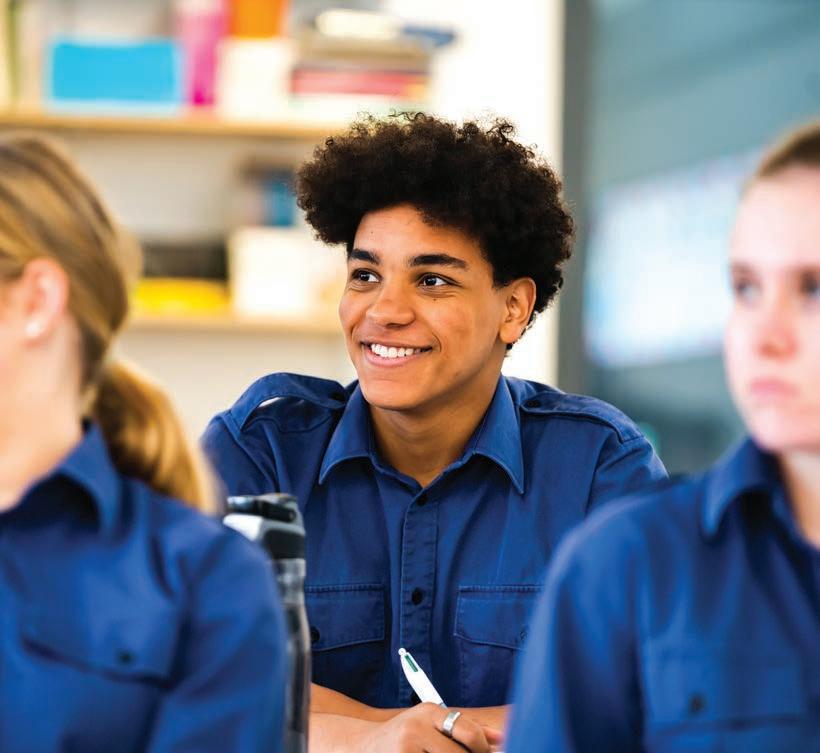
try things such as rowing, horse riding, clay pigeon shooting and yoga. There are also organised visits to interesting places – from London’s V&A Museum to the Nabugabo Learning Centre in Uganda.
If a child has a particular interest in, say, sport, music, drama or art it can be challenging for state schools to find the resources to nurture their enthusiasm. Independents are likely to have specialist teachers and facilities that ensure that children can both discover and develop their talents. Most importantly for some parents, an independent education can lead to better academic results. Class sizes are usually much smaller, which means that teachers can spend more time with individual pupils. Children who have the potential to achieve top grades are more likely to receive the stretch they need. Conversely, for students who find that academic achievement does not come so
easily, an independent school is likely to identify where they would benefit from support and also have the resources to help them achieve their full potential.
With a combination of academic results and opportunities to pursue interests, independently educated children are also encouraged to develop ‘soft skills’, including resilience, adaptability and leadership. These skills set them in good stead for life after school. There’s usually a strong alumni network to call upon for support and guidance on next steps. These networks and connections can be invaluable in helping to choose and build a career path. Another key benefit is the strong social ties that are built up over the five to seven years that a child is at an independent senior school. These are valued by parents and teachers alike and enrich the whole school and wider community. At Pangbourne, our parents’ association organises social events such as dog walks, an annual ball and the Christmas Market. Our boarding house structure o ers many more opportunities for families to come together at dinners, barbecues and at our College Sundays.
At the end of the day, an independent education is a significant investment in a child’s future. The key is to consider all the elements important to you and find the school which is the right fit for your child and for your family life. If you find a school which o ers all these benefits, it will be a very good investment indeed.
SAMANTHA GREENWOOD Deputy Head Pangbourne College


109
“There are practical benefits –independent schools offer a longer day filled with cocurricular activities”
SENIOR / OPINION
ABOVE Pangbourne College students
AUTUMN 2022 | ABSOLUTELY EDUCATION |

“THERE’S A RICH VEIN OF KINDNESS” TATLER “ONE WORD: EXCEPTIONAL” TATLER “MOST FORWARD THINKING SCHOOL” THE WEEK WISH YOU WERE HERE BRIGHTON COLLEGE THE SUNDAY TIMES United Kingdom School of the Decade JOIN US AT AN OPEN MORNING BOOK YOUR PLACE 01273 704200 | BRIGHTONCOLLEGE.ORG.UK
DIVERSITY PROGRESS
What happens in schools today will impact directly on the shape of our future society and, whilst Diversity & Inclusion (D&I) progress has been made, there is no space for complacency. We are particularly alert to the fact that an increasingly diverse community – of pupils, sta and governors – does not necessarily mean a genuinely inclusive one. The litmus test for inclusion is when all within the school community feel they are valued, listened to, and have found a place where they don’t just ‘fit in’ but truly belong.

Our commitment to D&I is rooted in processes and challenges we have identified through external surveys and pupil and sta voices. In addition to ongoing curriculum review and reform, our core actions focus on training to educate and build sta confidence. We consider recruitment and retention – essential in helping pupils ‘see themselves’ reflected in the sta body. Pupil mentoring and raising awareness across the pupil body around bias, banter, discrimination and prejudice are part of our work. We also have an ‘Inclusive Environment’ programme
that develops display, signage and messaging celebrating core D&I values.
A self-selecting group across the school community, our D&I Alliance considers issues around Race and Ethnicity, LGBTQ+ and Gender Allyship. These strands are led by our D&I Prefects and designated sta members, with overall support from our Director of Diversity and Inclusion. We also have a forum made up of a representative from every tutor group in the College. We meet termly to hear
their views and suggestions and ask questions to further the work of the Alliance.
Looking at wider learning, our Free Learning calendar of events, often run for or in conjunction with our partner schools, includes Black History Month, Holocaust Memorial Day, DC IAM (in February 2023 the College will hold its third Identity Awareness Month), International Women’s Day and Refugee Week.

We recently screened the Windrush film Stand Firm, narrated by Benjamin Zephaniah, holding a Q&A with its director Theo Lee Ray and Co-Founder of the Windrush Foundation Arthur Torrington.
This academic year, our Archive Research project will uncover and add to our own hidden history, celebrating diverse pioneers from across academic, entrepreneurial, creative, cultural, adventurous, and sporting fields. On a day-to-day basis, here at Dulwich College we are determined to help our community be more aware, be active in allyship, and strive to ensure all pupils and sta feel they belong.
Senior Deputy, Dulwich College
111 SENIOR / INSIDER
ABOVE Fiona Angel
“The litmus test for inclusion is when all within the school feel they are valued, and have found a place where they belong”
The Senior Deputy at Dulwich College reflects on progress made with its Diversity & Inclusion programme and the opportunities and challenges ahead
FIONA ANGEL
LEFT Dulwich College student artwork celebrates D&I values
AUTUMN 2022 | ABSOLUTELY EDUCATION |
Minding our LANGUAGES
Modern foreign languages are in decline as a subject choice, but not all schools are following that curve. Absolutely Education spoke to three independents that go out of their way to inspire and develop young linguists

112
Language teaching at Tonbridge
| ABSOLUTELY EDUCATION | AUTUMN 2022
By most measures, language teaching in the UK is in a parlous state. Half of Year 10 students were not studying a second language in 2021. While Brexit may sometimes gets blamed, this is part of a long-term decline. Applicants for GCSEs in modern foreign languages have dropped by over 40% since 2003. So why don’t more young people learn to communicate in another tongue? There is a perception that languages are hard subjects, so perhaps young people don’t want to risk lower grades. There may also be some confusion about their ‘relevance’ and application to future careers.
Thankfully, independent schools have a far better track record, with approaches that are designed to inspire and motivate young people. We spoke to three schools that are making modern foreign languages a passport to success.
The Leys School
Located in Cambridge – among the UK’s most multilingual cities – The Leys School takes language learning seriously. While French, German and Spanish are on the curriculum, the possibilities don’t stop there. “We also o er the opportunity to learn other languages – for example Mandarin, Cantonese, Italian and Russian – either via a native-speaking tutor or independently,” says Head of Modern Foreign Languages Maxine Wyatt.
At The Leys, there are specialist language classrooms as well as a fully equipped

language lab, plus tools for independent learning. “Our modern web-based software, Sanako Connect, enables face-toface, remote and hybrid teaching,” adds Wyatt. This software enables pupil self-evaluation and assists speaking and pronunciation. Native-speaking Language Assistants are on hand throughout the language learning journey to help pupils hone their speech and understanding.
Recognising the need to inspire young people with the broader possibilities, The Leys ensures added-value experiences. There’s are trips to France, Germany and Spain. While there, students enjoy an immersive range of extras in the target language – including cooking, sport activities, city tours and museum trails Maxine Wyatt says young people relish the horizon-broadening potential and see the value and impact of what they are doing as going beyond speaking another tongue. “Leysian pupils are fully aware of the importance and value of language learning. Every opportunity is taken to discuss national, European and global issues in the target language,” she says.
“Talks and debates by outside speakers and in-school experts are also developed.”
James Allen’s Girls’ School (JAGS)
At JAGS in Dulwich, building engagement is seen as critical. Head of Modern Foreign Languages Cristina Sanchez says it comes down to pupils having a sense of the value of languages for their futures, as well as a perception that these are subjects in which they can have autonomy and self-e cacy.
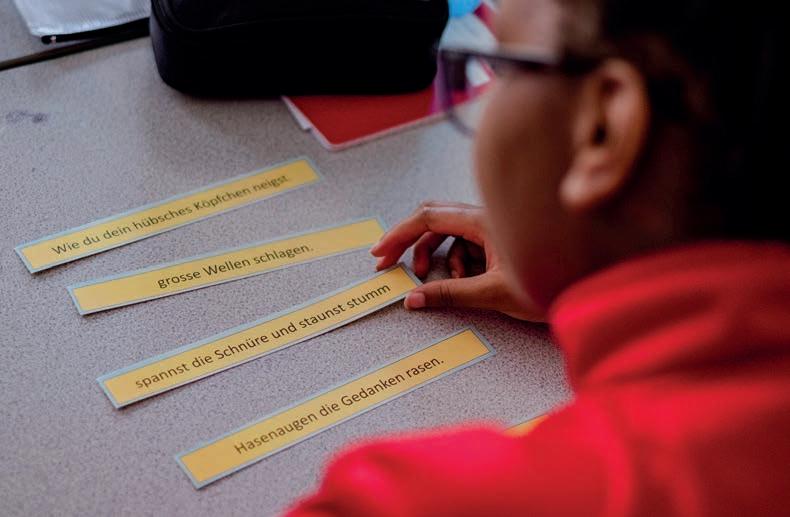
The school o ers GCSE and A level in French, German, Italian, Japanese, Russian and Spanish. It also supports bilingual pupils adding qualifications in their home languages – currently these include Chinese, Portuguese, Turkish and Gujarati. Beyond the broad choice, it’s the sense of excitement that sets students up to succeed. “Language learning carries on beyond the classroom walls, with a diverse programme of extra-curricular activities and enrichment programmes,” says Sanchez. “The atmosphere in the classroom induces language learning in a supportive, low-anxiety context, where learners can take risks and make mistakes.”
Classroom environments support varied learning styles, with audio-visual equipment and interactive games a part of each lesson. Pupils can also access digital subscriptions to keep them on top of grammar, vocabulary, spelling, listening skills and syntax. “Students can work autonomously in the areas of the curriculum that they believe needs more practice.”
Co-curricular activities are championed, with residential trips, cultural events and workshops, as well as collaborations with other schools. “The list is long, but the
113 SENIOR / MODERN LANGUAGES
ABOVE Testing understanding at JAGS
BELOW Learning at The Leys School
“Every opportunity is taken to discuss national, European and global issues in the target language”
AUTUMN 2022 | ABSOLUTELY EDUCATION |


We are an online tuition service that empowers GCSEand A Level students to achieve grades 7-9 at GCSE and B-A* grades at A Level so that they can progress to the colleges, universities, apprenticeships and careers of their dreams. All our tutors are fully qualified teachers with at least three years’ experience teaching and raising achievement in their subjects. 07470578247 | hello@espd.school | espd.school THE WORLD IS OUR CLASSROOM “I graduated from one of the top 10 universities in the world and it is safe to say I wouldn’t have reached this point without his support and encouragement along my academic journey.” S.B. School of Exam Success and Personal Development
impact is the same: a boost in motivation and a celebration of the wealth and richness of cultural diversity in our school community and beyond,” says Sanchez.
She adds that JAGS girls understand the wider impact, seeing languages as a skill for life as well as career. “Multiculturality is the norm in cosmopolitan cities, with diversity and inclusion at the heart of many institutions and companies,” says Sanchez.

The added bonus, she says, is that learning languages helps other skills, too. “Learning a foreign language strengthens literacy, analytical skills, public speaking, critical thinking, and cultural understanding. An added bonus is that once you have learnt one foreign language, the subsequent ones are faster and easier to learn”.
Tonbridge School
Tonbridge School bucks every national trend for modern languages and has been described as having one of the best departments in the country. The school notes that its Modern Languages Department sits: ‘physically and spiritually at the heart of the school’. Traditionally, the second most popular degree chosen by Tonbridge leavers is languages or languages in combination with another subject.
The Department is led by Will Law, also Head of French. He is frank about the broader challenges modern languages face in the current UK climate. “Students are increasingly interested in, perhaps obsessed by, a sense of utility. They are looking for routes that will allow them to get jobs, make money, be successful, and that’s understandable.”
The school o ers French, German, Spanish and Mandarin as its key choices but supports students interested in other languages. Italian, Japanese and Russian tutors visit regularly to give lessons and Tonbridge also works to assist other student language interests when they arise.
Alongside all the traditional and modern language teaching tools and aids, Will Law says the department puts as much into the mix as it can to broaden the context. “We deliberately try and stu the topic that we teach full of cultural insights,” he says.
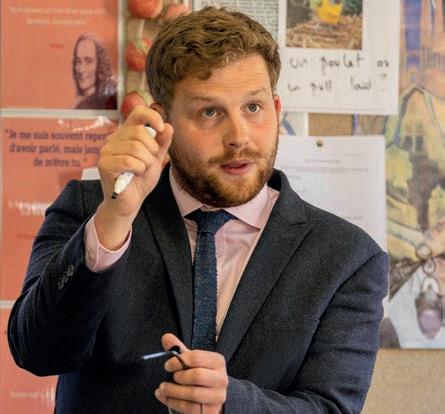
This might include informal studies of films, stories and short texts. They also encourage boys to delve deeper culturally as watchers and listeners, be it sports reports, news or documentaries. “It’s guided by and curated by their own curiosities and interests.”
Tonbridge parents are hugely supportive – often expressing regret about their own failure to continue studying languages –and many boys go on to A level and degree level. (Students here have an impressive track record of acceptance to Oxford and Cambridge modern languages courses.)
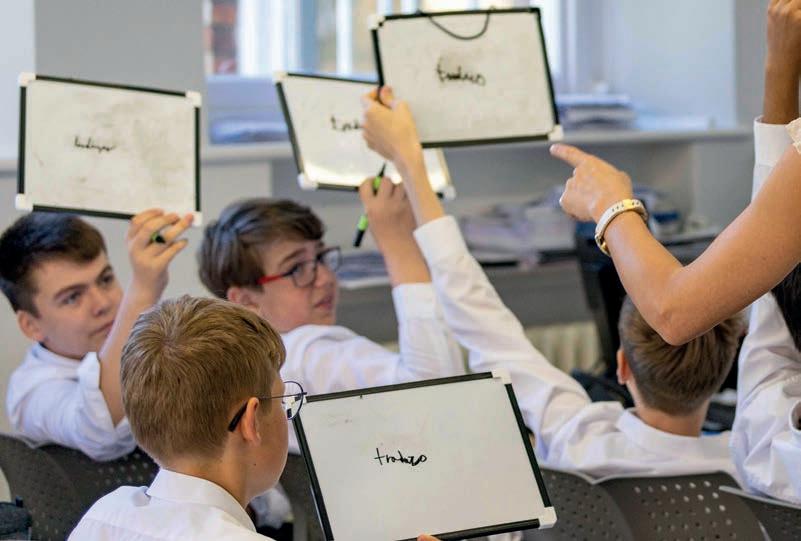
A gamechanger for Tonbridge has been introducing additional Sixth Form programmes alongside A level. This means boys struggling with subject choices –for instance, deciding they must focus on sciences – no longer need say adieu to languages. The French DELF, and equivalent courses in all four curriculum languages, count on UCAS forms and can be used in conjunction with an application for a variety of combination degrees. These are also practical qualifications, recognised by business the world over – so rewarding and a boost for the CV. This programme means that, for instance, one third of students starting A levels at Tonbridge this year are continuing with a language – an impressive statistic.
As you’d expect, Will Law and team still work hard to encourage potential linguists to see taking languages to A level and beyond as a life and careerenhancing option. “The transferable skills wrapped up in learning languages are useful in broader contexts,” says Law. “In very few other subjects will they have to construct essays with so much precision and attention to detail.” Then, too, there is the value of languages beyond what they teach formally. “We’ve got quite good at helping boys to illuminate that pathway through their studies. The boys know that if they’re interested, and they stick at modern languages, there’s considerable pay o subsequently – and for their whole life, not just their studies.”
115
RIGHT Using technology for learning at JAGS
LEFT Quick language test at Tonbridge School
Will Law, Tonbridge’s Head of Modern Languages
“Learning a foreign language strengthens literacy, analytical skills, public speaking, critical thinking, and cultural understanding”
AUTUMN 2022 | ABSOLUTELY EDUCATION |
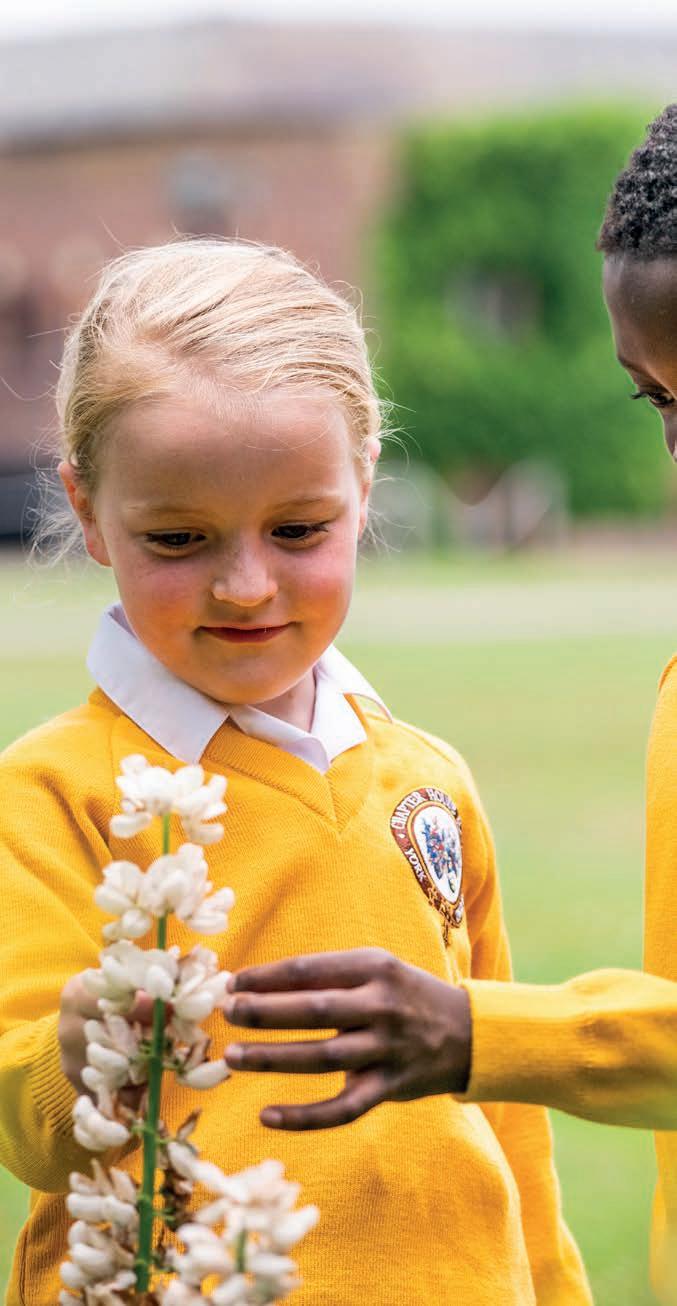


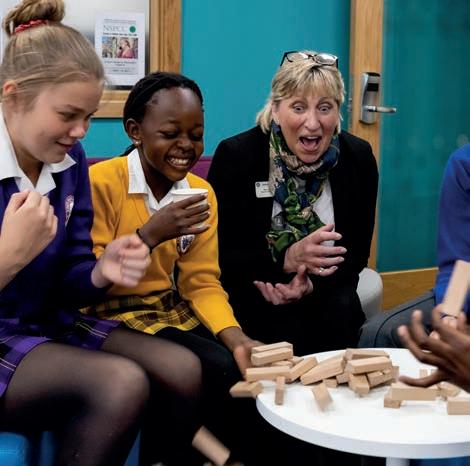




Welcoming day students from 3 months to 19 years and boarders from Year 3 “To be the best that I can, with the gi s that I have.” www.qe.org | admissions@qe.org | 01423 333330 | York YO26 9SS Queen Ethelburga’s Collegiate Set in more than 220 acres of beautiful North Yorkshire countryside “You cannot help but be impressed by the sheer ambition of QE. Facilities are spectacular, sta committed and clearly able, students delightful.” e Good Schools Guide Call to arrange a private tour or join us at our next Open Day on 26 November
WELLBEING TOP FIVE
Dr Jenny Griggs of Wellington College on using the NHS’ ‘Five Steps to Mental Wellbeing’ to help young people
Wellington College is a pioneer in placing wellbeing within mainstream education, having introduced its first course in happiness and wellbeing in 2006.

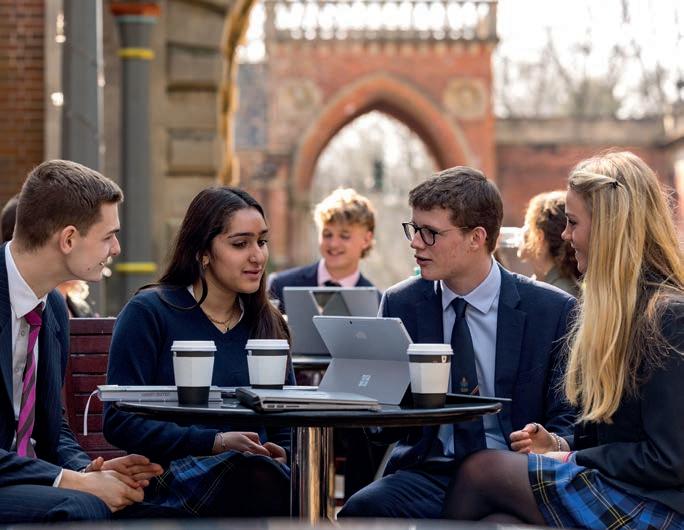
Now, as the College prepares to open its new Wellbeing Centre, it is a good time to review the NHS’ ‘Five Steps to Mental Wellbeing’ that will underpin the Centre’s work.
1. Make connections
Young people need to ‘find their tribe’. At school, co-curricular clubs are a fantastic way of connecting – Wellington has over 150 to choose from.The house system encourages close bonds, particularly with the support of the prefects, while a nity groups provide a safe space to discuss shared experiences. Parents can actively support their child’s relationships by helping them to find hobbies and facilitating catch-ups with friends.
2. Get active
Exercise is good for mental and physical health.Wellington is renowned as a sporting school, and with emphasis on inclusion. At home, parents can help with walks in the fresh air (a café at the end is a great motivator). Also encourage weekend sporting activities or suggest they join a gym with a friend.
3. Learn for fun
While learning a skill brings a sense of achievement, it’s also good for teenagers to have a go at something just for the sake of it. Both inside and outside school we should encourage children to try things simply for fun.We want Wellington pupils to be the best version of themselves, but also to relish the pleasure of doing something they love – with no bigger agenda than that.
4. Give back
Giving back is an integral part of our ethos and each house has its own dedicated charity. Our Global Citizenship programme helps pupils understand how they can have a positive impact on society, while student mental health ambassadors run ‘random acts of giving’ days. At home, the best approach is to role model kindness. This could be as simple as letting someone out a junction or helping a neighbour.
5. Be mindful
We teach mindfulness as part of the Wellbeing curriculum at Wellington, and
it can help pupils to switch o from the busy pace of modern life.As a parent, one of the best ways to demonstrate mindfulness is by being fully present when interacting with your child.Give your teenager your full (phone free) attention to convey care and interest and emphasise the importance of slowing down.
These five steps to wellbeing form the basis of Wellington’s new Wellbeing Centre.It will be a peaceful hub where students can hang out, learn new skills, exercise and try di erent wellbeing techniques, as well as accessing counselling and healthcare. Facilities will also be made available to the wider community. The Wellbeing Centre is being created because we believe we have a duty of care to provide a holistic one-stopshop where young people can nurture their physical and mental health – a space where wellbeing lessons can be put into practice.
DR JENNY GRIGGS
117 SENIOR / INSIDER
ABOVE Students at Wellington College
Head of Student Emotional Health & Wellbeing, Wellington College
AUTUMN 2022 | ABSOLUTELY EDUCATION |
“One of the best ways to demonstrate mindfulness is by being fully present when interacting with your child”
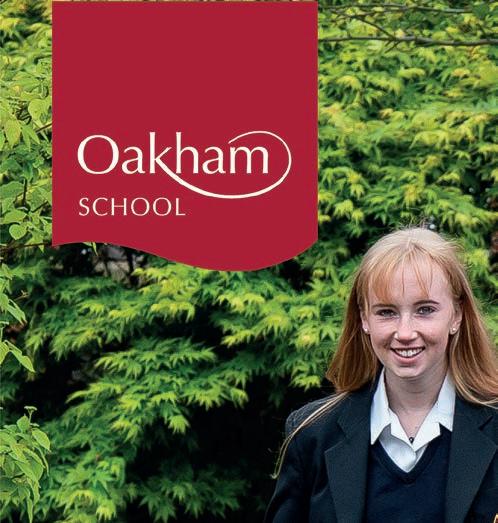


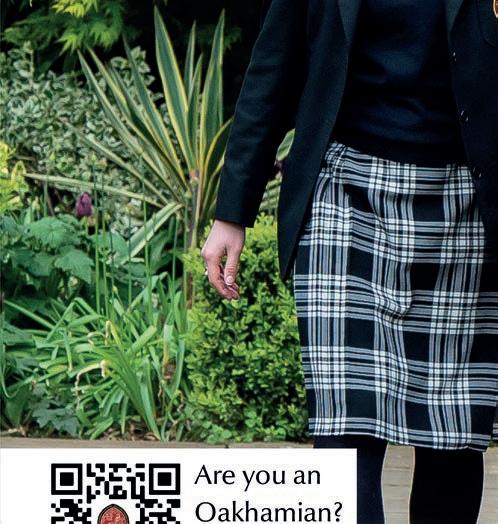





Talking HEAD

Beyond results
A
n exercise schools routinely undertake is to create a profile of their graduates. For parents, the question is: What will this school provide to ensure my child thrives? From the perspective of a school, the question is: How does our school mission support the development of the attributes required for students to thrive?
It is revealing and powerful to see the characteristics emerge. They do not include ‘excellent grades’ or ‘great testtakers,’ but they do include attributes – or qualities – such as being principled, compassionate, and open-minded. In a landscape where schools are rightly held more and more responsible for business-oriented concepts such as higher standards of accountability, expectations, and targets, it is equally important that
school leaders and teachers do not lose sight of their high sense of moral purpose. In my experience, in addition to academic rigor, schools desire to provide service, create community, stimulate inquiry, and nurture a sense of justice and equality.
In my almost 25 years in international education, I am humbled to have belonged to and served such learning communities. We are fortunate to have school governors, leaders, faculty, and sta who are committed to inspiring future generations to gain more from school than just knowledge and academic success. While gaining the knowledge students need to continue their learning

journey is important, so too is the development of attributes that promote a focus on community as well as self. When governors, leadership teams, faculty, parents, and students focus on more than test scores, it can transform their learning communities. These schools flourish through the positive and supportive relationships they build, both within the school and the wider communities to which they belong. Community service features high on the list of priorities and, as compassionate school community members reach out, they will be inspired by those for whom they provide service. Flourishing schools also provide balance through a range of pathways that o er a wide variety of subject areas and co-curricular activities.
Students from these schools commit to the quality of relationships they wish to have with their peers and teachers. They are confident, not only in the areas in which they find joy and success, but also when faced with challenges. This self-assurance enables our

young people to embrace the possibility of failure and to pursue a less travelled, but ultimately more illuminating, path. This courage sparks innovation through opportunities that enhance learning and teaching. This goes far beyond introducing various technologies and revising course guides or content. It delves into the exploration of meaningful questions and real-world issues, providing students – our future leaders – with the ability to be openminded enough to embrace and analyse multiple perspectives, to respectfully communicate questions, suggestions and solutions, and to e ectively collaborate with others.
As educators, we know how important results are in determining school success. But we need to take that additional and challenging step to focus on creating opportunities for our children to inquire, explore, and discover. In this way, we promote the skills and attributes that will serve them (and us) well in the future.
119
SENIOR / TALKING HEAD
BRYAN NIXON, Head of School , TASIS The American School in England
Bryan Nixon, Head of TASIS, looks beyond results to the characteristics that enlightened school communities focus on to ensure students thrive
“Flourishing schools provide balance with a variety of subjects and co-curricular activities”
ABOVE
Bryan Nixon and students at TASIS The American School in London
AUTUMN 2022 | ABSOLUTELY EDUCATION |
MUSIC MAKER


The new Director of Music at Wells Cathedral School Alex Laing on how young talent and musicianship are nurtured and supported

120
| ABSOLUTELY EDUCATION | AUTUMN 2022
Could you sum up your overarching vision as the new Director of Music?
Music should be celebrated by all and at all levels. This means everything from the high-profile successes on concert platforms and in competitions such as BBC Young Chorister of the Year to singers and bands appearing at Glastonbury, our two-year-olds learning music through play and all in our school community who love to sing together and support each other at concerts and events.
Wells is renowned for its cathedral choir but embraces all genres and styles of music making. How do you balance traditional and modern?
Traditional and modern approaches enhance each other at Wells. We are lucky to have a large music department that can support all genres equally and varied concert venues built over 700 years. Music is also spontaneous, with jazz appearing in marquees and foyers as well as on stage. We are one of the very first schools to appoint a Visiting Music Teacher for Songwriting to work alongside our traditional composition teachers. I have heard several tributes from our pop and jazz musicians that their music making has been enhanced by a grounding in classical traditions and techniques.
How are non-specialist musicians supported by the school?

Everyone at Wells has access to top-quality musical opportunities. Nonspecialist musicians outnumber the specialists, and many opt to take GCSE and A-level Music and Music Technology. Over 50 di erent ensembles and choirs at all levels cater for multiple tastes. Non-

specialists can perform at concerts or events alongside specialists or opt for occasions of their own, like our Going Solo series.
Wells seeks to explore the ‘interface’ between music and other disciplines. Could you explain key approaches here?
It is regularly reported how much music and learning an instrument support and enhance other disciplines. Practical music-making connects neural pathways and encourages thoughtful approaches useful for myriad other endeavours. Of course, our music and drama departments collaborate all the time on musical productions. Music and history combine yearly, with lectures and workshops putting music in historical context and vice versa. Learning an instrument has parallels with learning a sport, too. There are shared physical and psychological goals: awareness of posture, body-mapping, e cient and relaxed movement and strategies for dealing with performance anxiety. Wells puts on regular sessions enhancing these shared messages.
How does Wells support young musicians’ career development?
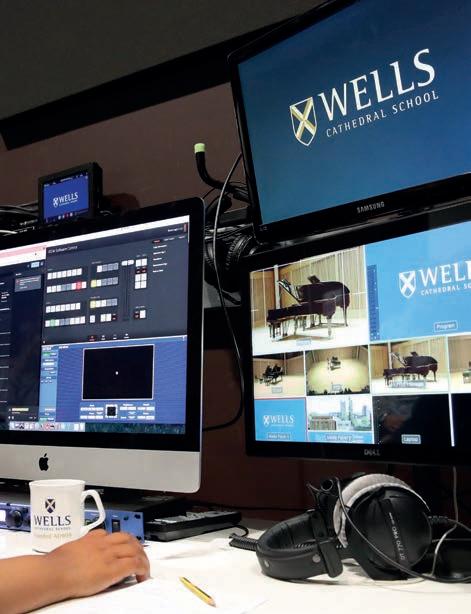
This is incredibly important to us, and we like to think that we are providing a model for others to follow. It is no longer realistic to expect to become solely a performing musician. We must all embrace much more varied and exciting musical careers. In addition to being accomplished players, we must now be entrepreneurs, teachers, presenters, administrators. Wells puts on weekly Professional Practice seminars to focus on building these skills, as well as resilience and strategies for living with nerves and anxieties. Our musicians support each other brilliantly during lows as well as highs. This camaraderie also helps us to celebrate di erent skills. Wonderful technical performers may not be natural presenters. The peer-on-peer support networks allow our pupils to practise and teach each other in very constructive ways.
How does Wells share music with the wider community?
We regularly welcome pupils from other schools for free sessions, including instrumental skills and study days. We also give around 250 public concerts a year, including ‘Event on The Lawn’, which is organised and performed by pupils. Many concerts are free as part of our local outreach. Others are in aid of our activities in Sierra Leone, where we continue to support the building and running of a music school. We have a huge number of bursaries and scholarships and our goal is that anyone with talent can study here, irrespective of financial circumstances – we can’t always make that happen, but we do our absolute best.
121 SENIOR / MUSIC
“At Wells, our goal is that anyone with talent can study here – irrespective of financial circumstances”
LEFT Wells Cathedral RIGHT
Pupils have access to a wealth of music expertise
BELOW Music Technology is a popular option at the school
Alex Laing studied Music at Cambridge and the Royal Birmingham Conservatoire. Alongside his role at Wells, he works for the Benedetti Foundation as conductor and tutor.
AUTUMN 2022 | ABSOLUTELY EDUCATION |
Form







2024
your New Sixth
Opening
remarkable Discover Sixth Form Preview Evening 21 November berkhamsted.com Book your place future ourJoin
Boarder THINKING
At the start of every academic year, teachers spend time going through their class lists for the coming year identifying boarders with SEND or medical needs, but I wonder how many teachers also mark international boarders on their class lists? While we should not be treating them as significantly di erent from their classmates, international boarders do have significantly di erent needs from day pupils, so teachers should know who in their class is boarding. Boarders are, by their very nature, living away from home, sometimes for the first time, sometimes thousands of miles from family. Homesickness is real and, indeed, so is culture shock, but it isn’t just these aspects of boarding which we need to be aware of in order to support boarders. Many boarders come from other cultures, so UK boarding schools should not expect them to suddenly ‘become British’ on arrival – pop them in a uniform, feed them a roast every Sunday, and they’ll fit in, right? In fact, di erent cultures have di erent customs, ways of being and thinking – also di erent
concepts of shame – and it is important we spend time understanding this.
Some boarders have poor mental health. This may be for several reasons, but often the source of the issue involves family – parental pressure or the inherent need a young person feels to ‘prove themself’ or make the family proud. In many cases, there will be real barriers when it comes to accessing available support. Boarders often don’t wish to engage with school support services, preferring online and mother-tongue counselling. Usually, they will then pay inordinate rates for insu cient remote support, typically without telling their school. Post-pandemic, it is more crucial than ever that we encourage boarders to access appropriate support within and outside the protective environment of their school.
Normalising support is of paramount importance. Signposting boarders to the counsellor, independent person, house sta , medical centre, and external agencies through as many methods as possible can help them to begin to consider accessing support where they feel they need to do so. It is never useful to attempt to convince a boarder to access support – much better to coach them in the direction of making their own decision to take that critical first step.
I find the ‘Care / Understand / Help’ model of pastoral care helpful in such cases. I have no doubt that boarding sta care deeply about their young people, and they’re very able to identify issues and to signpost boarders towards


support. However, it is worth focusing on the ‘Understand’ part of the process.
Spending time with boarders to talk about their home cultures and identify underlying issues ultimately helps the young people find appropriate support. Not all people in a period of crisis need professional counselling, and it is too easy to simply refer the problem on. Boarding sta are not mental health professionals, nor should they be expected to be. However, when they spend a little more time listening to and understanding a boarding student, not only will the young person gain more, but these moments of truth often become the most important and rewarding moments for anyone lucky enough to be working in boarding.
JOHN J TAYLOR Vice Principal (Boarding), MPW London

“Post-pandemic, it is more crucial than ever that we encourage boarders to access appropriate support”
123 SENIOR / OPINION
The Vice Principal (Boarding) at MPW London on why we must consider the specific needs of international boarders in order to deliver the right pastoral support
BELOW Students
at MPW
London
AUTUMN 2022 | ABSOLUTELY EDUCATION |
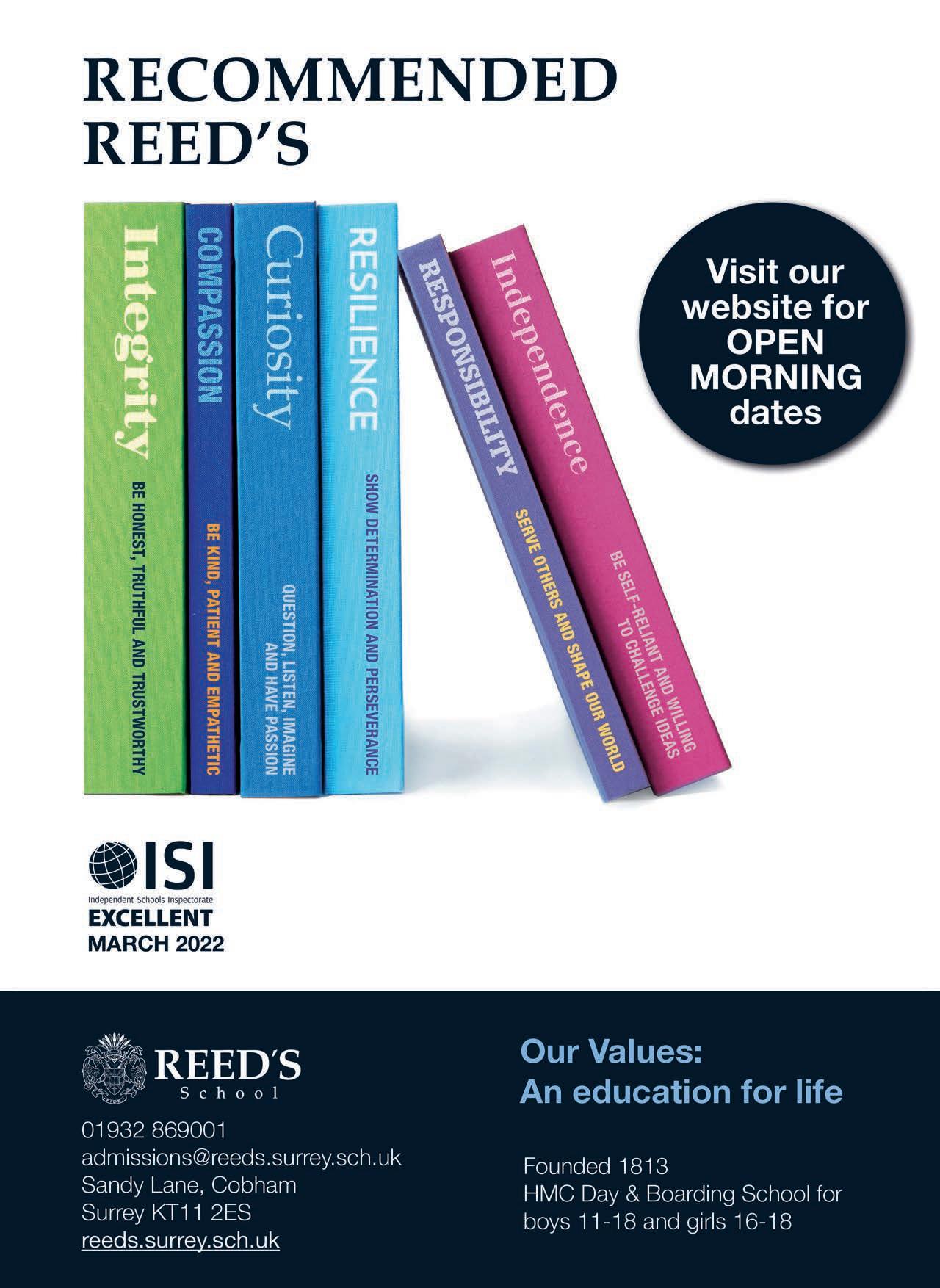
Talking HEAD

Managing change
Antonia Geldeard, Head of Sydenham High School GDST, on the importance of supporting key moments of change in our children’s lives


s a parent and a teacher who has been part of key rites of passage in a child’s life, I recognise the significance of ‘liminal states’ – those moments where a parent and child stand on a threshold of a new start or transition. These include beginning school (that snapshot of the first day), moving to secondary school and choosing GCSEs and A levels.
A
Change is transformative and key to ongoing development. We want each of our girls to successfully navigate a period of flux and emerge secure and happy in their new phase. They should enjoy coming to school, feel known and valued within their community and energised by the change and the new possibilities this brings. The prospect can be more anxiety-inducing than the reality, so encouragement and preparation are key. For our 4+ and 11+ entrants at Sydenham High, we are firm believers in plenty of visits and taster and familiarisation sessions.
From something as simple as giving a child the opportunity to inhabit a new space and create the memory of a positive experience to our more structured induction programmes (which work to develop ‘tool kits’ to help each individual manage their experience) we are committed to devoting the time and attention needed. Communication with home is equally important – little things can
feel big during moments of change. Behind the cries for independence, older teenagers equally need support – sometimes more, in fact, as they prepare to make decisions which can be seen as more definitive. Solid foundations are built on dedicated career advice and one-to-one discussions of the academic options. Taster lessons and research are key for GCSE and A level, to avoid decisions based around short-lived criteria. An informed choice provides an increased sense of control over potential pathways and furthers self-belief. I believe in the importance of developing flexible and varied skillsets to prepare for the changing world of employment ahead.
Our bespoke sixth form enrichment programme includes building professional skills and voluntary work, as well as academic electives and EPQs to broaden critical perspectives and prepare for the transition to higher education or the world beyond. These are complemented by many developmental opportunities
o ered through the GDST network to connect pupils with a network of alumnae.


In addition to the benefits of educating our girls all the way from aged 4 to 18, I value ongoing relationships which recognise the character and aspirations of each girl and their development through childhood and adolescence to adulthood at their own pace, able to learn from mistakes and make changes. Committed, regular connections between all the sections of our school see pupils supported through academic and personal journeys by their ‘big sisters’ as well as sta , fostering the inner strength to be bold in their voyage of discovery.
Crossing liminal spaces can be extremely exciting and fill us with a sense of mastery, but we recognise that this can also feel unknown and daunting. Like Tennyson’s poetic vision of Ulysses standing on the shore of the untravelled world, and yearning for the “gleaming” opportunity, I see these as moments to be seized, but always fully supported.
125
SENIOR / TALKING HEAD
ANTONIA GELDEARD Head, Sydenham High School GDST
“Change is transformative – we want our girls to navigate a period of flux and emerge secure and happy”
ABOVE Pupils at Sydenham High School GDST
AUTUMN 2022 | ABSOLUTELY EDUCATION |
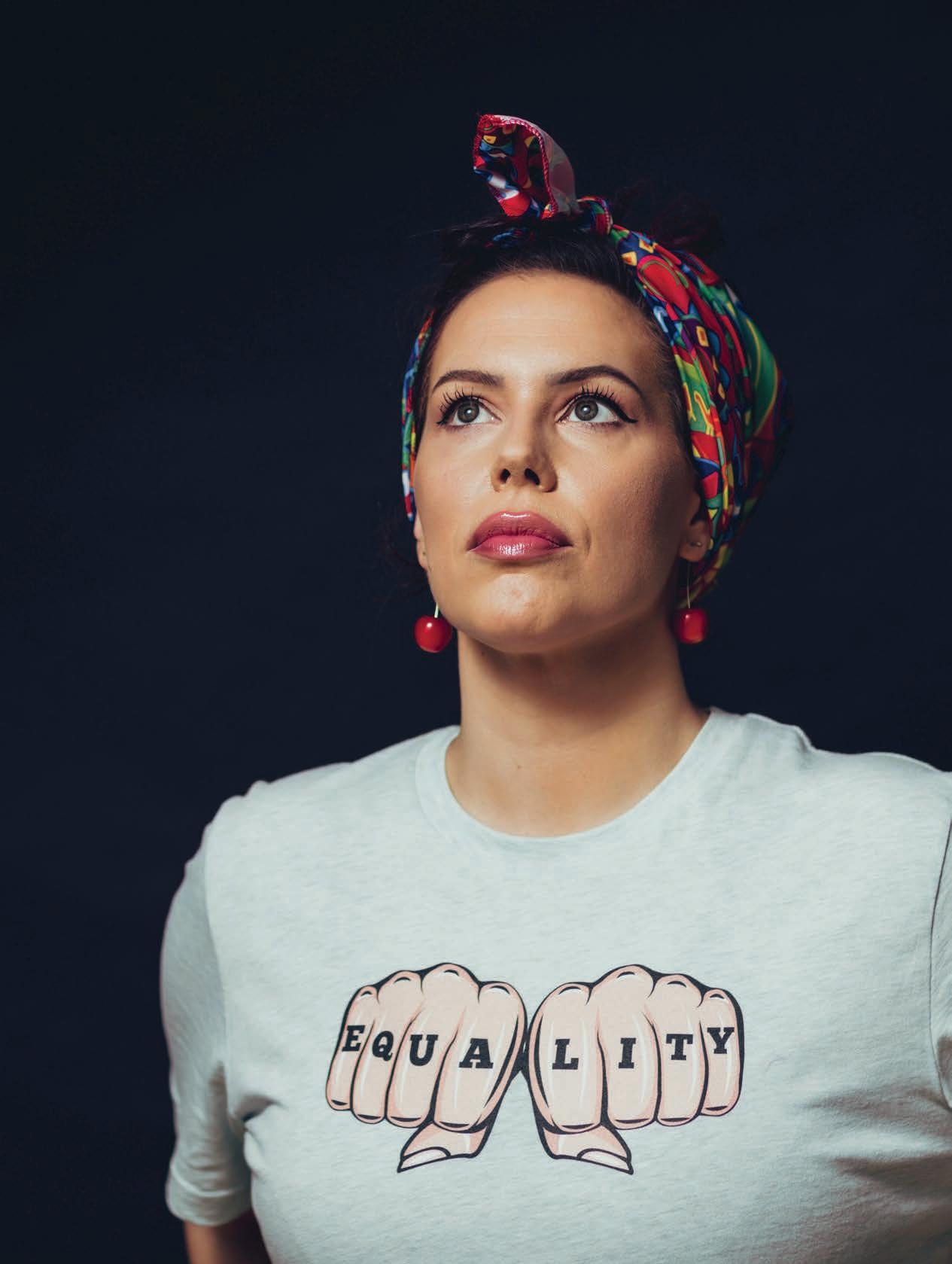
126
“Teenagers are natural libertarians. They don’t want to think that their way of thinking or their behaviour has been influenced or manipulated”
| ABSOLUTELY EDUCATION | AUTUMN 2022
Guiding LIGHT

Natasha Devon talks to young people, a lot, making hers a voice to listen to when it comes to helping them (and us) navigate the light and shade of growing up
LIBBY NORMAN
Natasha Devon speaks with authority about young people because she talks to them, all the time. In fact, her work still takes her into an average of three schools, colleges or universities a week. She’s a body image campaigner and was awarded an MBE for her activism on mental health issues. She’s also, clearly, a very good listener.
Toxic is her first foray into fiction and was inspired by some of her conversations and focus groups with young people. It explores the grey area around bullying and centres on a best-buddy school friendship between Llewella and glamorous new girl Aretha that takes a negative turn. Devon believes toxic teen friendships can be hard for an outsider to spot, let alone understand. “When we think of bullying, we think of something tangible,” says Devon. “But then there are all of these incredibly sophisticated ways that young people find to torture each other and undermine each other’s self-esteem. So that’s what I’m trying to focus on because
there’s no protocol for that in schools, and rightly so, it is a very nuanced thing.”
Devon says a close teenage friendship is di erent. “It’s really intense. It’s a kind of platonic infatuation, I think.” She points to the changes that happen in the teenage brain that make such friendships vital, but also volatile. “We’re supposed to be having a greater reliance on our peer group because that’s how we establish independence from our parents. So it makes total sense how much young people are investing in their friendships. But, by the same token, they’re at an age where everybody’s discovering who they are and trying on di erent identities.” Boundaries get crossed and pain, misunderstandings and confusion can follow.
Setting boundaries and protecting yourself are big themes in Devon’s discussions with young people. That includes protecting themselves online, where so much harm happens in the teenage friendship landscape. “That’s very much where I’m trying to lead them – digital citizenship. That’s not a term I invented. I’m an ambassador for a charity called Glitch and it’s a term they use a lot.
127 SENIOR / PROFILE
LEFT Natasha Devon. Portrait: Jonathan Donovan
AUTUMN 2022 | ABSOLUTELY EDUCATION |
It’s this understanding that we have an online life and that it’s not just about consideration of others in the way we behave online, it’s about being safe online ourselves.”
Sound advice, but do young people understand how big an impact social media is having on their lives? Devon’s answer, rather ruefully, is no they don’t. “I love working with teenagers – they are some of my favourite people – but the only thing I find challenging about them is that they are natural libertarians. They don’t want to think that their way of thinking or their behaviour has been influenced or manipulated,” she says. “Trying to introduce this idea that the brain is plastic, and therefore the more of something we do the more the brain develops in that direction, is quite di cult.” She focuses more on encouraging young people to think of self-care and, rather like art curators, surround themselves with what she calls: “the nourishing stu ”.
Devon speaks from a position of personal knowledge about the dark avenues young people can go down. She started having panic attacks at the age of around ten after a series of destabilising and traumatic family events, including the death of a cousin, but was only diagnosed years later, at 31, with an anxiety disorder. A decade on, it remains a part of her life and can be managed. “It doesn’t define who I am, and it doesn’t stop me being happy, productive or anything anymore. But
it was such a long journey to have got to that point.”
It was her own therapy journey that inspired her interest in mental health and shaped her career path. Today, Natasha Devon’s work with schools centres on helping young people to understand that the mind is something to nurture. “Everybody has got mental health and it’s something that we can monitor throughout our life, that will change throughout our life. Knowing that about yourself, being armed with that knowledge, is not something to be frightened of, it’s something that can really help you.”
There are pinch points that test young people’s equilibrium. Devon’s survival guide, Yes you can: Ace School Without Losing your Mind is for one of those pinch points – the transition to Year 9. “That is the year when everything happens,” she says. She means the classic teenage stu : first love, changing bodies and growing self-awareness. It’s full of practical wisdom, with recipes, exercises and advice on everything from study routines to creative breakout activities – also fun quizzes.
“Including lots of quizzes about things like ‘are you a lark or a nightingale?’, ‘what’s your motivation?’ helps to keep their interest. They’re learning about how they learn at the same time.” Underlying it all is a “sca old” approach – helping them build on existing knowledge – and showing that good mental health and good grades can coexist.
Devon has listened to the concerns of young people for well over a decade now – from body image and bullying to their sense of being constantly scrutinised and failing to live up to expectations and ‘perfect life’ social media narratives. And now Covid. Unsurprisingly, post-pandemic issues are in the conversations. “The big thing that I’m getting from young people is this sense of unfairness, also this sense that they’ve been written o .”
She thinks we adults could help by toning down the negativity – what she calls “lost generation rhetoric”. She chooses a glass-half-full approach. “I’ve
been having lots of conversations about how, when you look at the most successful people, they learned to adapt their goals in response to their experiences,” she says.
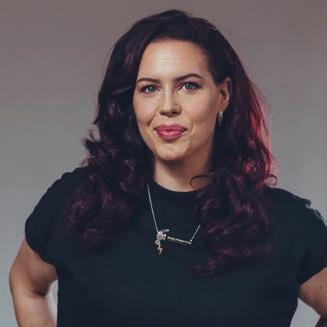
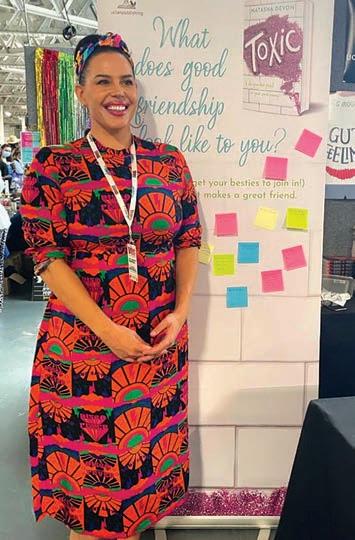

“Also, I talk about how important it is that they’ve learned to motivate themselves to work from home.” She discusses the self-knowledge they acquired during Covid and home schooling – including coping strategies they can use again. “It’s trying to get them to flip the narrative,” she says. “See it as an advantage that they had the opportunity to learn those things.”
Having escaped her destructive friendship, Toxic’s heroine Llewella concludes: ‘The thing about clouds is, they pass. And, if you’re very lucky, you have some lights to guide you home’. This is a pretty good description of Natasha Devon’s approach to working with young people –helping them to manage those inevitable clouds and discover their guiding lights.
Toxic is published by UCLan (£8.99). Yes You Can: Ace School Without Losing your Mind is published by Macmillan (£9.99). natashadevon.com

128
SENIOR / PROFILE
ABOVE AND RIGHT Natasha Devon has talked to thousands of young people – they inspired her new novel
| ABSOLUTELY EDUCATION | AUTUMN 2022 PORTRAITS:
JONATHAN DONOVAN









We believe that every child has immense potential that, in the right environment,

be uncovered, nurtured and realised.
excellence in the heart of Berkshire.

can
Co-educational
wellingtoncollege.org.uk
HEAD



Sharing VALUES
Mark Turnbull, Headmaster of Kent College, Canterbury, talks about the significance of rapidly changing times and the importance of a values-based culture


Some now refer to the lockdowns of Covid as something of a ‘great acceleration’. It certainly felt like it at the time. As with all rapid changes, there are often consequences that emerge in quieter times. If such times as these present us all with uncertainties, then it is all the more important that schools understand and live in a values-based culture.
In March 2020, schools in the UK were forced to adapt in an instant to online learning. Many achieved this brilliantly, and thereby allowed parents far more insight into the learning of their children. Quite often this also brought about a newfound respect for the creativity of the teachers who delivered it.
Such a rapid shift in perception occurred alongside an awakening of attitudes towards each other through Black Lives Matter and Everyone’s Invited. And, since the return to on-campus learning, it has become even more apparent that all schools need to further address teenage mental health. The overall e ect is that it is now so much clearer to many
ABOVE
Pupils at Kent College, Canterbury

that the role that schools perform in preparing children for their adult lives stretches far wider than ensuring academic progress and achievement. One look at the job titles of senior leaders in more progressive schools will start to show any parent how the nature of education has changed significantly.
At Kent College we believe every child will thrive if they are able to develop confidence in their own identity and abilities from a foundation of fundamental values. Like many schools, KC has a religious foundation, and ours is in Methodism. John Wesley, the founding father of Methodism, is often attributed with saying: ‘Do all the good you can, by all the means you can, in all the ways you can’. These powerful, and to some self-evident, words provide a strong starting point. What we want to do at KC is to provide a translation of these words that shows students how they can not only live by our founding principles but how these also support their wellbeing and personal fulfilment.
We began a process that consulted all our stakeholders, along with employers accessed through our parent body. From this we have distilled eight core values
that are true to our foundation and to the progressive curriculum we want to deliver.
Respect: Value oneself, others and the world around you.
Openness: Embrace equality, diversity and inclusion.
Act Justly: Work for good through service to others.
Kindness: Be considerate and compassionate towards others. Ambition: Engage positively with all learning opportunities. Resilience: Build the courage to take risks and to forgive others.
Humility: Walk humbly. Curiosity: Inquire actively.
Going through such a process has been so important in ensuring that we engage our whole community. For when we are all committed to the same values, every person knows that they can stand on a foundation that is supported by everyone around them.
If our children are going to be ambitious in their learning, and their wellbeing is going to be e ectively supported, then every school has to start with how it lives out its values.
131 Talking
SENIOR / TALKING HEAD
MARK TURNBULL Headmaster, Kent College, Canterbury
“When we are all committed to the same values, every person knows that they can stand on a foundation that is supported”
AUTUMN 2022 | ABSOLUTELY EDUCATION |
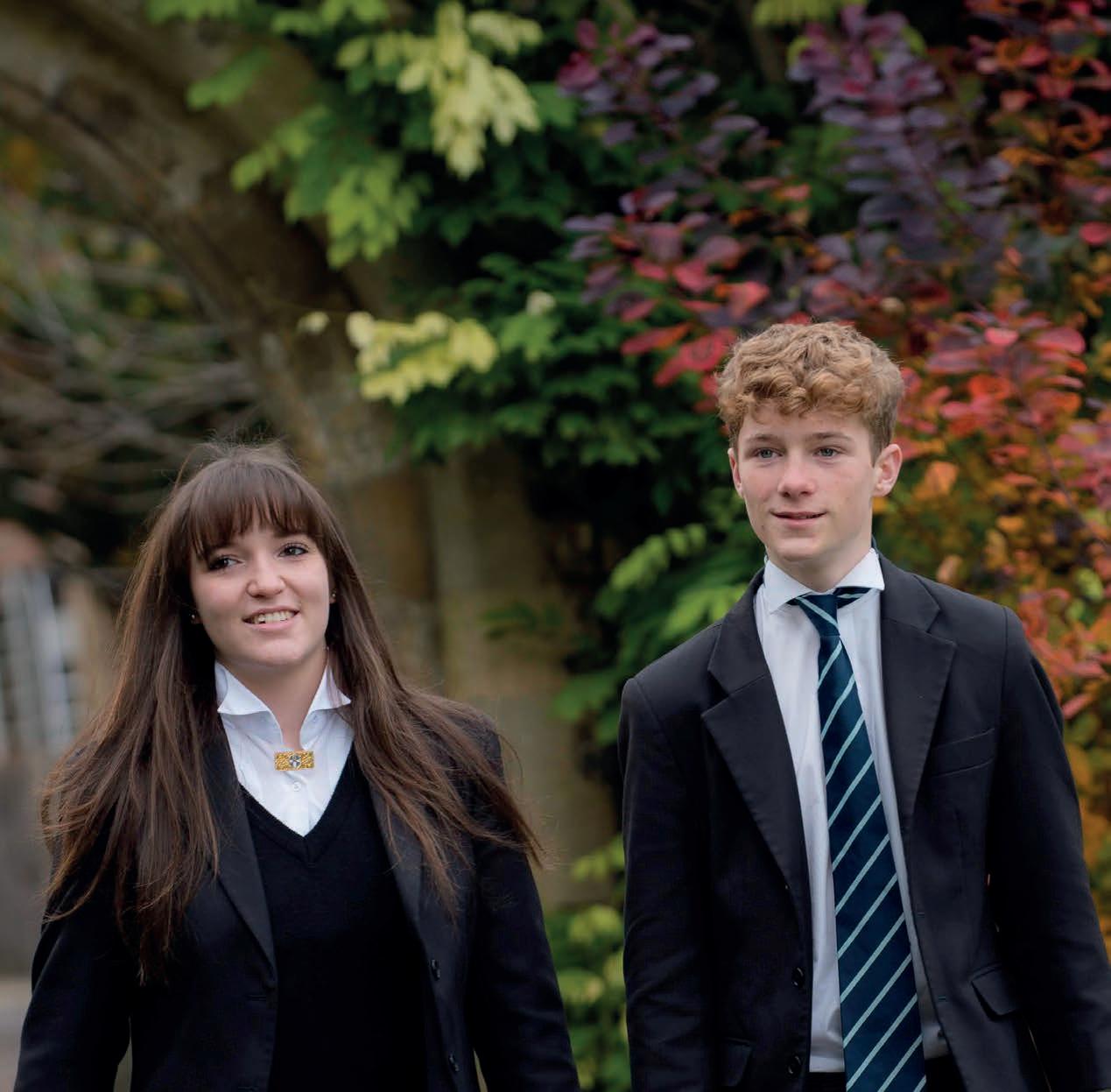
www.kings-school.co.uk A 21st century education in
a
beautiful,
historic
city.
‘
Cardi Sixth Form College in Cambridge!’
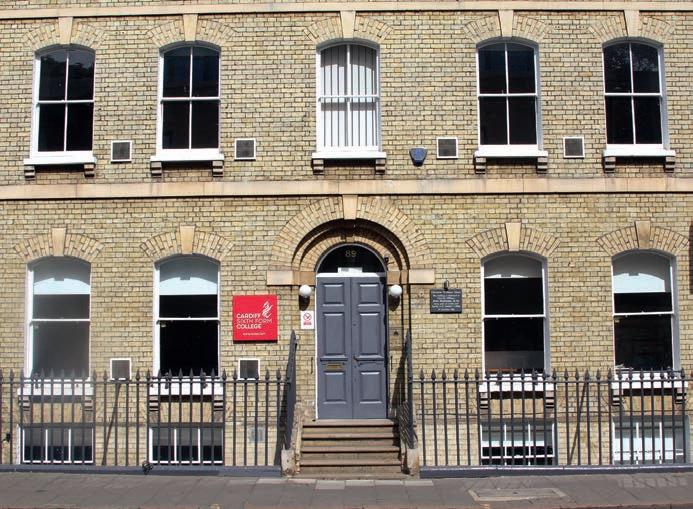
Surely a mistake? A typo? Auto correct on spellcheck? But no, it’s true. A school strongly rooted and founded in Wales, proud to carry the name of the principality’s capital city in its title has indeed opened in the east of England in the city of Cambridge. This may seem incongruous but in fact is a logical next step in the evolution of the school.
Having been the top performer in the UK academic league tables, for A levels over the past 12 years, it has demonstrated its commitment to academic excellence and to unashamedly championing depth and breadth of understanding and application of knowledge among its students.
Over this same time period, 53 Cardi Sixth Form College (CSFC) alumni have gained places at Cambridge University
and it has become one of a few ‘favoured destinations’ for ambitious, aspirational students wishing, perhaps, to follow in the footsteps of over 121 Cambridge University Associates who have gained Nobel prizes. Cambridge University, founded in 1209, is ranked as the top UK university in the QS World University rankings for 2023, so what better city for CSFC to expand into than Cambridge? While CSFC is very much ‘new kid on the block’, the ambition to demand and deliver excellence from all associated with it seems to fit well with Cambridge University.
CSFC is now ‘One College with Two Campuses’, with the Cambridge site and sta drawing from the experiences and expertise of the Cardi sta . The Cambridge campus, however, brings its own expertise to the table in several areas. For example, Computer Science, an A level gaining rapidly in popularity, is available only at the CSFC Cambridge campus. It’s an appropriate development as Cambridge is home to Europe’s largest technology cluster – the so-called ‘Silicon Fen’ . What better place for a computer science and digital technology student to get their foot in the door?
It is di cult not to be impressed and influenced by the wealth of academic history in Cambridge, with the many Cambridge colleges being home to world-class alumni covering science, technology, humanities, languages and the arts. The examples are too numerous to mention, but for CSFC Cambridge students to have the opportunity to walk in their shoes – to experience on a daily basis the academic environment that is home to so many great scientific and technological steps forward – will add
value to their super-curriculum programme that is di cult to replicate elsewhere.
Led by Dr Julian Davies, Head of CSFC Cambridge, the founding cohort of students will take A-level examinations in 2024. They will be the first graduates and, as with the first graduates of CSFC Cardi , they will hold a special place in the history of a school that, like its students, is ambitious and aspirational. Dr Davies says of the challenge of this exciting journey: “We are here, in Cambridge and the atmosphere is bristling with excitement and anticipation over what is possible for us in such an historically relevant academic city”.
GARETH COLLIER
 Principal, Cardi Sixth Form College
Principal, Cardi Sixth Form College
SENIOR / INSIDER
Gareth Collier of Cardi Sixth Form College explains why the school has opened a new campus in Cambridge
WORLD CLASS
ABOVE Cardi Sixth Form College in Cambridge
133
“The atmosphere is bristling with excitement and anticipation over what is possible for us in such an academic city”
AUTUMN 2022 | ABSOLUTELY EDUCATION |
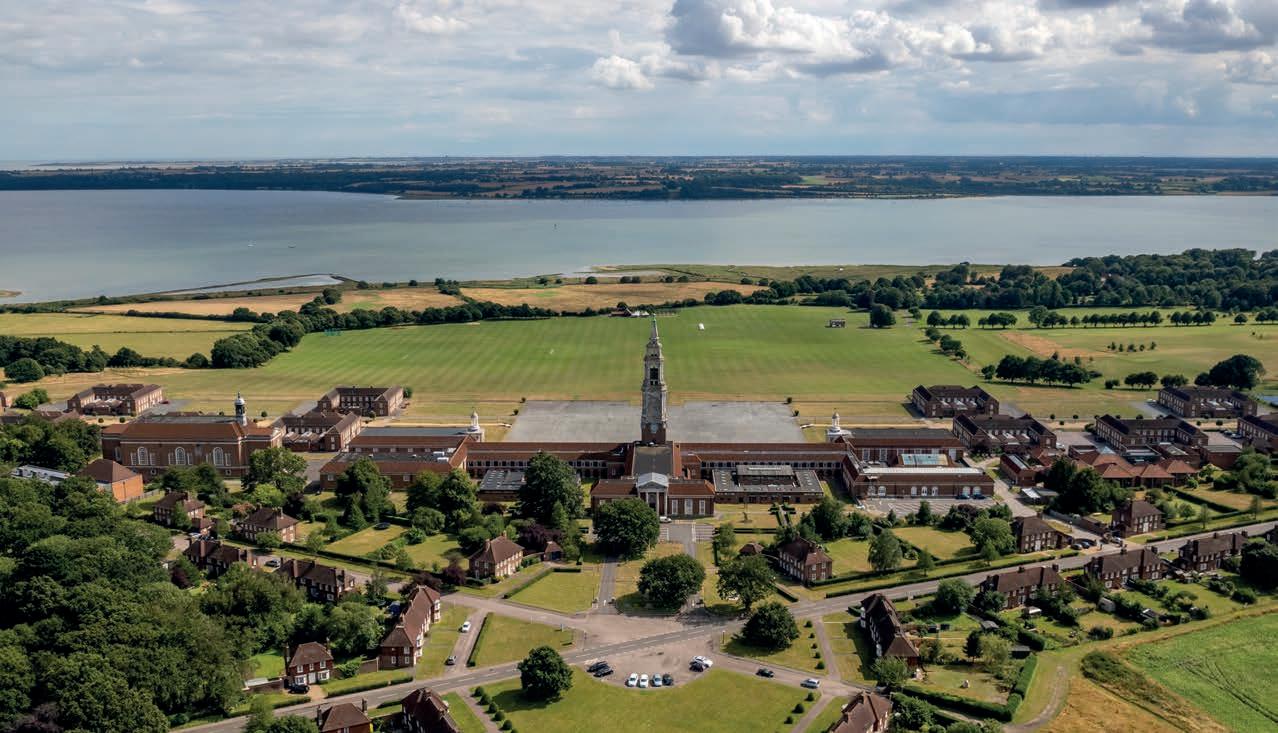
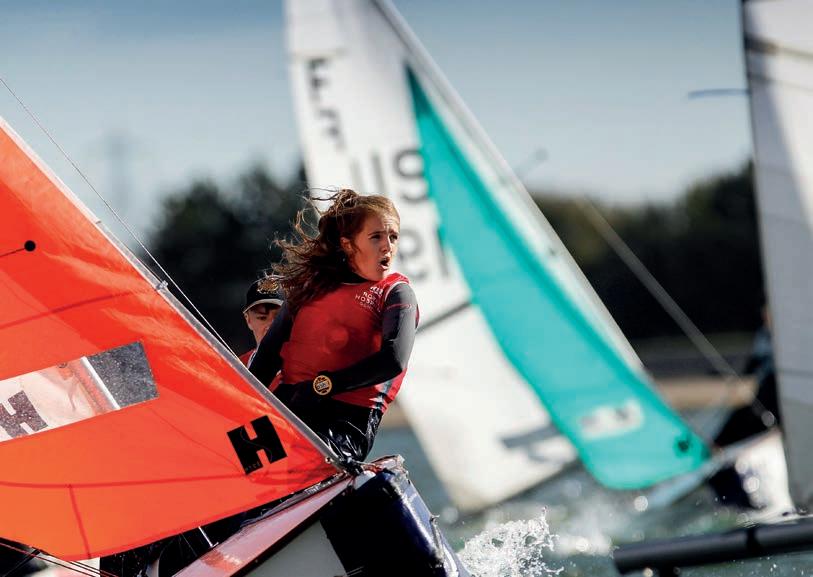


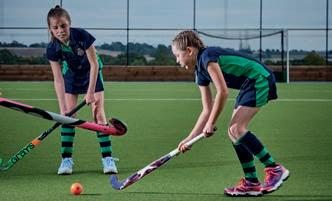













An ambitious and supportive boarding education based on the stunning Suffolk coast. Independent / Co-educational / Boarding & Day / Ages 11-18 ROYALHOSPITALSCHOOL.ORG Scholarships and Bursaries available JOIN US FOR AN OPEN MORNING OR TASTER DAY DISCOVER YOUR PATHWAY NAVIGATING SUCCESS NAVIGATING SUCCESS
TEACHING TECHNIQUE
I’m sure every teacher has at least one student who always puts their hand up in class, consistently impresses with his/her answers, demonstrates excellent subject knowledge in conversations outside of lessons, yet still secures average grades. By the same token, parents might see their child work incredibly diligently at home and wonder why they are still sitting on C grades.
One of the biggest reasons for this academic plateau is because students aren’t focusing enough attention on exam technique. The days of obtaining the best grades by regurgitating accurate knowledge are long gone. As I have told students hundreds of times, the technical demands of examination papers on students today are greater than when I was at school.

Students must first be equipped with the understanding to know exactly how to decode exam questions (the vast majority of which at GCSE and A level would ba e most adults). Once students have done that, the second task is always to be clear on exactly how to present knowledge and understanding in a way that is acceptable and credit worthy to examiners – in other words, using the right technique.
Like all challenging processes – especially ones carried out under time pressures and with genuinely life-changing consequences – a person can only excel if there is explicit and regular emphasis on these skills and if opportunities to try out these skills are seized. These things considered, here are some points for students and parents to consider in
deciding if exam technique is up to scratch. First up, are you familiar with the range of command words in exam questions? Secondly, do you also understand what you are being assessed on for each question and how marks are distributed? Thirdly, what are the best sentence starters for the di erent parts of an essay and how can you signpost to examiners that you are hitting the di erent assessment objectives? Finally, if there is a source in the exam question, what is the best way to use it in the answer?

Deep subject knowledge fused with impeccable exam technique enables students to secure the very best grades. This is why ESPD’s first YouTube tutorial focused on the best questions students can ask their teachers to unlock grades. It’s also why I always ask these questions when I interview teachers for potential roles at ESPD. In my view, if a teacher is not crystal clear on technique for GCSE and A-level success, then they are not well placed to guide students to their best exam success. If you are a parent reading this and you see
your child studying or have a conversation with them about school and their subjects, two fantastically beneficial questions to ask are: What question types do you get in this subject and how are marks awarded? Also, what is the technique for answering these questions?
If your child cannot answer, encourage them to ask their teacher in their very next lesson. This is the great litmus test to determine whether your child will simply be a student who knows a lot or a student who knows a lot and secures the kind of grades their knowledge and hard work deserve.

135 SENIOR / INSIDER
RIGHT Honing exam technique can make all the di erence to grades
Exam technique is the hidden key to securing top grades at GCSE and A level, says Director of tutoring company ESPD Jaspal Kalsey
JASPAL KALSEY Director, ESPD
AUTUMN 2022 | ABSOLUTELY EDUCATION |
“As I have told students hundreds of times, the technical demands of examination papers on students are greater than when I was at school”


137 School Leaver FOOD FOR THE FUTURE – ALUMNI ENTREPRENEURS P 138 CELEBRATE OUTCOMES P 143 LEARN ABROAD New multi-location degree options from Forward College Page 145 AUTUMN 2022 | ABSOLUTELY EDUCATION |
FUTURE
Starting a business is always a gamble, but when you're bringing new food concepts to market it takes vision to step o the 'safe' path. We catch up with two entrepreneurs who have done just that
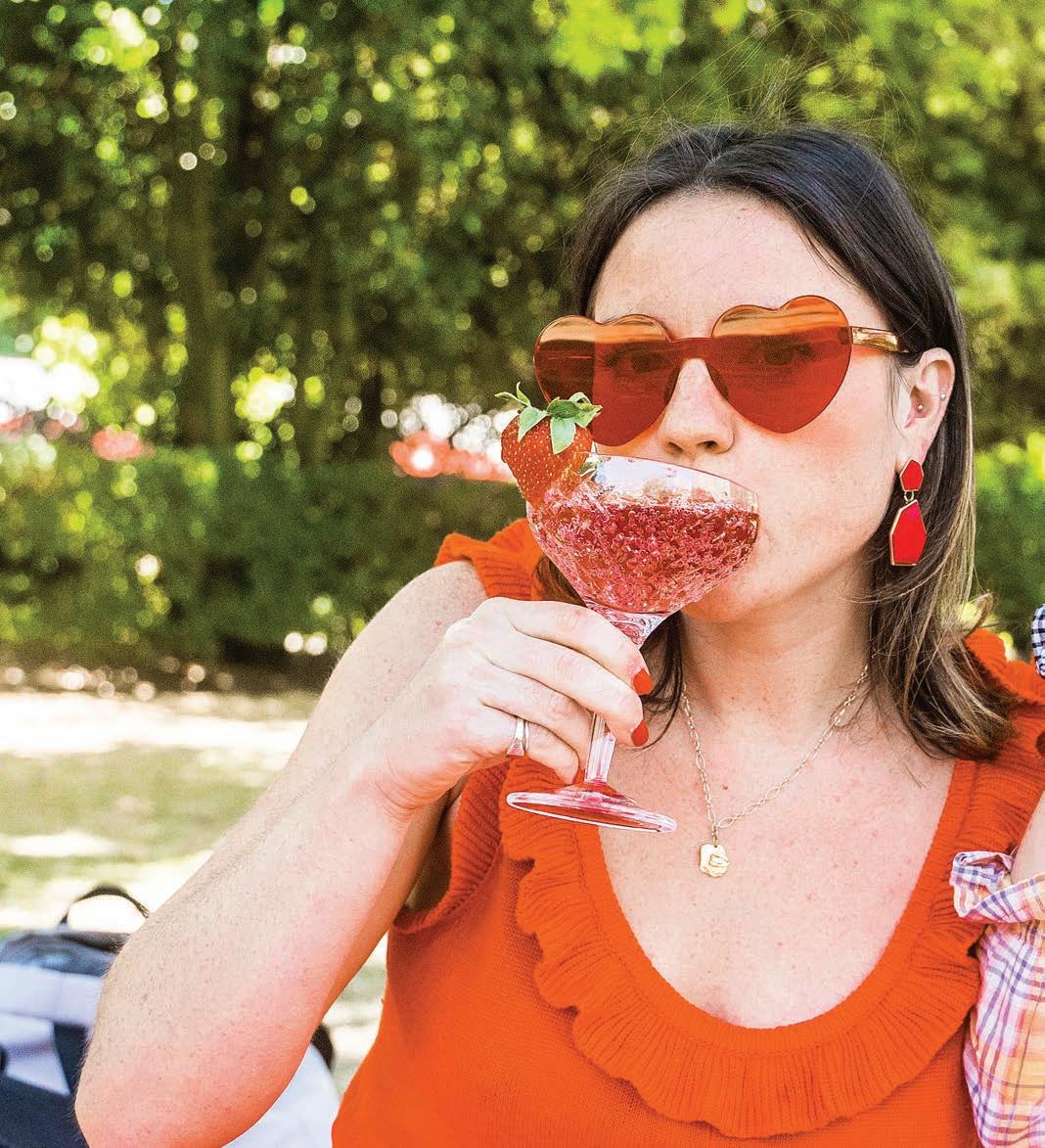
138
FOOD FOR THE
RIGHT Uppingham alumna Freya Twigden (pictured left) developed Fix8 because of her passion for kombucha
| ABSOLUTELY EDUCATION | AUTUMN 2022
The UK needs more entrepreneurs and food o ers a rich diet of possibilities. But it’s also one of the toughest markets to enter. Take the journey of Uppingham alumna Freya Twigden, creator of the kombucha drink brand Fix8. While she describes her food innovation as a “happy accident”, it took rather more than her modest description would suggest to bring it to our shelves.


Freya moved on from Uppingham to study Politics at Edinburgh and envisaged she would head down a similar professional route to her peers and siblings. With her four-year degree pathway there was
a year abroad. There was Georgetown, Washington on the menu (she describes that as dream spot for every Politics student), but she waivered when Shanghai was also o ered. Shanghai won and the Fix8 story started. “I had a lot of free time in Shanghai and became interested in Chinese medicine,” says Freya. She was introduced to a home-brewed version of kombucha – often described in the Far East as the tea of immortality – by her Chinese doctor. She quickly became hooked.
Returning to the UK, Freya couldn’t find anything approaching this drink
she so loved and began to do her own research. While her friends were watching Netflix she was reading manuals about fermentation. It became something of a joke as she always had things brewing under her desk. Indeed, it was a friend who first suggested she should really take her homebrew further. Travel followed on from university and the research continued – including an informative spell working
139 SCHOOL LEAVER / ENTREPRENEURS
“Now Fix8 is arriving in Waitrose stores, a pretty good outcome from an under-the-desk kombucha experiment”
AUTUMN 2022 | ABSOLUTELY EDUCATION |
in a pickle shop in Berkeley, California.
Freya describes the Fix8 journey as “one foot in front of the other”, and also says she had no idea at the outset of the hard work involved in getting to market. “But I was passionate about the drink and that gave me the energy to move forward.” This story has a pretty amazing outcome for, after a fair bit of pivoting on business direction (launching in the chiller cabinet in glass bottles then switching to ambient cans, for example), Fix8 began to gain traction. It has expanded from independent delis and restaurants to Whole Foods Market and Ocado. Now Fix8 is arriving in Waitrose stores – by anyone’s lights that’s a pretty good outcome from an under-the-desk brew experiment.
Freya Twigden is not resting on her laurels. She has more delicious and healthy products planned next year. Her advice to

other would-be entrepreneurs is that there is no formula for success. She does say you need to believe in your product and have a combination of: “passion and persistence”.
Thomas Constant, an alumnus of Hurst College, is another food entrepreneur to watch – although The Bug Factory products are currently for a non human food market.





His exploration of insect food sources started out as a project at Loughborough University, where he was studying Industrial Design & Technology. He was thinking about protein insecurity and wanted to work up ideas for empowering individuals to grow their own insect protein at home.
After he graduated and returned from travelling Thomas says he applied for lots and lots of jobs. By coincidence, on the very day he was o ered a great role at a

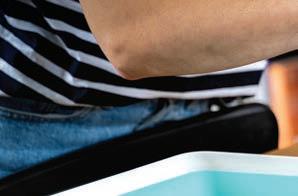

design agency in Surrey, an opportunity came up to return to Loughborough’s Business Incubator, be paid a grant and pursue his ideas. He headed to Loughborough.

Like Freya Twigden, Thomas’s concept went through di erent stages. Initially, he thought about bugs for human consumption, but soon concluded we aren’t yet ready (although mealworms are, apparently, delicious grilled or fried). He decided instead to tap into pet lovers’ quest for the very best – his bugs are fresh, nutritious, sustainable and loved by wild birds, poultry, reptiles and fish.
The prototype trays were made by him –3D printed in a small room, an exercise he describes as very hot and very hard work – and Kickstarter funding helped test them. Now he and his small team are bringing The Bug Factory products to a much bigger market. Every aspect of the products has been designed to be sustainable in a closed loop system. The mealworm growing pods are made and distributed in Britain using plastics recycled from old fridges and freezers. The mealworms grow in abundance, their frass (excrement) makes a superb plant food, and the units are small enough to stow just about anywhere and be topped up with your vegetable and fruit leftovers.



Like Freya Twigden, Thomas Constant recalls watching peers climb on a solid career ladder with a twinge or two – he says it caused a certain amount of “self-pressure”. He counts himself lucky to have had such support from those around him, including family.
He does point to one clear advantage of embarking on the bold entrepreneur’s path fresh from school and university. “There are very few other times in your life when you can take these risks.”
fix8.com and bugfactory.co.uk
“The Bug Factory taps into pet lovers’ quest for the best, with fresh and nutritious protein loved by wild birds, poultry, reptiles and fish”
ABOVE The Bug Factory began life as a university project
BELOW Hurst alumnus Thomas Constant
SCHOOL LEAVER / ENTRE PRENEURS
140 | ABSOLUTELY EDUCATION | AUTUMN 2022


Excellence, integrity and distinction since 1561 For boys 3 - 18 www.mtsn.org.uk Tel. +44 (0)1923 845514 Email. admissions@mtsn.org.uk Merchant Taylors’ School, Sandy Lodge, Northwood, Middlesex HA6 2HT Coaches: Hampstead, Highgate, St John’s Wood and Ealing Moor Park (Baker Street 35 minutes) Open Mornings in May and September Scholarships and bursaries available

























admissions@embley.org.uk INDEPENDENT DAY AND BOARDING SCHOOL FOR CHILDREN AGES 2 - 18 SENIOR SCHOOL OPEN EVENING - 10TH NOVEMBER WHOLE SCHOOL OPEN MORNING - 25TH NOVEMBER Discover #theembleyway at our Open Days! VISIT US AT EMBLEY.ORG.UK TO BOOK A VISIT +44 (0) 1794 512206
Talking HEAD
Celebrate outcomes
This summer there were families up and down the country celebrating with their children after the release of this year’s public exams results. Many schools published headlines with photos of smiling students and their ‘best ever results’ on their website and social media feeds. But what about those students who don’t get A*s?
The reality is that below the headlines of As and A*s there are hundreds, if not thousands, of students whose results are an enormous personal triumph and will be, in most cases, what they need to move on to their next stage. As school leaders, we wouldn’t want to make headlines out of personal stories of real trauma and distress; nor are the media interested in the student who has two Cs and a D with a place on a fabulous course at a great uni to
do what they really want to do for the next three or four years. For those whose results are genuinely disappointing, there is always lots of advice and support from schools to work out what their best next step will be.
At Channing we talk about ‘Girls Enjoying Success’, however they define it, and whilst we have lots of the headlines which prospective parents like to see –including great A-level and GCSE results – much more exciting is what they choose to do with these results. Often parents look at Oxbridge, medical school or veterinary school places as a shorthand for success (and yes, our students achieve places on these courses every year), but that’s not just what Channing, or life, is about. It’s about success, as each student defines it, so that they go on to do what they want to do – whether that is university, art foundation, conservatoire or gap year.

Good schools spend lots of time listening to those students who don’t shine in exams and work with them, often from as early as Year 9
or 10, to guide them to the right next step. It may be university, an apprenticeship or other training, or straight into employment – all equally valuable paths if they help the individual continue to explore who they are and what they want out of life.



When you are choosing a school, it’s easy to be wowed by the headline results and the facilities but do also take some time to find out more how the careers and higher education programmes work. How do they help students to think about their next steps? How will they support those who are not academic high-flyers but want to access the best possible university and course available to them? And what provision is in place there for those who want to take the path less travelled after school?

Our inclusive ethos means that we focus on outcomes, rather than grades. If our A-level students are smiling at the end of results day because they are set firmly on their chosen path – whatever that may be – then I think that’s job done.

143
SCHOOL LEAVER / OPINION
LINDSEY HUGHES Headmistress, Channing
The Headmistress of Channing says we should consider outcomes, not just exam grades, when we look at student success stories
“It’s about success as each student defi nes it – university, art foundation, conservatoire or gap year”
ABOVE Channing students
AUTUMN 2022 | ABSOLUTELY EDUCATION |













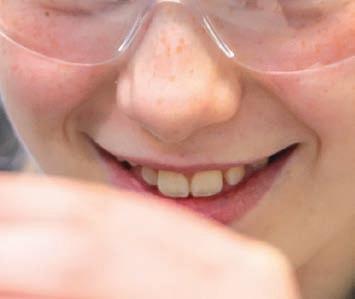



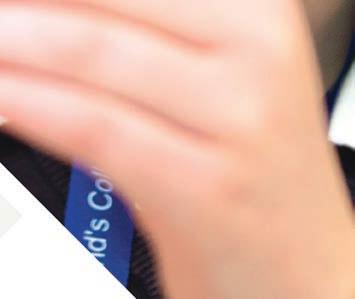




STUDY AWAY
Next stop Lisbon, Paris and Amsterdam – the President of Forward College describes its multi-location degree courses accredited by the University of London

Travel is fatal to prejudice, bigotry and narrowmindedness,” declared Mark Twain over a century ago, echoing a sentiment that had been shared by generations before him. That knowledge of di erent cultures and countries did indeed broaden the mind. Many of the world’s most successful people have spent time in cultures that are di erent from the one they grew up in.
Traditionally, a spell at an international university was the obvious place to start –either a year abroad as part of a domestic degree or, for the more adventurous, starting and finishing an undergraduate course overseas. The UK government’s withdrawal from the Erasmus exchange programme has curtailed young people’s access to the former, while departure from the EU has increased the costs of doing the latter in Europe. North America is also an option, but tuition is expensive, degrees take a minimum of four years, and it is a long way from home.
Forward College opened its doors to British students from this September and promises a 21st-century version of ‘the Grand Tour’. The first year is spent in Lisbon, the second in Paris and the third in Amsterdam. Students from Germany, France, Holland, Italy and Spain are already studying with us. The joint honours programmes – in economics, politics, international relations, data science and psychology – are accredited by the University of London, taught in English and delivered under the direction of academics from the London School of Economics and King’s College London.
While the College aims to open campuses in Berlin, Barcelona, and Milan in the near future, the approach here isn’t just innovative because of locations o ered, but also because it aims to instil the skills, values and perspectives demanded by employers in an increasingly interconnected world. There is emphasis on leadership, management and practical teamworking. We do this by immersing our students in a ‘personal development curriculum’ alongside the academic one. From day one, students are encouraged to honestly assess their strengths and weaknesses, to set out their life goals and consider how they align with their values.
We also give students the opportunity to learn in real-life situations. For instance, current students are learning about project management and teamwork by working with local social impact projects in Lisbon. We teach them time and stress management skills, how to hold di cult conversations, manage their emotions and recognise unconscious bias. These elements are taught by experts from a wide variety of fields, including former firefighters, UN mediators and HR specialists.
Our degrees are challenging – students are expected to be academically able and emotionally mature – but the rewards can be immense. “In addition to my class and project work, I’ve also learnt about the idiosyncrasies of my fellow Europeans,” says Yohana Fontenla, a Forward College student from Spain. “I now know that it’s considered bad form to email a French classmate after eight in the evening and to not bat an eyelid when Germans pour yoghurt all over their pasta.”
BORIS WALBAUM
and President, Forward College
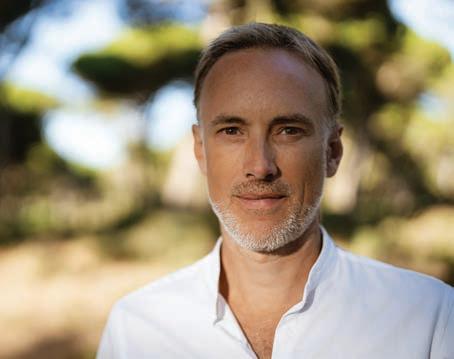
145 SCHOOL LEAVER / INSIDER
“Current students are learning about project management by working with local social impact projects in Lisbon”
Founder
ABOVE Forward College students and (below left) Boris Walbaum
“
AUTUMN 2022 | ABSOLUTELY EDUCATION |

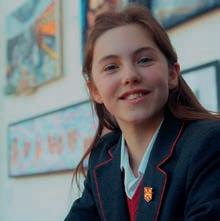


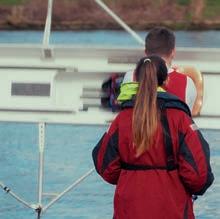




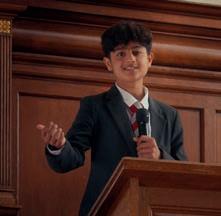






Autumn Books

















147
GREAT AUTUMN READS P 152 ELIZABETH LAIRD'S SCHOOLDAYS P 158 CRESSIDA COWELL'S NEW ADVENTURE P 164 WORDS THAT COUNT The poetic voice of Nikita Gill Page 148 ILLUSTRATION: NIKITA GILL AUTUMN 2022 | ABSOLUTELY EDUCATION |
POET for our TIMES
Nikita Gill is a poet for our times. With the launch of a new collection for young adults, Absolutely Education finds out more about her work
LIBBY NORMAN


148 | ABSOLUTELY EDUCATION | AUTUMN 2022
Nikita Gill says on her Instagram page: 'I make things'. It's a nailing of colours to the mast and it's true, for her words and artworks have resonated with an enormous following – over 654,000 on Instagram alone. Many readers who found her first via Tumblr, Instagram or other platforms she's inhabited over many years are now able to read her in print. These Are the Words: Fearless verse to find your voice, her latest collection of illustrated poems, was published by Macmillan in August.
Gill was born in Belfast to Kashmiri parents. Her father, who was in the merchant navy, was taking his naval captain exams at the University of Ulster. During that time her mother worked at youth clubs in what was then a very troubled city – Gill has been told many stories about the atmosphere of fear that prevailed. "That's where I come from, that's part of my roots. And then, of course, I'm
Kashmiri as well," she says. "My family in India comes from partition. All of my grandparents were deeply, deeply a ected by it. Being Kashmiri, being Punjabi and being Sikh – even before I was born being Kashmiri was a very political thing to be. We don't choose to be born in the identities that we're born in, right?"
It's certainly not lost on Gill that creativity is often strongest in places of conflict. "There is no catharsis in areas of war – the only way that we can express our pain in those kinds of areas is to create or to write. Even if that thing is destroyed through the language of war, at least it existed for a time and it was beautiful. That's the way my grandmother put it to me – it really stayed with me, that. We don't create art always for it to be immortal, sometimes we create art just because it can exist at that moment in time and we can remind ourselves there is beauty here."
The family returned to New Delhi after her father's course and that's where Gill spent the rest of her childhood. The writing – and the art – were bubbling up from her early years and she was also deeply
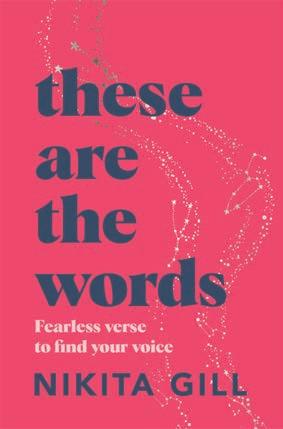

BOOKS / PROFILE
“Sometimes we create art just because it can exist at that moment in time – there is beauty here”
ABOVE Nikita Gill. Portrait: Peace Ofure
AUTUMN 2022 | ABSOLUTELY EDUCATION | 149 ILLUSTRATION: NIKITA
GILL
influenced by her family history. The first story she had published, at age 12, was a retelling of an old story handed down about her teenage grandfather's bravery in Kashmir during the chaos and trauma of partition. Two newspapers picked it up – Mid-Day and Hindustan Times – a big moment for the young Nikita Gill.
Her grandfather was incredibly touched, and she had the pride of being a published author. Gill says this helped her stay the course of many rejections over the years, but it meant something more. There was a realisation that words we make in poems and stories have a life of their own. "I was able to take a story that would have been forgotten through the strands of time in our family, and I was able to put it in a newspaper and more people read it and more people now remember it," she says. "That struck me as a really important thing as a child."
Gill describes her youth in New Delhi as one of restrictions – her parents were worried for her safety on the streets and demanded a "monstrous amount of detail" before she went out. She says it became easier to stay in. "Which is why Emily Dickinson was my favourite poet then. So many of her poems are about sitting in a room but looking outside – it was very much my childhood and teenage years!"
She was always very involved in the Arts – visual, drama, writing – also an online world of creativity that was then sharing and supportive. "You would share art and other people would also share art and we'd start to have this sense of community," says Gill. "Social media gave me a community, which I didn't really have, so I had a lot of love for it then." She also loved the art room and the library – these spaces were her refuge. She still has an enormous warmth for librarians and teachers because often they were her protectors. "The problem with being a kid who prefers books to anyone else's company is you're also a target. You're constantly picked on because you're always alone."
Gill studied Design at university in New Delhi, then an MA at University for the Creative Arts in Hampshire. And she stayed on in the UK, living and working as a cleaner and a carer for a number of years while continuing to write. These Are the Words is her eighth volume of poetry. Her creative focus remains the young adult market. "All of my work, I feel, has always been for young people – especially young people who feel powerless in the world."
The themes of These Are the Words are big ones, things young people feel to their core – love, loss, family, conformity and fitting in, fear and anger. Some are undoubtedly dark, but there is light along with shade. "It's really important for me to go: 'yes, there's a lot of grief here, yes,


“I was able to take a story that would have been forgotten and more people now remember it – that struck me as a really important thing as a child”
150
ABOVE Nikita Gill has found an enormous audience for her work. Photo: Guy Bell/ CARE 2020
| ABSOLUTELY EDUCATION | AUTUMN 2022
there's tragedy, but there's also a lot of joy – we just to have to find that'," she says. Getting that balance right with a YA audience is important, something Nikita Gill remains painfully attuned to. "There's a fine balance between being toxically positive and toxically negative!"
























She puts a lot of the credit for the book's final more hopeful shape down to an excellent editor. Gill had lost a lot of people in the wake of the pandemic and says the first draft reflected that. "What she basically did was remove three-quarters of the poems I submitted and then I brought in that lightness and positivity. Every last poem of every section is a really hopeful poem," she says. Poems such as 'The Wish' (about a father's hopes for his daughter's future) are joyful, but the book also expresses anger ('On Seeing the Wolf Again') and the wistful ache of unrequited love ('To the Girl At the Bus Stop').
Nikita Gill can be searing on love and loss – to adult readers too – because she has a long memory for what that feels like when you're young. "Your first heartbreak, the first time that you face that wound and it's so intense, you never forget it."She also remains painfully aware of the journey girls especially have in a world that still casually belittles and marginalises. "Misogyny is so insidious that you're brought up with it – you don't even see there's anything wrong with it," she says. "We've spent so much time pretending that teenage girls for generations haven't driven culture.





Teenage girls drive culture. How many bands that exist today owe their entire legacy to teenage girls? I think Harry Styles is one of the few people who actually talks about it, which is why he's so popular."

That 'Instapoet' label is catchy but doesn't do justice to the scope or seriousness of Gill's work. But then again, it was social media that helped her to find her audience and that is important. "Art is for the people – I think art and poetry belong to everyone. That's precisely why I thought social media was so important because it cut out that middleman and let people decide whether they liked it or not."
Nikita Gill is a voice young people – girls especially – listen to, and with good reason. She is there for them and with them, writing with a directness and understanding that cuts through. "There are all these painful things that are happening, all these things that you are going through. There should be someone there to guide you through without saying, 'oh you're young, you'll get over it'," she says. "We need to put more into our young people, and that is what this book is about."
These Are the Words, by Nikita Gill is published by Macmillan Children's Books, £7.99

BOOKS / PROFILE
“We've spent so much time pretending that teenage girls for generations haven't driven culture. Teenage girls drive culture”
ILLUSTRATIONS: NIKITA GILL
Medicine
by Briony Hudson illustratedby Nick Taylor BIG PICTURE PRESS, £16.99
Historians and budding medics alike will be fascinated, intrigued and sometimes horrified by this illustrated history of modern-day medicine. With potions, quackery, medical scandals and triumphs in the mix, it covers more than just the science. For instance, the sections on wartime medicine, the fight for equality in medical training, malaria treatments through time and administering medicine in space provide valuable insights into societal and technological shi s. Lively text and great illustrations by Nick Taylor make this a useful reference and a gripping read.

TOP AUTUMN
From marvellous minibeasts
fascinating
minted October witch
trees,
the dark nights
pick of
THE WHALE WATCHERS
 by Dougie Poynter
illustrated by Amberin Huq OWLET PRESS, £6.99
by Dougie Poynter
illustrated by Amberin Huq OWLET PRESS, £6.99
Commissioned by BRITA, and supporting Whale and Dolphin Conservation, this adventure is written by Dougie Poynter (McFly bassist and keen conservationist). It centres on Finn, who is accompanying his mother and brother Jesse on what he believes is going to be the worst holiday ever. But then the boys meet Skye, and she knows all the best secret lookouts for whales and dolphins. The book has easy-read typography younger readers will appreciate. They will also warm to the engaging central characters and life-a rming messages about what we can all do to save ocean life.
and
facts about hair to a newly
and the secret life of
here's our
illuminating reads for
ahead
MUST READ
7+ 9+
152 | ABSOLUTELY EDUCATION | AUTUMN 2022
by Jennifer Claessen UCLAN PUBLISHING, £7.99
The debut novel by teacher and theatremaker Jennifer Claessen is just in time for the spookiest nights of the year. Young witch Clemmie is about to turn 12, and that's when (if her Aunt Clemmie's prediction is correct) stars will descend, bringing her one whole month of chaotic and exhilarating magical powers. While her female family live for October and their witches' powers, there are some who want the magic to last all year long. Clemmie and her coven are placed in mortal danger and a spine-tingling adventure ensues for the sisterhood.

EARTH CLOCK
by Tom Jackson illustrated by Nic Jones WELBECK CHILDREN'S BOOKS, £16.99
Complex science is made accessible in this story of the history of our planet, told through the frame of a 24-hour clock. The clock starts with the formation of earth and whizzes through meteor bombardment (03:23), the Cambrian explosion (21:12), mass extinction (23:39) and the late arrival of early humans at 23:59:21 – that's 11 million years ago. This long perspective in a single day is supported by informative text and pictures and engaging bitesize facts. A useful geological time scale is at the back of the book.

pick
by Katja Spitzer PRESTEL, £10.99
Subtitled 'From Moptops to Mohicans, Afros to Cornrows', this book traces the history and high points of our obsession with adorning, dressing and showing o our hair. It covers everything from the hair sacrifices made by Hindus and the punks' adoption of Native American Mohican hairstyles to towering Rococo styles and the many di erent varieties of braids. Katja Spitzer's bold illustrations are combined with easy-read text describing the cultural significance of styles – and even hair colour – down the ages. We also love the inclusion of beard and dog fashion trends.

What Do You See When You Look at a Tree?
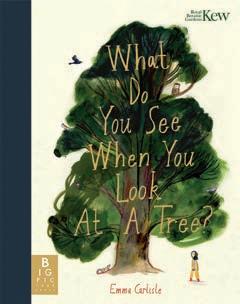 by Emma Carlisle BIG PICTURE PRESS, £12.99
by Emma Carlisle BIG PICTURE PRESS, £12.99
Published in association with the Royal Botanic Gardens, Kew, Emma Carlisle's painterly drawings set the scene for a gentle reflection on the power of nature and the unique characteristics and sense of place created by the trees that inhabit our landscape. Home for birds and squirrels, places to climb and find shade, trees are also used for everything from violins to the books we read by the fire. The book explores themes of growth, mindfulness and connection with past and future, inspiring children to think about their connection to the natural world.
THE OCTOBER WITCHES 8+ 9+
4+ Editor's
5+ HAIR 153AUTUMN 2022 | ABSOLUTELY EDUCATION | BOOKS / REVIEWS
The SENSE of BALANCE






perfectly balanced

















in the heart
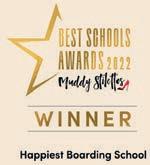
Co-educational | 3 - 18 | Boarding and Day repton.org.uk Arrange a personal tour by calling 01283 559200 or email admissions@repton.org.uk A
education
of England
Everything you Know About Minibeasts is Wrong!
 by Dr Nick Crumpton illustrated by Gavin Scott NOSY CROW, £12.99
by Dr Nick Crumpton illustrated by Gavin Scott NOSY CROW, £12.99
Bees die when they sting, centipedes have 100 legs and cockroaches are indestructible. These and other myths are exploded in this book. It's packed with facts about insects – which account for two-thirds of our animal kingdom, as far as we know – along with other arthropods (classifications are also explained). Vivid illustrations by Gavin Scott set the scene and the pacy text packs in information in a fun way. It's a brilliant reference for young explorers and includes a handy guide to the kit and techniques needed for your own minibeast investigations.
Editor's pick
by Caryl Lewis illustrated by George Ermos MACMILLAN CHILDREN'S BOOKS, £7.99
This is Caryl Lewis' first children's story in English but Martha, Jac a Sianco (2004) is on the Welsh curriculum – so an author with form. Marty lives with a mum who hoards literally everything. He worries about her and wonders if things will ever change. Then his Grandad gives him a special seed. This grows bigger and bigger until it takes him, his friend Gracie, plus Grandad, on a wondrous adventure. With a great central character and lyrical prose, Seed also has a satisfyingly happy ending.

9+
CRESS WATERCRESS
by Gregory Maguire illustrated by David Litchfield WALKER BOOKS, £10.99
Written by the author of the novel Wicked, this book is likely to appear under many trees this Christmas. When their father doesn't come home from a nocturnal foodgathering expedition, Cress and the rest of the Watercress family are forced to move from their cosy warren to more perilous digs at the Broken Arms, in the base of an old oak tree. The story covers themes of family, loss and what home means. David Litchfield's delightful and richly coloured illustrations spring o the page to bring this loveable woodland community to life.

2+
KITSY BITSY'S NOISY NEIGHBOURS
by Polly Faber illustrated by Melissa Crowton NOSY CROW, £7.99
This engaging picture book also comes with a free smartphone audio book – great news for parents as this funny and noise-filled story is bound to need repeating. Told in rhyme, it centres on Park View Rise and its astonishingly cacophonous animal residents. When neighbours fall out and a fight ensues it's Kitsy Bitsy, the calm and organised cat on the ground floor, who saves the day. Vividly drawn by Melissa Crowton, the book includes wonderfully detailed drawings showing the whole high-rise community at noisy work and even noisier play.

SEED
7+
8+
155AUTUMN 2022 | ABSOLUTELY EDUCATION | BOOKS / REVIEWS









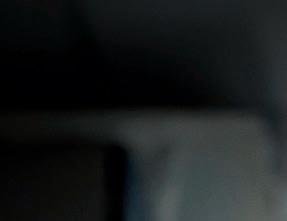




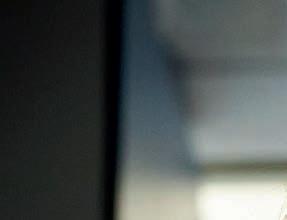









Join us to explore the opportunities on offer at our next open event A leading independent day school for girls and boys aged 3 - 18 2022 A Level Results A* - A 71.8% A* - B 92.0% 2022 GCSE Results 9 – 7 73.3% 9 – 5 97.4%
Editor's pick
Our Time on Earth
by Lily Murray Illustrated by Jesse Hodgson BIG PICTURE PRESS, £15.99
From the mayfly to the immortal jellyfish, Lily Murray's Our Time on Earth explores
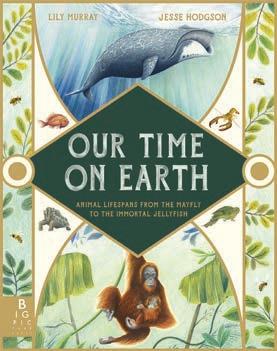
the varied lifespans of the animal kingdom, and with facts to set young naturalists thinking. For instance, the female trapdoor spider can live to 43, but males live only five to seven years. Saltwater crocodiles typically live to 70, whereas the hardworking honeybee will have around seven weeks on this earth. It's beautifully illustrated by Jesse Hodgson, and engaging narratives about each creature leave you feeling awed at the complex and important lives of the creatures we share a planet with.
BODIES, BRAINS & BOGIES
 by Paul Ian Cross illustrated by Steve Brown WELBECK CHILDREN'S BOOKS, £5.99
by Paul Ian Cross illustrated by Steve Brown WELBECK CHILDREN'S BOOKS, £5.99
You make seven litres of mucus a week, have mites living on your eyelashes and filter enough blood through your kidneys each day to fill a fish tank. These and other gross facts are just the start. Paul Ian Cross goes for it on how we create poo, why scabs are formed and what bile is all about. Brilliantly readable, this book also explains everything from how the heart and lungs work to brain anatomy. There are fun quizzes, plus fascinating bodily facts guaranteed to disgust and amaze friends and family.
THE FOX'S TOWER
by Sam Thompson illustrated by Anna Tromop
LITTLE ISLAND, £9.99
The author of Wolfstongue has created a magical successor. Willow sees her father Silas kidnapped by foxes and a huge and terrifying creature. She goes into the Forest after him and meets wolves who know where her father has been taken – the Tower. This city built by wily chief fox Reynard is kept running by life forms created with a Magical Clay that is running out. Silas won't help, so Willow must decide if she will save the Tower – to do so means venturing into the Deep Forest guarded by wolves.

I WANT THE MOON
3+ by Frann Preston-Gannon
TEMPLAR BOOKS, £7.99
As the first recipient of the Sendak Fellowship, Frann Preston-Gannon learned from a master Maurice Sendak. This is her third picture book, following on from the acclaimed I am the Seed That Grew the Tree. In this charming tale, told in rhyme, a spoilt rich child grows up having everything he could ever want except the moon.
His plans are drawn up and giant towers built, but someone else wants it too. When the ensuing tug-of-war ends in disaster, only the children can put the fallen moon back in the sky.
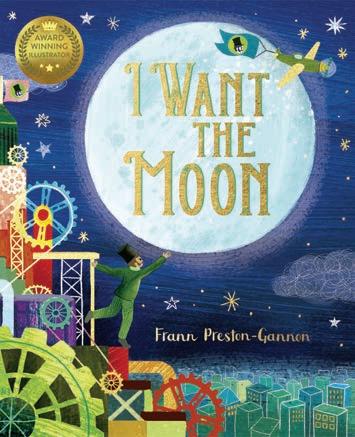
9+
8+ 9+
157AUTUMN 2022 | ABSOLUTELY EDUCATION | BOOKS / REVIEWS
The M AKING of Me
Elizabeth Laird
The award-winning author talks about her school days at Croydon High, her passion for teaching and the VSO work that first inspired her love of travel
Where did you go to school and when?
I went to Croydon High School for Girls – way back in the 1950s!
What was your school like?
Croydon High was (is) an academically ambitious school for girls, with clear rules and aims. But it’s hard to exaggerate how di erent life was in the 1950s. I would say that we had far fewer distractions and were less stressed than modern children. I think we were rather earnest about our work and the world in general.
Did you love your time at school or hate it?
Bit of both, really. I was often o sick with various problems. I still have the diary I wrote. It’s full of anxieties over friendships and excitement over special school events.
What were your favourite subjects there?
I really liked Science, but that might seem a bit obvious. Maybe less obviously, I loved English (and especially creative writing), History and Geography – they all focus on the stories we can tell.
Where were your favourite places at school and what did you do there?
When I became a prefect, I could use the prefect’s common room. This felt terrifically grand, though in retrospect I don’t think it was healthy to create such an elite among the girls.
Who were your favourite or most memorable teachers and how did they influence you?
Oh, Miss Duncan! Miss Duncan... She once caught me reading Beau Geste under my desk during an English lesson. She just winked at me and told me to carry on reading. She taught me that reading was the best thing you could do and introduced me to a wide diet of literature.
What beliefs do you think your time at school taught you?
There was a strong emphasis on service to the community, leadership and taking responsibility. We were encouraged to think beyond ourselves.
What was your proudest school moment?
Acting in Richard 11. Every year the school performed an entire
Shakespeare play. I only had a small part, but boy, did I love it! I can still quote reams from the play.
What was the most trouble you got into at school?
I’m afraid I was a goody-goody swot. I don’t remember any more than a mild ticking o .
Were you ever 'too cool for school'?
Was anyone cool in the 1950s? It didn’t seem so then. But I passed my driving test when I was 17, and my mother let me drive the family car to school on my birthday. I parked ostentatiously outside the main door.
What is your most vivid school memory, looking back now?
Was it the time when my knicker elastic broke during gym, and my bloomers fell down? Or perhaps it was when Jacqueline du Pré, an old girl of the school, came back to play her cello for us.
When and how did your interest in writing and travel begin?
When I left school, my father urged me to apply to VSO to spend a year teaching
158 | ABSOLUTELY EDUCATION | AUTUMN 2022
“WAS ANYONE COOL? IT DIDN’T SEEM SO THEN. BUT MY MOTHER LET ME DRIVE THE FAMILY CAR TO SCHOOL ON MY BIRTHDAY”
abroad before I went to university. I was posted to Malaysia and it was a lifechanging year for me. I nearly died of a snake bite, went trekking in the jungle, and found that I loved teaching. And I wrote long letters home to my family, trying to distil my new experiences into words. I think it was way back then that I became fascinated in the lives and peoples of countries far from my own. Perhaps that year laid the groundwork for The Garbage King, set in Ethiopia, Kiss the Dust, set in Iraqi Kurdistan, and Welcome to Nowhere, the story of a Syrian refugee boy.
What other key influences / passions shaped you when you were growing up?
My family belonged to the Brethren, a strict and close-knit Protestant sect. We learned long passages from the old King James Bible, which left my mind

furnished with a lasting store of wonderful words and poetry. As I grew up, my outlook slowly broadened into an open, liberal view of religion and the world, but I never had to make a break with my close and loving family. It’s the beginning of that process that’s the subject of my new novel, The Misunderstandings of Charity Brown.
What projects are coming next?
I’ve got no idea, and that’s the joy of being a writer. I’m still in the after-glow of having finished The Misunderstandings of Charity Brown, but any day now an idea for a great new project will, I’m sure, just burst into my head.

How would you sum up your school days in three words or phrases?
Hard work, friendship and the opening of my mind.
159AUTUMN 2022 | ABSOLUTELY EDUCATION |
The Misunderstandings of Charity Brown is published by Macmillan, £12.99. elizabethlaird.co.uk
Elizabeth Laird
BOOKS / PROFILE

Great READERS
R
eading for pleasure is a habit that starts o in the home, and there is endless evidence that learning to do so early in life is central to a child’s development and future success. Indeed, a 2012 report by the Department for Education showed that reading has more of an impact on education outcomes than socio-economic status. Of course, the benefits of reading extend well beyond the classroom – it is an important way for children to learn to understand the
world, exercise their creativity and develop vital emotional and interpersonal skills.
Unfortunately, there are still plenty of barriers preventing children in low-income families from being able to develop as readers, barriers exacerbated further by the pandemic and current economic situation. Research by the National Literacy Trust shows a concerning trend towards a decrease in book ownership, with one in five children in England not owning a single book. This means that initiatives that widen access to books have become more important than ever.
One such initiative is Doorstep Library, a community-focused charity that o ers a home-based service to families in
some of the most disadvantaged areas of London. What first started over a decade ago with a single project involving a small team of volunteers in one borough has now expanded to 20 projects across five – Camden, Hammersmith & Fulham, Ealing, Westminster and Lambeth. As of 2022, Doorstep Library is reading regularly to 500 children from 250 families, and it has ambitious plans to expand its work still further.
Some of these families discover the service through door-to-door campaigns and others are directed via referrals from schools or through word-of-mouth recommendations. Doorstep Library has a team of 130 reading volunteers,

161
A grassroots London charity, Doorstep Library is helping young people to discover the wonderful world of books and reading for pleasure
BOOKS / FEATURE
ABOVE
The
charity works to foster a love of reading in children
RACHEL HOGG
AUTUMN 2022 | ABSOLUTELY EDUCATION |
and they are trained to read alongside children aged 0-11. This service used to be exclusively face-to-face, however, Doorstep Library launched ‘Online Reading Corner’ successfully during the pandemic and has continued to o er online reading visits ever since. The programme takes a highly personalised approach and aims to have families visited by the same volunteer each week. Many of the volunteers have been reading with the same family for years, with some having helped multiple siblings to enjoy reading for pleasure.
Each week during term time, one of the volunteers will arrive armed with a stack of books, all of which have been personally selected to not only reflect the age range and
ability of the child but (arguably more importantly) their personal interests and passions. Volunteers find that selecting books based on what the child is naturally interested in has a hugely positive impact on how engaged and enthusiastic they are about the process of reading – and continuing their reading journey. Most children Doorstep Library works with begin choosing these books for themselves as they become more confident readers, or they may get hooked on a particularly gripping series. Volunteer and child will read these books together for around 20-30 minutes and volunteers also leave behind a selection of books for the children to read on their own or with their parents.
By modelling a positive side-by-side shared reading experience, the charity aims to create a connection with reading that continues beyond the volunteer sessions.


The overarching goal of Doorstep Library has always been to impact the entire family’s relationship with reading and make it a bonding experience for parents and children. This approach works, with the large majority of parents involved reporting that they look forward to joining in with the weekly sessions.
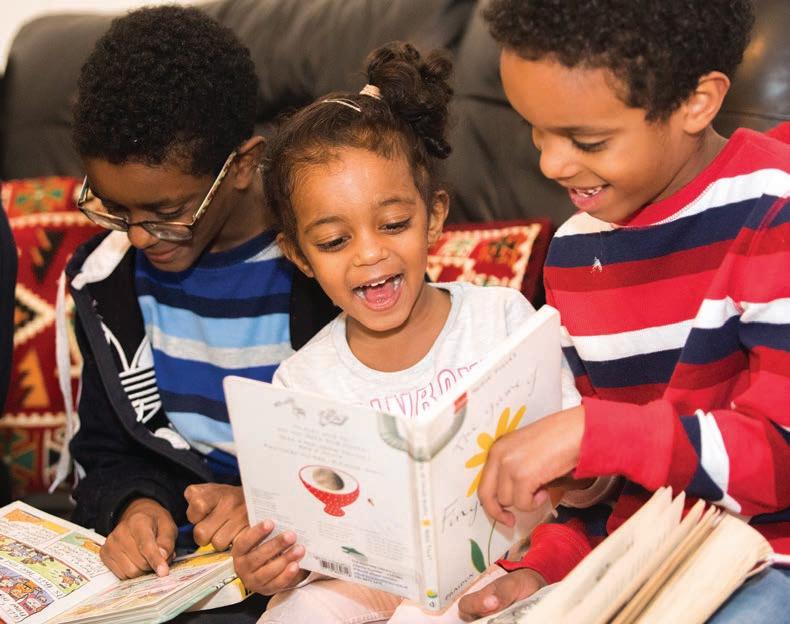
Volunteers also frequently observe an increase in parents continuing to read with their children between sessions, and families also say they subsequently
enjoy reading together.
For families involved, one unique thing about the Doorstep Library project is that it doesn't involve any assessments or tests. The aim of the reading sessions led by volunteers isn’t necessarily to build any particular skills – it is purely focused on reading for pleasure. That is not to say that the children’s reading abilities don’t improve, and volunteers and parents alike report a significant improvement in the children’s vocabulary, their focus and concentration, their reading level and – most importantly of all – their interest in books.
Currently, Doorstep Library also lends young readers more than 20,000 books a year – helping them to find the books and stories they love and, hopefully, setting them on course for a lifetime of reading regularly and enjoying all that this can bring. Considering what we know about the positive impact that reading for pleasure has on children's futures, the work of Doorstep Library seems more important than ever right now.
For more about the work of Doorstep Library, visit doorsteplibrary.org.uk.
RIGHT A volunteer will arrive on the family’s doorstep each week during term time
BOOKS / FEATURE
“Many of the volunteers have been reading with the same family for years, with some having helped multiple siblings”
LEFT Volunteers model a positive shared reading experience

Magic
REVEALED
Which Way to Anywhere, the new book from acclaimed author and illustrator Cressida Cowell, has had a long incubation

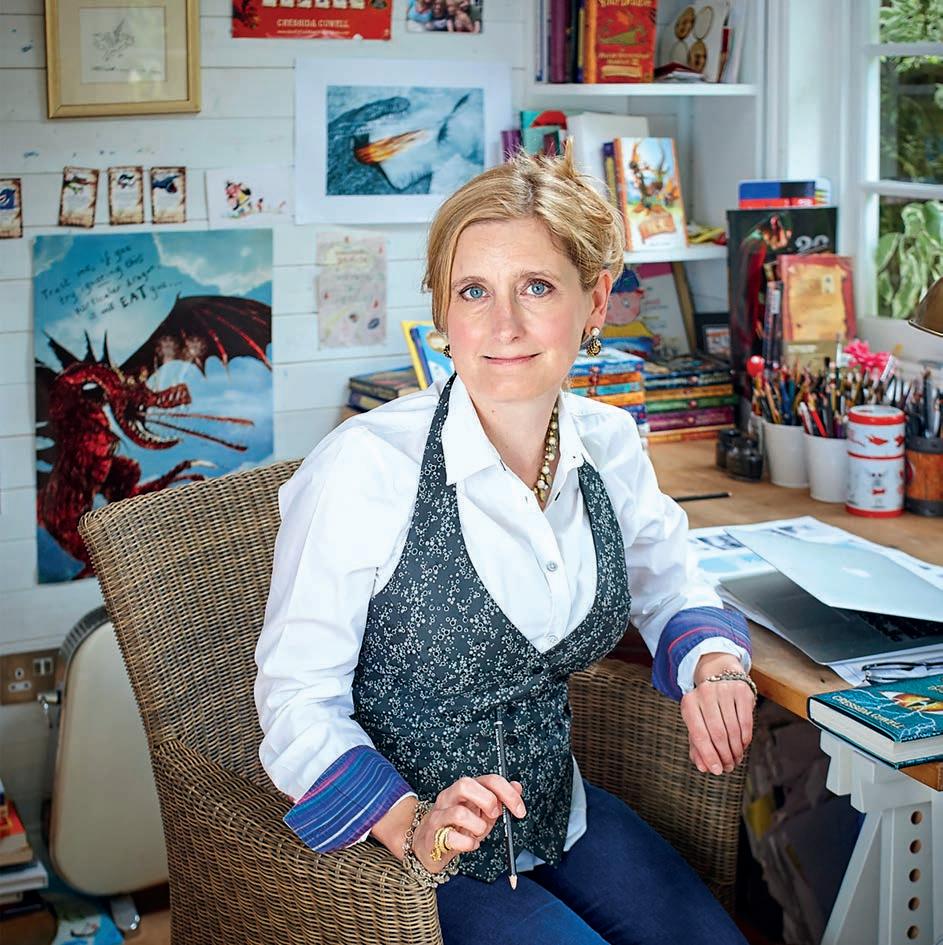
| ABSOLUTELY EDUCATION | AUTUMN 2022164
RACHEL HOGG
ABOVE Cressida Cowell
The latest out-of-thisworld adventure by the bestselling author and former Waterstones
Children’s Laureate Cressida Cowell is bound to be big news. After all, Cowell has sold over 11 million books worldwide and is known to her readers for the magical characters and settings of How to Train Your Dragon and Wizards of Once. Of course, the former went on to become a billion-dollar blockbuster film and television franchise, introducing Cowell’s characters to millions more fans around the world.
Which Way to Anywhere has been described by the author herself as her most ambitious work yet, and it’s richly detailed thanks to her delightful hand-drawn illustrations – an element her readers know well. While the book is hot o the presses, she wrote the first lines long before she became famous as an author. As she puts it: “I’m a big believer that stories have a life of their own”.
Cowell says she originally had the idea for Which Way to Anywhere when she was pregnant with her first child, but it just needed time to develop. This turned into 25 years. Originally titled ‘The Alternative Atlas’, the manuscript lay gathering dust in her shed. But then everything changed. She says: “I started writing this story when my beloved hero of a father had recently died, and we all entered a pandemic. We were suddenly in our little family unit, facing something larger than all of us”. Cowell describes how the story found its shape and “came to life flying towards me on a sort of rescue mission”.

The themes are perennial, but with extra piquancy because of this context. “It felt like the right time to be writing a book about some children searching for their lost father and the entire family trying to rebuild itself,” she says. “And the great challenges facing the whole of humanity – and celebrating the power of human creativity in facing those challenges.”
Which Way to Anywhere tells the story of an imperfect modern family, composed of four
very di erent characters thrown together by their parents’ marriage. This dynamic is complicated by the addition of secret magical abilities and multiple additional worlds. However di erent they may be, the children become united in their mission to rescue their kidnapped baby sister. Cressida Cowell says: “It’s a story written out of love, and I hope it asks question and answers some”. With magic, action and a new cast of characters to get to know and love, there seems little doubt this epic tale will only swell her loyal army of fans.





Which Way to Anywhere by Cressida Cowell is published by Hachette Children’s Group, £12.99.

165AUTUMN 2022 | ABSOLUTELY EDUCATION | BOOKS / FEATURE
“There’s magic, action and a new cast of characters to get to know and love”
ABOVE
One of the novel’s main characters Izzabird O’Hero
LEFT & BELOW Cowell’s rich illustrations are part of the narrative

10% OFF* Use code: CULT10 *Offer valid online and in-store until Wednesday 21st December 2022. Offer not valid with other discount codes or clearance lines.
School’s Out

167
MARVELLOUS MATILDA P 174 FIVE REVIVAL P 179 SENSATIONAL SICILY P 190 YOUNG EXPLORERS Great family memberships for discovery and adventures. Page 168 IMAGE: NATIONAL TRUST AUTUMN 2022 | ABSOLUTELY EDUCATION |
Family FUN
Family memberships let you explore at your own pace, time and again, and often with extra benefits that make them a brilliant year-round investment
 RACHEL HOGG
RACHEL HOGG
With the right family membership, your family will never be short of a weekend activity. These passes promise unlimited days spent learning and exploring, whether that be roaming through open fields, visiting castles or getting to know some of the UK’s most interesting museums.

They can be a smart buy if you live close to a particular museum or stately home,
encouraging repeat visits, but are also a good way to inspire family days out much further afield. Many memberships also come with benefits – from priority entry and members' events to access to spaces where you can escape the crowds. And, good to know, when you buy a family membership, you help to support work to preserve our heritage for generations to come. We've shortlisted some favourites, from London museums large and small to memberships that open the door to exploration right across the country.

169
LEFT
There's
space
to let o
steam with an English Heritage membership
BELOW Big science at the Natural History Museum
SCHOOL'S OUT / CULTURE AUTUMN 2022 | ABSOLUTELY EDUCATION |
Natural History Museum
NHM.AC.UK
The Natural History Museum in South Kensington has billions of years of history tucked away in every corner of its vast temple-like spaces, and an annual pass promises endless opportunities to explore its collection of over 80 million objects. Not only will you get guaranteed entry without the need to queue or book in advance, but there's free unlimited entry to all ticketed exhibitions, as well as access to exclusive members-only events and spaces (including its Anning members' dining and lounging areas). Membership for a one-adult family costs £68, and £87 for a two-adult family. Each membership includes up to four children under the age of 17 and unnamed guests can be added for an additional fee.
EXTRA BENEFITS: There's a members' magazine, plus one for children with a family membership. You'll also find discounts at museum shops, cafés and
cloakrooms. Access to the museum's digital hub, The Hive, could be useful for school projects.
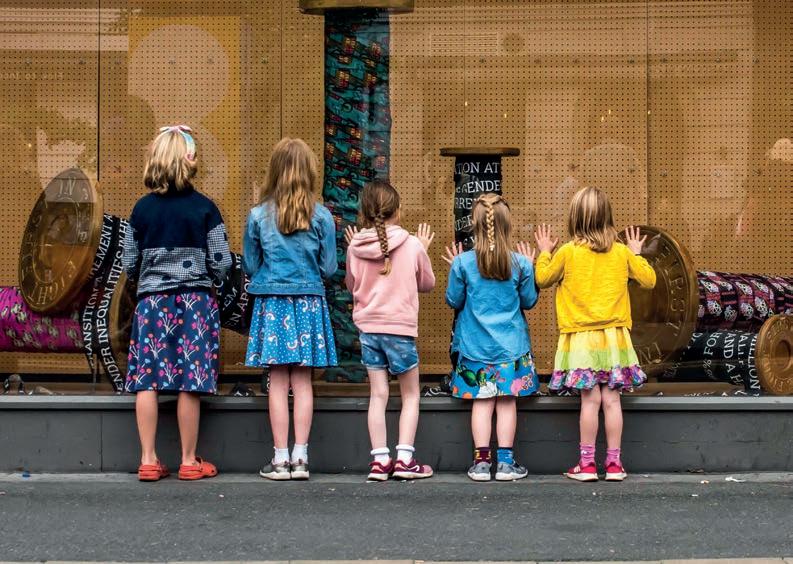

National Art Pass
ARTFUND.ORG
You can get your fill of culture with the National Art Pass, an annual membership o ering free and reduced-priced entry to museums, galleries and fascinating places around the country. This includes big names in London – HMS Belfast, Imperial War Museum, Victoria & Albert Museum, Jewish Museum London, Chiswick House & Gardens, Old Royal Naval College, Cutty Sark and the National Gallery. While these discounts are welcome, it's also valid for brilliant museums and attractions across the capital and the whole UK. A National Art Pass also means 50% o major exhibitions, plus discounts in shops and cafés. An adult membership costs £73 a year for individuals over 30, and
£110 for two adults. For an extra £10 ‘Plus Kids’ allows you to take along children under 16 in your family.
EXTRA BENEFITS: The guidebook o ers away-day inspiration, with 800+ places where you can use the pass. There's a glossy quarterly members' magazine and you'll get regular updates about exciting happenings and special o ers at museums across the UK
English Heritage
ENGLISH-HERITAGE.ORG.UK
Your children will be able to take role play to the next level with an English Heritage Membership. They could be a princess trapped in a turret, a dragon on the rampage or a knight jousting in a tournament. For a single annual fee, you can enjoy as many visits to the charity’s 400+ historic sites as you’d like, plus free or reduced entry to the many events that take place at its properties across the

“Buy a National Art Pass and you get free or discounted entry to some of our finest museums, as well as inspiration to inspire your next big away day”
National
Art Pass can take you to top spots across the UK
ABOVE English Heritage has some 400 sites to explore
ABOVE LEFT All life on earth is at the Natural History Museum
170 | ABSOLUTELY EDUCATION | AUTUMN 2022
year. You are spoiled for choice when it comes to landmarks to visit, from Eltham Palace and Gardens and Kenwood in London to Dover Castle, Hadrian's Wall, Stonehenge and Chester Roman Fort & Museum. Membership costs £66 for one adult, or £115 for two adults – each member can take up to six children under the age of 18 into a site for free.
EXTRA BENEFITS: The handbook and magazine are packed with ideas for trip and event planning. The Members' Rewards scheme has deals and o ers –everything from travel to wine – from over 60 partner organisations.

London Transport Museum
LTMUSEUM.CO.UK
One of the capital's treasures and located in Covent Garden, London Transport Museum's annual membership is sure to please all members of your family – even the ones that aren't obsessed with trains and buses. There are historic vehicles for parents to admire and, while older kids can try their hands at driving a bus or tube (simulator), younger children will love the All Aboard play zone. All this comes at an a ordable price, with an adult annual membership costing £21, or £18 if you choose o -peak membership. Membership is valid for 12 months and you can visit unlimited times. Kids get in for free, so don’t need an annual pass, but you need to

remember to book free timed-entry tickets.

EXTRA BENEFITS: Trade up to the Annual Pass Plus (£60) and you get unlimited visits plus free entry for you and two children to the legendary Depot Open Days in Acton. These sell-out festival-style meets held three times a year open a store of over 320,000 objects, including posters and ephemera alongside trains, buses and trams.
Science Museum Wonderlab
SCIENCEMUSEUM.ORG.UK
If your child isn’t already interested in science, annual membership to the Science
Museum's popular Wonderlab should change that. The immersive interactive gallery has been a family favourite since it opened in 2016 and is home to more than 50 unique exhibits across seven zones. Young people can explore fascinating topics as diverse as sound, forces, light, electricity, maths, matter and space. Annual passes cost £16 for adults (17+) or £14 for children (4–16 years). Family annual pass for 3–5 visitors with no more than two adults are also available for a small discount.

EXTRA BENEFITS: The live science shows and demos are the crowd puller,


171
ABOVE
Fun at the Science Museum Wonderlab
BELOW
Buses, trams and more at London Transport Museum
SCHOOL'S OUT / CULTURE AUTUMN 2022 | ABSOLUTELY EDUCATION |






*CheckwebsiteforT&Cs. BOOKONLINETOSAVEVIA BROOKLANDSMUSEUM.COM WEYBRIDGE , FRESURREYBROOKLANDSMUSEUM E FO R MEMBERS Aircraft Family Workshops PedalPlanes &Cars costumed storytellers Vintage Car&Bus Rides* ConcordeSupersonic Walkthroughs* AnIncredible DayOut AnIncredible DayOut New Activity Trail&Prize scanmefor moreinfo
“Historic Royal Palaces' membership o ers truly regal days out, with themed and members' only events”

o ering brilliant and informative entertainment, so keep an eye on the museum calendar so you can book your Wonderlab admission tickets, along with museum entry, well in advance.
Historic Royal Palaces
HRP.ORG.UK
This collection of incredible Royal properties o ers truly regal days out – and with extras such as magnificent grounds and family-friendly themed days. Highlights are centred around London, with unlimited entry to the iconic Tower of London, Kensington Palace and Hampton Court Palace. Mighty Hillsborough Castle and Gardens in Northern Ireland is well worth a visit, as is Banqueting House in Whitehall, with its jaw-dropping painted ceiling by Rubens. A family membership costs £82 for one adult, and £122 for two adults
with up to six named children (aged 5-15).
EXTRA BENEFITS: Expect early booking for special exhibitions, access to membersonly events and discounts in shops, cafés and restaurants. There's also a members' magazine, plus partner discounts. You get reduced-price entry to Kew Gardens, where HRP's Kew Palace is located.
National Trust
NATIONALTRUST.ORG.UK
Perfect for discovering the great outdoors, National Trust membership gives you unlimited entry to over 500 places. These span the length and breadth of the country – from Lundy Island in Devon and Giant's Causeway in Northern Ireland to Pin Mill in Su olk and Winkworth Arboretum in Surrey. When the weather turns, there are plenty of historic buildings o ering spectacular architecture and artworks. A family pass costs £83.40 a year for
one adult, and £133.80 for two adults at the same address, and their children or grandchildren. Under 5s go free.
EXTRA BENEFITS: There's a useful handbook, a members' magazine and an online area with behind-the-scenes and 'first look' information across properties. Sign up by direct debit to receive a gift card valid in National Trust shops and cafés.

The Postal Museum
POSTALMUSEUM.ORG
Tucked away in Phoenix Place, W1, this fascinating museum delves into Britain’s postal heritage. There are hands-on exhibitions, interactive and learning activities. You can design your own postage stamp, try your hand at sorting mail or take a ride through the tunnels underneath London on the Mail Rail –an unmissable piece of hidden history. Family membership costs £70 a year and gives unlimited entry for up to two adults and three children. Join online or via the booking o ce before your visit.
EXTRA BENEFITS: You get priority booking for events and exhibitions, and one free ride for each member on Mail Rail. You also receive ten tickets to Sorted! the play space for younger visitors, plus discounts at the shops and café and on birthday parties booked at the museum.
 National Trust membership opens a door to spectacular places
RIGHT Role play to remember at Historic Royal Palaces
National Trust membership opens a door to spectacular places
RIGHT Role play to remember at Historic Royal Palaces
BELOW
RIGHT
The
Postal Museum is a treasure children love
173AUTUMN 2022 | ABSOLUTELY EDUCATION |
MARVELLOUS
MATILDA
Roald Dahl’s feisty heroine, first brought to the stage back in 2010 by the RSC, remains a brilliant introduction to live drama for young people
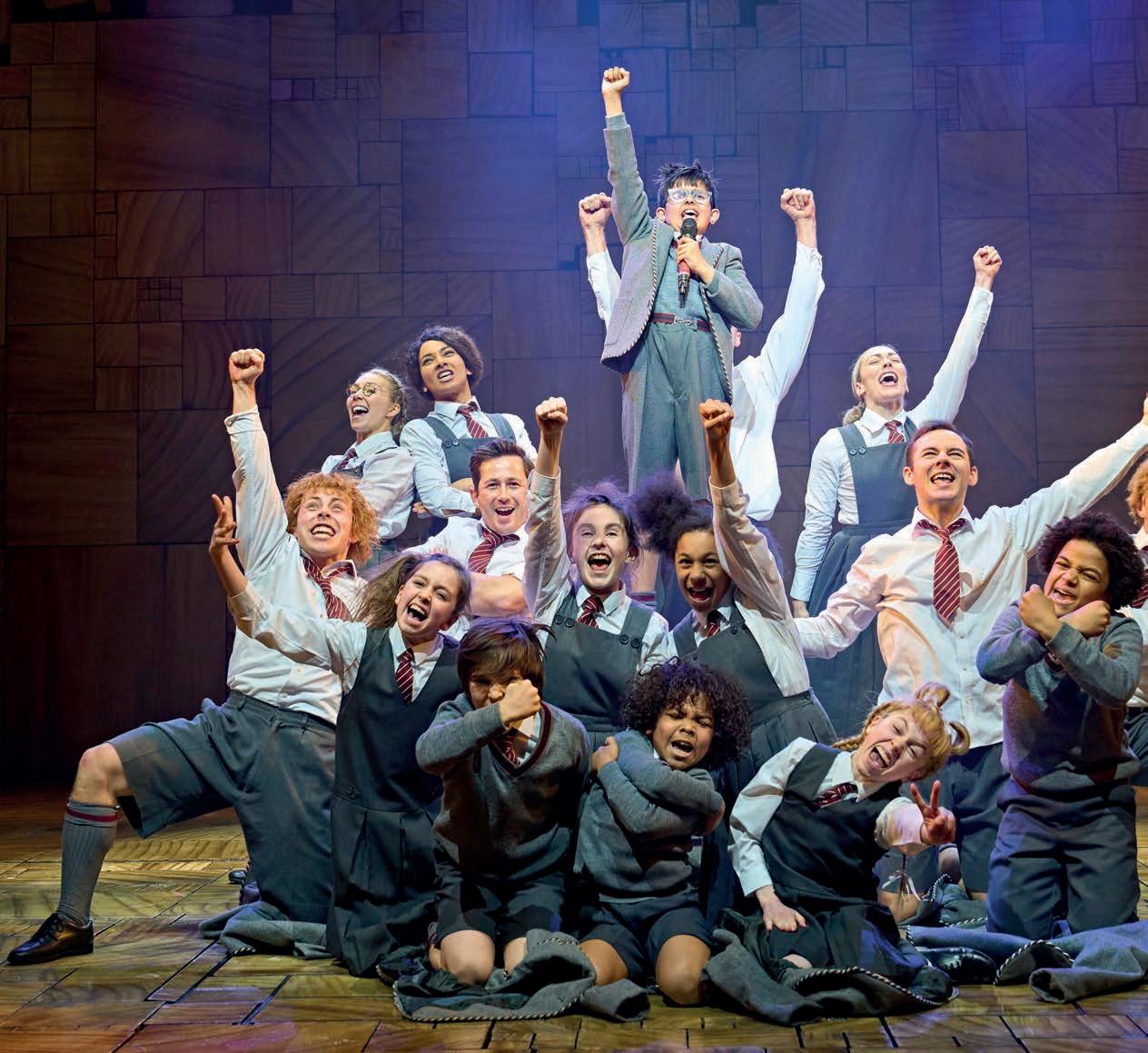
| ABSOLUTELY EDUCATION | AUTUMN 2022
174 LIBBY NORMAN
This is a really good time to go and see the Royal Shakespeare Company’s Matilda The Musical. Not only is the feisty, clever and rather weird heroine one of those characters that children instantly get, but there’s going to be an even bigger fan base once the much-heralded Netflix family blockbuster is released just in time for the Christmas season.


The trailers reveal that Emma Thompson is a shudder-inducing Miss Trunchbull who tosses children miles – you don’t have to be a bookie to predict a run on tickets for the West End show in the New Year.

The RSC has already turned its mind to the new crop of fans, recently updating its bank of educational materials to help teachers plan a proper theatre outing. The programme includes pre- and post-show resources that explore theme, characters, plot and the creative process of turning a much-loved book into a show. These usefully explore themes relevant across Drama, English, Music and even PHSE curriculums.
From September, the RSC also reintroduced its in-person workshops at Cambridge Theatre, giving school groups the opportunity to go behind the scenes and learn more about the dramatic process. Sessions are modelled on the
way real actors get to grips with productions, albeit tailored to age and stage. This is part of the RSC’s education remit, through its Associate Schools Programme. Here, it engages with schools up and down the country, targeting areas of structural disadvantage and trying to promote not only Shakespeare, but also the whole life-enhancing experience of live drama.
The RSC’s Director of Learning
Jacqui O’Hanlon has no doubts of the benefits to children and young adults. “Our own research shows that our approaches to learning support development of reading and writing skills, accelerate language acquisition, foster well-being, tolerance, empathy and resilience,” she says. “They also promote critical-thinking, creative, analytical, communication and problem-solving skills.”
But the play’s the thing (to borrow a good line, somewhat inappropriately, from Hamlet), and with Matilda The Musical the RSC really did strike gold. Netflix was smart enough to base its forthcoming film on the original, with the stage musical dream team of Dennis Kelly and Tim Minchin reunited on writing and music and Matthew Warchus directing. It was Warchus who brought the show to life originally at The Courtyard Theatre in Stratford-upon-Avon back in 2010, where it picked up the Critics Circle Award before transferring to the West End’s Cambridge Theatre in 2011 and then the Schubert Theatre in New York after that. Critics have loved it at every staging – it gathered seven Olivier Awards in London (then a record for a single show) and five Tony Awards in New York, including Best Book of a Musical for Dennis Kelly.
175AUTUMN 2022 | ABSOLUTELY EDUCATION |
SCHOOL'S OUT / THEATRE
ABOVE Matilda is a feisty heroine children adore
LEFT The cast of children have all the best moves
LEFT Matilda plays at Cambridge Theatre
PHOTO: MANUEL HARLAN
PHOTO: MANUEL HARLAN












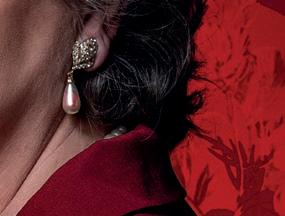


























by George Bernard Shaw TUE 22 - SAT 26 NOV *Fees apply. Calls cost up to 7p per minute, plus your phone company’s access charge. 0844 871 7615* ATGTICKETS.COM/RICHMOND* Tickets from £13 (£16.80 online/phone*)
It has since proved a hit across the world, and with far too many gongs to list.


Never mind critics, it is children who count as audience members and their enthusiasm makes it a brilliant family entertainment (the RSC recommends it for 6+). Attending a recent evening performance, I found the excitement among the mixed-age junior crowd made the whole atmosphere electric. I didn’t have a child in
tow, but the young American sitting next to me was an excellent study. He drank in the action on the stage as voraciously as he monstered his popcorn, concentrating intently and laughing at all the jokes bar one – leaning across to ask me politely what knickers are (Miss Trunchbull had a newt in hers at the time).
Of course, the whole point of Matilda The Musical is that children rule – it is absolutely their show. On stage, they are the smart ones, dealing with wicked, stupid and bullying adults (with a few honourable exceptions). They have the marvel that is Matilda. (There are several Matildas at any one time – Maisie Mardle was our diminutive heroine, and she was super talented.) The brilliant supporting cast of children are funny and act their socks
o . They have the best lines, the snappiest songs and by far the coolest dance moves.
Matilda The Musical may be pretty much a teenager in show years, but its universal appeal, and the sharpness of writing and design, means it still feels fresh. In fact, I left thinking that you’d struggle to find a more satisfying introduction to live theatre for kids from 6 to 16. Adults love it too, which is not always a given with West End shows. Long may the revolting kids of Crunchem Hall add fun and beautifully acted anarchy to the West End stage.
Matilda The Musical is at Cambridge Theatre, Earlham Street, WC2, with bookings now being taken until May 2023. Resources for schools are on the website; matildathemusical.com


AUTUMN 2022 | ABSOLUTELY EDUCATION | 177
“ The young American sitting next to me was an excellent study. He drank in the action on the stage as voraciously as he monstered his popcorn”
ABOVE Imaginative staging keeps children engaged LEFT Miss Honey stands up for her pupils
PHOTO: MANUEL HARLAN
PHOTO:
MANUEL HARLAN SCHOOL'S OUT / THEATRE

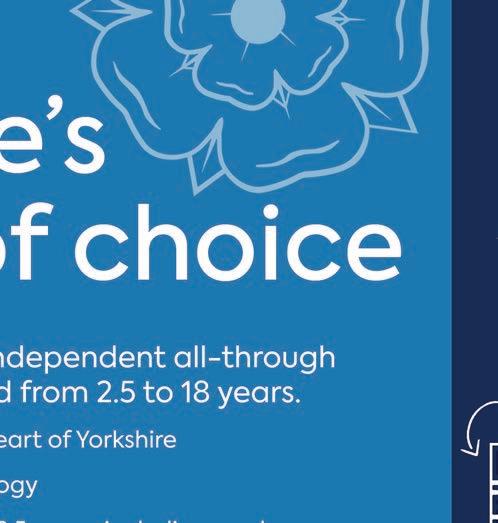







FIVE revival
Prepare the ginger beer, The Famous Five are back in a new musical production o ering fun and adventures galore
As autumn shadows lengthen, a new musical production of The Famous Five o ers sunshine, even a chance to break out the ginger beer (lashings of). Enid Blyton’s most illustrious young sleuths are returning to save the world – and just in the nick of time, some might argue.
The musical, created by Theatr Clwyd in a co-production with Chichester Festival Theatre, is written by Elinor Cook andwith music and lyrics byTheo Jamieson. Theatr Clwyd Artistic Director Tamara Harvey says: “I loved Enid Blyton’s stories when I was a kid – the magical worlds she created and the daring adventures she and her characters took me on – and so it’s a huge privilege to have the chance to bring The Famous Five to life on stage”. While Blyton books didn’t always attract plaudits among educators, you can’t argue with her fan base – running to millions
across the world. Nor too her amazing ability to spin a gripping yarn, most notably with The Famous Five series. This began in 1942 and ran to 21 books over the next two decades.
This musical is, unapologetically, inspired by those blockbusters. George and her dog Timmy prepare for summer to be ruined by the arrival of cousins Julian, Anne and Dick. But with Kirrin Island, a ruined castle and all sorts of funny goings on to be investigated, there’s no chance of dull days. With derring-do set to song, it’s a treat for audiences in Mold, Flintshire (home of Theatr Clwyd) and at Chichester.



While this production is a retro celebration, the two regional theatre companies involved are innovators. Theatr Clwyd punches high, as shown by productions such as Laura Wade’s Home, I’m Darling – a co-production with the National Theatre that won Best New Comedy at the Olivier Awards. It has an impressive programme for developing talent, as well as working with lots of schools. Chichester Festival Theatre has a similar track record for working with young people and a longstanding association with productions that head to the West End (Laurence Olivier was its first artistic director and Daniel Evans is at the helm now). So could The Famous Five be among its London-bound shows? Enid Blyton fans hope so. In fact, we are primed and ready to crack open the ginger beer.

The Famous Five is at Theatr Clwyd until 15th October and at Chichester Festival Theatre from 21st October-12 November. theatrclwyd.com and cft.org.uk.

SCHOOL’S OUT / THEATRE
ABOVE Blyton’s most famous sleuths
are back to save the day and sort out baddies
LEFT Theatr Clwyd Artistic Director Tamara Harvey
179AUTUMN 2022 | ABSOLUTELY EDUCATION |
PRODUCTION REHEARSAL PHOTOS: THE OTHER RICHARD (PRESS) SAM HARRISON

Motivation








It’s all about focus! We know how tricky it can be to encourage your children to knuckle down and study. Workstations can be created almost anywhere in the home and, with some smart design and the right furniture you can create a workable study area that your children enjoy spending time in. Cult’s trendy range of home o ce furniture is sure to inspire and encourage even the most work-shy of teens.
Creating a calming space away from distractions is key. Stuck on colour? We suggest going for neutral wall tones to increase a sense of calm – you can add fun pops of colour through your furniture and accessories. Also, don’t forget to clear that clutter because a tidy space really is a tidy mind. If possible, go for a desk with a drawer, Cult’s Angus (£229) is a great example,


focusing on clean lines, and sleek design –it's also particularly savvy on the storage front. The added bonus of tidying away their clutter also means you can re-purpose the desk during the day when they are at school. Get comfy and choose the right o ce chair for your child. Look out for ergonomic designs with a height adjustable seat to ensure their posture and focus remain true. The Haines (£149) and Brooklyn from (£119) provide both support and comfort, and also have plenty of great colour and fabric options to choose from.





Bright ideas are the name of the game when it comes to lighting. A good desk lamp is a must-have for any study setup, it helps avoid eye strain and tiredness – styles with an adjustable head are a bonus, the Ebbe (from £39) is the perfect task light to keep their homework in the spotlight.



An inspiring workspace will increase productivity, but it can be personal too. Try adding uplifting accessories that reflect their personality. A funky piece of artwork, some calming potted plants or flowers, along with treasured personal items, can all add to a harmonious work environment and bring good vibes that boost wellbeing and also help make the space a pleasure to work in.

Head down to Cult’s London showroom to start building your child or teen's dream study zone. Browse a ordable designs with next-day delivery on in-stock items.
CULT



FURNITURE 811-813 Wandsworth Road, SW8 3JH. 020 8185 6960 cultfurniture.com Create the right space to motivate your children and you'll be repaid with creativity and inspiration, say Cult Furniture 181AUTUMN 2022 | ABSOLUTELY EDUCATION |
STATIONS Use the Absolutely Education code CULT10 online or Cult’s showroom for a 10% discount on all orders. Valid until Dec 21st 2022 online EBBE TABLE LAMP IN COOL GREY, £39
HAINES
OFFICE CHAIR IN MIDNIGHT BLUE, £149
CARY
CERAMIC VASE IN ORANGE, £25 ABSTRACT FRAMED A3 ART PRINT, £39 ANGUS OFFICE DESK BLACK ASH EFFECT, £229 SCHOOL’S OUT / PARTNERSHIP


STATEMENT TILES FOR BATHROOM BLISS Add bespoke style & orange tones to your bathing haven this autumn with our Bert & May Marigold Maze designer tiles We o er expert advice and technical know-how with more than 15,000 tiles at our boutique showroom or simply buy online e Old Firestation, 67 High Street, Ascot SL5 7HP | 01344 620211 www.hyperiontiles.co.uk
ART IN PRINT
Young London Print Prize helps children develop printmaking skills and supports future art careers


This will be the third Young London Print Prize, a competition that was established during the pandemic as a response to a surging demand for arts education that happens outside the classroom. For the competition, young people from across London have risen to the challenge of learning a new art technique then harnessing those skills to express their feelings about climate change.
By the time the winners are announced, more than 3,000 young London artists between the ages of 9 and 11 will have taken part from across the capital.The competition’s theme has particular relevance for this age group, as it gives children the opportunity to get involved in the debate about climate change – an area where they often feel powerless – by expressing themselves through a visual medium.
This year’s competition was launched back in June, and winners will have their names in lights – literally – on Piccadilly Lights (the giant screen in Piccadilly Circus) in early November.
The timing, a few days before the start of this year’s COP 27 conference in Egypt, is perfect.
Over 25 schools across the capital have participated and the run-up has included free teacher training sessions, plus more than 40 workshops where schoolchildren have learned how to make art using relief printing techniques – skills they then use for the competition.
All the art showcased by the Young London Print Prize is created, judged and curated by young people, and that’s really central to the idea behind the competition. The works submitted by young people aged 9-11 are then judged by Year 12 students from across London. This means students aged 16+ get an opportunity to learn more about curating art, sharpening their critical appraisal skills and getting a taster of what it might be like to work in the thriving contemporary art scene.
Young London Print Prize is driven by the idea that all young people can be artists in their own right. There are many empowering elements for all those who enter, but surely the most important is the opportunity to be exhibited at Woolwich Contemporary Print Fair, inhabiting the same space as some of our finest printmakers.
Woolwich Contemporary Print Fair takes place from 3-6 November at The Fireworks Factory. woolwichprintfair.com


SCHOOL’S OUT / ART PRIZE
ABOVE
2021
winners at Woolwich Contemporary Print Fair
BELOW ‘Storm’ by Renee Gunung; ‘Land of peace’ by Mohammad Juman and (right) ‘The Earth is Sore’ by Tasmin Benalleg
183AUTUMN 2022 | ABSOLUTELY EDUCATION |
LEARNING
Subscription activity kits promise hours of fun away from the screen, helping children pursue their hobby or passion – and delivering educational value
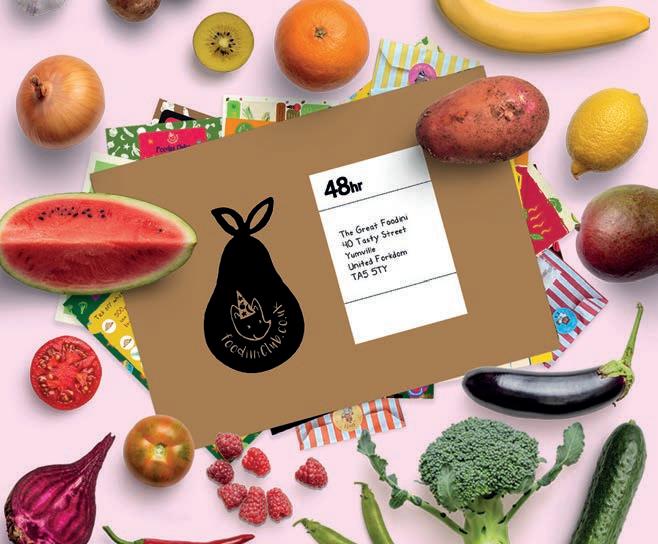

There’s something satisfying about letting your child enjoy analogue fun in a digital age. While letterbox subscriptions are not a completely new phenomenon, their focus has most often been on reading. But as the market has grown (and the desire to give a gift that lasts), subscription kits have begun to expand, and you can now find cleverly designed kits for art, craft, gardening, cooking, and so much more.
For parents, this is a win-win situation. You can let your child explore their latest passion and build focus and creativity with self-taught projects. Meanwhile, you get to enjoy some quiet time knowing they are having mindexpanding fun away from their screen. Many companies o er one-o kits, so you can test the water, as well as plenty of added-value features such as online tutorials and projects. Also look out for sibling kits, meaning two kids share creative projects for a bit less money. Here are some of our favourite options for broadening young minds.
Cook
your budding Master Chef, Foodini
a seasonal
box designed to inspire creative meals. Alongside the six vegetarian recipes and three drink recipes in each pack, you’ll find foodie know-how, including foraging, kitchen science and culinary skills guides. A recipe binder is included if you buy the six- or nine-month subscription and each pack has extras such as craft materials, meal planners and stickers. It’s a great way for kids to develop confidence in the kitchen and may encourage hesitant eaters to be more adventurous. foodiniclub.co.uk
184
LETTERBOX
Club KIT: FOODINI CLUB COST: FROM £30 PER PACK AGE: 3+ WITH GUIDANCE Perfect for
is
subscription
RACHEL HOGG
| ABSOLUTELY EDUCATION | AUTUMN 2022
Art Explorer
KIT: ARTFUL
COST: FROM £39.95
AGE: 12+
Artful is a great way to nurture an aptitude or interest in art. While a single box may be a good taster, a year’s subscription (£139.95 for four boxes) o ers a lot more fun, as every quarter young artists are introduced to a new medium and given tools to go create. With lino printing, calligraphy and watercolour in the mix, it’s great for adding to their skills and they are provided with top-quality art materials. Each box is accompanied by a magazine of tutorials and inspiration in a kit that will stretch and inspire the 16+ age group as well as younger children. artful.co.uk

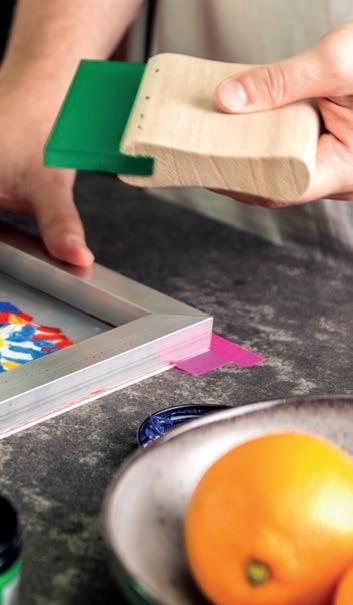
Brain Builder
KIT: KIWICO
COST: FROM £14.01 MONTHLY, PLUS SHIPPING
AGE: 0+ A grandaddy among the creative kit suppliers (it calls them crates), KiwiCo has shipped over 40 million boxes of mind-expanding play across the world and has an association with Seattle Children’s Hospital and an army of child testers. While its 0-24 subscription – with kits delivered bi-monthly – is a popular gift for babies, kits go all the way up to 14+ for scientists, engineers, DT and art fans. Whether they are learning to code, design, draw, make, count or build, your child or teen is sure to use their hands and their imagination in equal measure. kiwico.com

185 SCHOOL'S OUT / ACTIVITY KITS
AUTUMN 2022 | ABSOLUTELY EDUCATION |

Read & Play
KIT: LITTLE HANDS LEARNING


COST: FROM £21 MONTHLY


AGE: 3+
The perfect thing for any budding bookworms, these boxes bring literature to life. The single boxes (from £27) make great one-o gifts and are a good way to test the water before you commit. Sibling boxes are also available via subscription or to gift. What’s great for parents of young children is the juxtaposition of reading with creative play. Each box contains a classic book for their library and four linked educational activities, ranging from baking to craft, nature exploration and storytelling. littlehandslearning.co.uk
Eager Einsteins
KIT: MEL SCIENCE
COST: FROM £14.90 MONTHLY, BILLED ANNUALLY




AGE: 5+
Any Einstein and Marie Curie hopefuls are going to love this subscription box, a hit in the US and now available in the UK. There are STEM kits for children aged 5-10, with more specialist physics and chemistry projects suitable for 8+ to teens. From building a hydraulic lift (and learning about states of matter) to making pure water and understanding heat transfer, the maker-doer approach is backed by science and teaching knowhow. Kits can be shared, so great sibling or parent-child experiments await.


melscience.com
SCHOOL'S OUT / ACTIVITY KITS 187AUTUMN 2022 | ABSOLUTELY EDUCATION |
A new Prep School for Twickenham






ADMISSIONS OPEN FOR SEPT 2023 Opening for boys and girls aged 21/2-11 Open Morning: Saturday 3rd December Visit prep.radnor-twickenham.org
Mindful Moments
KIT: HAPPY CRAFT BOX

COST: FROM £19.97 MONTHLY
AGE: 4+
The activities inside this subscription box will do more than just keep your child entertained, they can help support emotional wellbeing and happiness. Each month focuses on developing a new mindset skill – with activities inspired by art therapy, yoga, mindfulness and positive psychology – alongside a guide for those parents looking to support their child’s development. Kits are tailored for two age groups 4-8 or 9-12, and you can opt for single or sibling boxes. We like the addition of progress wallcharts and journals to encourage reflection on what’s been achieved. happycraftbox.com
Get Growing
KIT: MUD + BLOOM
COST: FROM £13.95 MONTHLY
AGE : 3+
This gardening subscription box for the preschool and primary age group will be sure to inspire lots of creative play outdoors. The boxes were designed by teachers, with input from forest school, Montessori and Steiner practitioners, and each contains a combination of seasonal activities such as seed planting, foraging, crafts that use natural materials and wildlife spotting. We like the sibling boxes, which can be gifted for two, and the more ambitious projects – from making a mini wormery to creating a pebble sundial. mudandbloom.com

Maths Genius
KIT: CUBIE
COST: FROM £32.91 MONTHLY
AGE: 4+
This subscription box takes a little and often (10 minutes a day) approach to mastering maths and showing children just how creative and inspiring numbers can be. Cubie has been developed by a teacher and former private tutor, with workbooks designed in consultation with early and primary years specialists. This is what parents need to know, but for children, it’s the fun of receiving a new parcel by post every month with all they need for four weeks’ worth of Cubie fun – including pencils, rubbers and as well any other important tools that young mathematicians may require. cubie-education.com

SCHOOL'S OUT / ACTIVITY KITS
189AUTUMN 2022 | ABSOLUTELY EDUCATION |
SICILY
Two contrasting villas illustrate the diverse o erings of this beautiful island

SENSATIONAL
SANDY CADIZ-SMITH
190 | ABSOLUTELY EDUCATION | AUTUMN 2022
The gorgeous island of Sicily sits proudly in the heart of the Mediterranean under the watchful eye of the towering grandeur of snowtopped Mount Etna, Europe’s highest active volcano. The island o ers a dazzling diversity of landscapes, myriad cultural and historical attractions and a delectable ancient cuisine inspired by its fabulous fresh ingredients. This unique combination of volcanoes, mountains, seascapes and rolling landscapes in shades of green connects the cities and traditional villages that cling precariously to hillsides. It’s a marvel to drive around because of its gravitydefying road systems on stilts and innumerable interconnecting tunnels.
We enjoyed a two-centre stay in contrasting villas chosen from the Villtravellers portfolio. Our first stop is a short drive from Catania, the ultimate


get-away-from-it-all haven deep in the countryside. Casale degli Erei awaits down a dusty road after a journey through a forest and rows of prickly pears standing to attention. Set in expansive grounds, Casala degli Erei has nine elegant bedrooms and ample living space, including multiple terraces, an outdoor kitchen and a large roof terrace with fabulous far-reaching views. There’s also a relaxing spa with a hydro-massage pool, jacuzzi and sauna and a sparkling outdoor pool with sun loungers. It is a peaceful and magical place to relax and soak up the Sicilian sunshine.
There’s plenty to discover nearby, too. We visited Villa Romana del Casale, thought to have been the country retreat of Rome’s co-emperor from AD286-305. Over 3,500 square metres of astoundingly well-preserved multicoloured floor mosaics took our breath away. We retired in amazement to one of the island’s beautiful rural restaurants –Agriturismo Gigliotto – for a traditional feast of Sicilian cuisine, including
“Sicily is food for the soul - a quite unique setting and culture that tantalises the senses”
191AUTUMN 2022 | ABSOLUTELY EDUCATION | SCHOOL'S OUT / TRAVEL
LEFT Casale degli Erei overlooks Sicily’s rural landscape
RIGHT The villa has a swimming pool, as well as a jacuzzi
cheeses, salami, homemade pasta, fish, and local vegetables, washed down with refreshing wines produced on-site. The location was a proper retreat, with the chance to truly immerse ourselves in the island’s history, scenery and flavours. Refreshed, and with our hearts full of love for our newly discovered island utopia, we headed north towards the capital Palermo to our home for the second half of our stay at Il Borgo del Barone. This magnificently restored historical


villa dates back to the 17th century and is the perfect mix of ancient and modern. There are seven cool and airy bedrooms with fabulous contemporary ensuite bathrooms. The villa also has stunning views over the sea, a delightful courtyard and an expansive dining area where we enjoyed sunset aperitifs and a delicious dinner prepared by local chefs just for us.
This is also the ideal base for exploring the beguiling seaside town of Cefalu. Here, picturesque, cobbled streets, all dressed with vibrant ceramic pots overflowing with flowers, are full of tempting shops to explore. And all streets seem to lead back down to the sparkling azure sea and inviting beach. We indulged in a lunchtime banquet – an incredible array of local fish dishes – in Restaurant ITTICO, set on the water with the bluest of views. Cefalu is seaside heaven for the food as much as the shopping and architecture.
In fact, Sicily is food for the soul, a quite unique setting and culture that tantalises the senses. Staying in two luxury villas in di erent parts of the island gave us the perfect opportunity to absorb its diverse beauty and rich history – not to mention all those delicious local foods and wines. It’s an Italian island that has certainly captured our hearts.
THE VILLATRAVELLERS EXPERIENCE
Villatravellers provides exclusive villa holidays across Sicily. The perfect holiday home is handpicked for every customer from a portfolio of 70 properties. Using its expert local knowledge, the company offers a dedicated concierge service and personalised itineraries to ensure guests enjoy an authentic Sicilian experience showcasing the island’s culture, natural beauty and great food. The team can organise a comprehensive range of in-villa (including chefs and cookery courses) and outside-villa experiences and tours to suit your taste. villatravellers.com


“The villa also boasts stunning views of the sea, and a delightful courtyard”
SCHOOL'S OUT / TRAVEL 192 | ABSOLUTELY EDUCATION | AUTUMN 2022
LEFT The kitchen and dining area at Il Borgo del Barone
LEFT Il Borgo del Barone is a traditional stone Baglio
RIGHT
The villa’s swimming pool is nestled amongst the hills
AND BE MERRY
A warm welcome. A scent of mince pies. The roar of the fire. The pop of champagne. The ultimate festive feast. Coworth Park.



ASCOT +44 (0)1344 876 600 DORCHESTERCOLLECTION.COM #DCmoments CoworthPark CoworthParkUK CoworthPark EAT, DRINK
CYPRU
got talent
Whether you're after watersports or ruins, Cyprus has it all – plus plenty of sunshine and friendly faces too
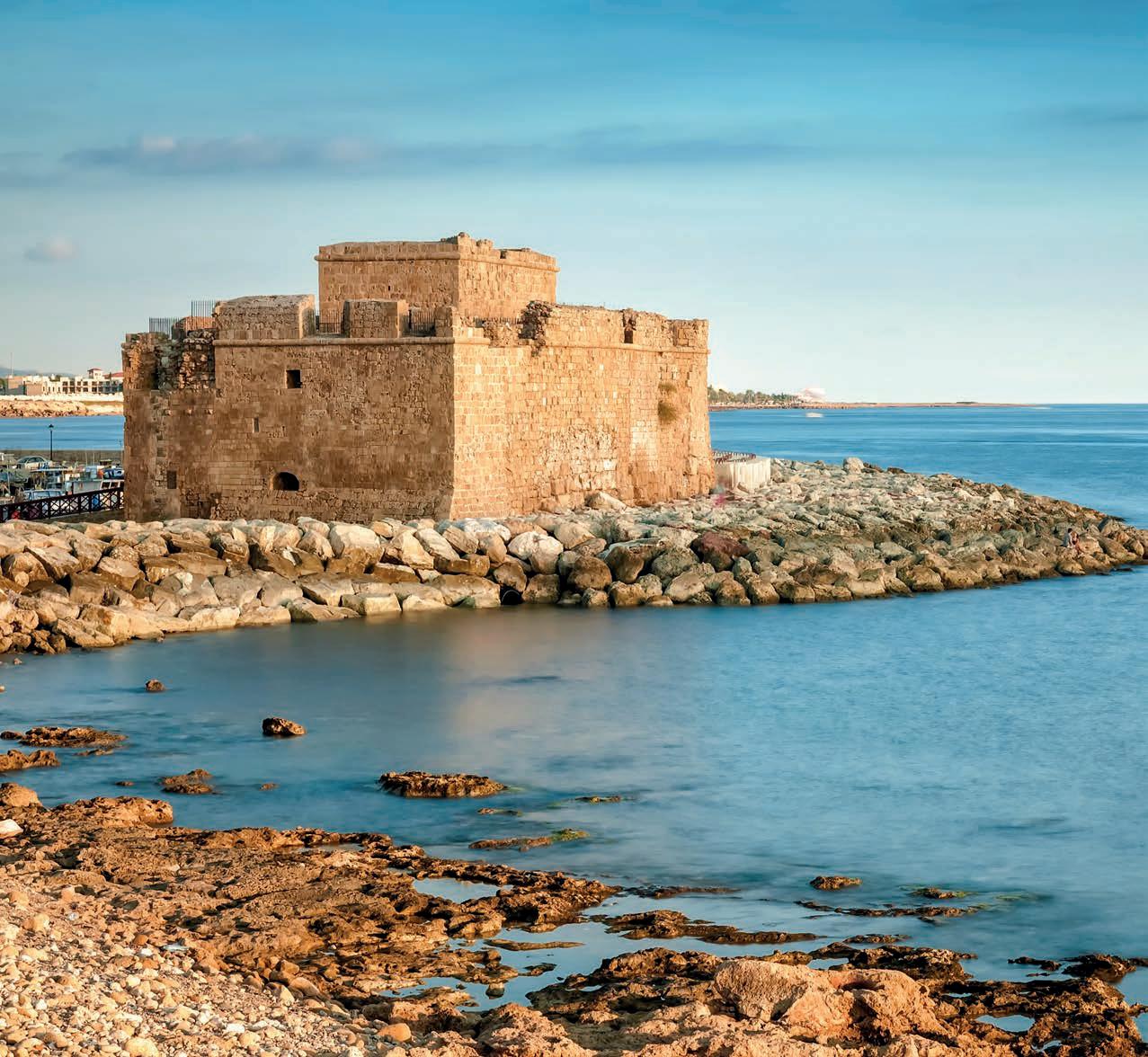
S’ 194 | ABSOLUTELY EDUCATION | AUTUMN 2022 ROB MCGIBBON
The bald head, cheeky grin and the London accent are big clues, but the famous tattoo across his wellirrigated beer belly quickly gives away the man’s identity. The unmistakable outline of our holiday island beneath the fuzz can belong to only one person: take a bow Stavros Flatley, the legend of Britain’s Got Talent 2009.
It’s not every day you meet a living Greek god, but when it comes to Cyprus, Stavros is as close as you can get and he’s here, in his trunks, on a beach in Paphos. Not so much Heracles – god of sport and saviour of mankind – as Lardus, the god of good living and laughter. He charges €1 for
selfies to benefit a local charity and last summer alone he raised €3,000 from star-struck holidaymakers.
Four years ago Stavros – real name Demi Demetriou (“Call me Fatty if you want,” he chuckles) – sold up in London to move back to his motherland and be with his beloved son and codancing hero Lagi. He has set up a beachside water sports business and he is o ering me and my 13-year-old son Joseph and our holiday friends the ride of a lifetime on a giant inflatable sofa. It’s clear that Stavros is a sofa aficionado, so how can we refuse?
We are buckled into lifejackets and moments later our intrepid group is whooping with laughter, clinging on for dear life as the sofa hurtles across the waves behind a speedboat. A good slice of cheesy holiday fun is essential and this hits the spot perfectly.
Cyprus is not everyone’s top choice for a European break, but I have been coming here on-and-o since the mid-1990s and I can vouch for the
warmth of its welcome, the guarantee of sun and the scope of the o erings. It may lack the sophistication and charm of, say, France or Italy, but it always delivers when you want a relaxing and uncomplicated break.
This time we stayed at Athena Beach hotel, a few miles along the coast from the centre of Paphos on the west side of the island. Athena is a vast familyfriendly hotel with large rooms, a big pool and sweeping views across the Med. It’s a firm favourite with Brits, and particularly popular with pensioners who go there on bowls tours to use its tournament-quality artificial lawns.
My wife Emma is an artist and the last thing she wants is daft sofas rides or sleepy games of bowls. Give her culture, churches and crumbling ruins and she couldn’t be happier. With this in mind, we took a break from our loungers and set o on a pleasant stroll along the esplanade into Paphos central.
By the harbour, you will find the impressive Paphos Castle, which was


“Cyprus always delivers when you want a relaxing and uncomplicated break”
195AUTUMN 2022 | ABSOLUTELY EDUCATION | SCHOOL'S OUT / TRAVEL
rebuilt by the Ottomans around 1592 after the original Byzantine fortification was finally destroyed in an earthquake. A few minutes away is Paphos’ expansive archaeological park, which has been a UNESCO World Heritage treasure since 1980.

Across nearly 300 hectares, there are ancient ruins of a Roman city with its palaces, fortresses, villas, theatres and tombs. To be honest, Joseph was nonplussed by these old wonders and went for a solo walk to a pretty

whitewashed lighthouse overlooking the sea, leaving Emma and me to explore in peace. We walked through the ruins and sighed at the beauty of a series of immaculately preserved mosaics dating from the Hellenistic period (3rd-1st centuries BC) in a protective building called the House of Dionysus. You tread over raised gangplanks to view tiles showing mythology, worship, hunting and complex geometrical shapes. They are truly stunning. My pick was the one of Phaedra and Hippolytus. Cupid is looking on as an embarrassed Hippolytus reads a love letter from Phaedra, his stepmum. A somewhat complicated love story, all told in fragments of tile.
Also on this archaeological site are the Tombs of the Kings, which are monumental underground Roman tombs carved out of stone. They're dark
and creepy, but nonetheless fascinating. Not far from here we found a far more welcoming establishment, Hondros Taverna. It dates from 1953 and is billed as the oldest taverna in Paphos. It is certainly among the best. We feasted like gods on smokey grilled octopus, succulent kebabs and enormous salads, with wine and beer and even dessert for €60.
There are countless cultural gems to explore across Cyprus, but there was enough for us in Paphos this time. The rest of the week ebbed and flowed around the beach and pool. We discovered a pretty stretch of coast at Arapis Coral Bay, a 20-minute drive west of the city, which is worth seeking out. One afternoon I took a lesson with the pro at the Elea Golf Academy in the hills overlooking Paphos, and Joseph and I ended the week with the perfect sign-o to any sunshine holiday, a water park expedition.
Our last day coincided with the first day of the new season at Aphrodite Water Park, a 15-minute amble from our hotel. After a warm-up on the gentle flumes, Joseph and I hit the Twister and Kamikaze chutes, followed by a ride called Zero Gravity Free Fall. Surely, there can be no better way to prepare for the journey back to home routines than the adrenaline burst from a split second of free fall?
I love Cyprus because it is sunny, easy and friendly. You can have fun and you might even learn something. So that’s three YESs from us.
Athena Beach Hotel
To enquire about availability or make a reservation, visit athena-cbh.com

“Athena is a vast, family-friendly hotel with a big pool and sweeping views”
196 | ABSOLUTELY EDUCATION | AUTUMN 2022 SCHOOL'S OUT / TRAVEL
LEFT Petra tou Romiou, also known as Aphrodite’s Rock
RIGHT The charming streets of Paphos Old Town















TWO DAYS IN
THE DAM
What's everyone's favourite weekend destination? Surely it's Amsterdam – and with good reason


198 | ABSOLUTELY EDUCATION | AUTUMN 2022 PENDLE HARTE
Everybody loves Amsterdam. Whether it's your first visit or your hundredth, there's always something new to discover and revisiting old haunts never gets boring. There's no better use of a weekend than renting bikes and cycling along the canals, visiting museums and stopping at everything that catches your eye. And now that we've discovered The Pulitzer there's even more reason to return. The Pulitzer is a large hotel with a cosy feel, thanks to its unique makeup of 25 17th century canalhouses around a block. They spread over Prinzengracht and Keizersgracht, knocked together to create a maze-like single building with lots of character. It's the oldest five star hotel in Amsterdam, dating back to 1960 when Peter Pulitzer (grandson of Pulitzer Prize founder, Joseph) bought 12 run-down canalhouses with a view to restoring them and creating a world-class hotel. Over the years he acquired neighbouring houses and the hotel grew, becoming known for its
annual floating concerts and its sprawling site. Then in 2017, the traditional hotel reopened with an entirely new look, a contemporary redesign that combines serious luxury with a contemporary, design-led feel. Now the interior feels very modern Dutch, in that it's unafraid to combine quirky detail with traditional comfort. There's lots of art and many books, for instance, and a loose grey and yellow colour theme that recurs in everything from bedding to notepaper, but without making everything into a slavish scheme. In all, it's a colourful place with lots of small visual details to take pleasure in, from the Delft tiles at the reception desk to the single outsize armchair in the lobby, the former apothecary that's celebrated in the restaurant and the beautiful green courtyard garden with swing chairs.

BELOW Pulitzer Amsterdam is cosy and welcoming
out months in advance.
But it's worth the wait for its sensitive and atmospheric tribute to 20th century history.
Other museums range from the world-famous (Rijksmuseum, Van Gogh, Stedelijk) to the little-known and obscure: there's a museum for everything in Amsterdam, however niche. There's a Houseboat Museum (on a houseboat, of course), a Torture Museum, a Cheese Museum, a Hash Museum and, of course, the Heineken Brewery tour. We enjoyed a pop-up exhibition space dedicated to sustainable fashion, bought some curious vintage ceramics in an antiques arcade and visited the headquarters of Tony's Chocoloney in the Westerpark before heading to the Noordermarkt for the cafe with the famed apple pie and a browse of the market.
In the bedrooms, everything has been considered. There's an umbrella in our room, for instance – invaluable for the inevitable Amsterdam shower –and a welcome bottle of Prosecco, and comfortable slippers for everyone. Shower gel is the insanely addictive Debaser by DS & Durga, and there's lots of velvet upholstery in bright pinks and blues, gilt-framed old masters and old master pastiches. An Art Deco bar unit houses the television, and the queen sized beds are impossibly comfortable. Our bathroom is vast by any standards and particularly by Amsterdam's (visitors to the Pulitzer might not be aware that Amsterdam's tightly packed housing doesn't on the whole allow for spacious bathrooms and that many people live without bathtubs in this city).
So from a well-located base at the Pulitzer, exploring the city is easy. Set out on foot and discover De Nejen Straatjes –the nine streets that criss-cross the four main canal arteries – with their mix of stylish boutiques, cafes and bars, or leave the hotel and turn right for the five-minute walk that takes you to Westermarkt and the ever-popular Anne Frank museum –don't expect to turn up without a booking. The museum used to be known for its long queues; now it's known to be sold
Food at the Pulitzer is excellent, naturally – particularly the breakfast bu et, which attracts non-residents for its mix of cheese, fish, meat and eggs, plus fruit, wa es, pancakes and excellent co ee. Dinner at the Jansz is informal yet swish, and cocktails at the Pulitzer's Bar – should you choose to indulge – are as good as any the city can o er. Prepare to be charmed.
Pulitzer Amsterdam
Prinsengracht 323, 1016GZ Amsterdam

Rooms from £256 per night pulitzeramsterdam.com

“There's a museum for everything in Amsterdam, however niche”
199AUTUMN 2022 | ABSOLUTELY EDUCATION | SCHOOL'S OUT / TRAVEL
LEFT The city is just made for exploring on foot or by bike






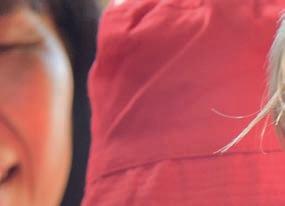



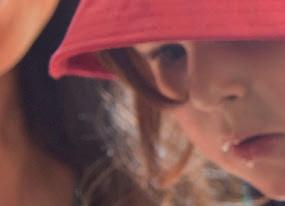








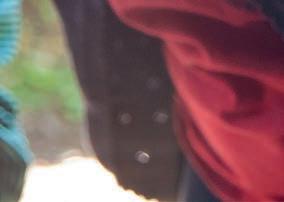





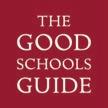

} Embedding key values and developing ‘the whole child’ through a unique, continuous five-year curriculum } Focusing exclusively on cutting edge Early Childhood Education (age 2+ to 7+), the most crucial period in a child’s life } Transitioning seamlessly from play-based to more structured learning, preparing the children to move on at 7+ with that special Herne Hill School spark } Expert staff operating under the ethos of Love · Care · Excellence in which children excel and learn with fun and enthusiasm } Extensive wrap-around care from 7.45am to 4.45/6pm depending on the year group hernehillschool.co.uk enquiries@hernehillschool.co.uk 020 7274 6336 The Old Vicarage 127 Herne Hill London, SE24 9LY Herne Hill School for Kindergarten from 2+ or call the office for chance vacancies in other year groups Register now The perfect setting for your child’s early schooling: PRE-PREP OF THE YEAR Rated ‘excellent’ in all categories
Winning
huts and sandy shores of Colwell Bay. There is a limited opportunity to buy an attractive cottage with a private front garden with prices from £155,000
THE LAKES ROOKLEY
An all-action resort, nestled at the heart of the island. Within easy reach of all the Isle of Wight can o er, it's ideal for families of all ages and is convenient for both ferry ports. Our recently refurbished, brick-built cottages at the Lakes Rookley are priced from £165,000 and there are limited lakeside positions available.
INVESTMENT BUYING
The Away Resorts’ long lease holiday property options o er you two attractive earn back options. Opt for a variable return and flexible personal use, by choosing to make use of the managed letting scheme; alternatively you can select a fixed net return of 7% for a period of 3 – 5 years with limited personal use.
home ownership makes


with Away
ive the life you love with Away Resorts holiday home ownership. Away Resorts can give you the gift of relishing more time, just for you, with a boutique barn in Cornwall or a cosy cottage on the Isle of Wight. Indulge in sneaky breaks away with your favourite people, or long leisurely hols with no rush to return to reality. You can also put your property to work with a fuss-free holiday letting scheme or a 7% fixed return investment option*, earning you pensionable cash back from your purchase too.
Away Resorts’ 999 year-leasehold holiday properties are built to residential standards and sold fully furnished, ready to enjoy. They are located on beautiful resorts, with no second home buying restrictions
to worry about, and fabulous facilities to make the most of. These properties have capital appreciation potential and if you choose to let them, you could benefit from favourable tax regulations too.**

RETALLACK RESORT & SPA
Enjoy a Cornish retreat close to holiday hotspots Padstow and Newquay with a stylish boutique barn with 2, 3 or 4 bedrooms. All come with private decking space and beautiful countryside views, but the four bed really wows with a showstopping rooftop terrace. Prices start from £295,000.

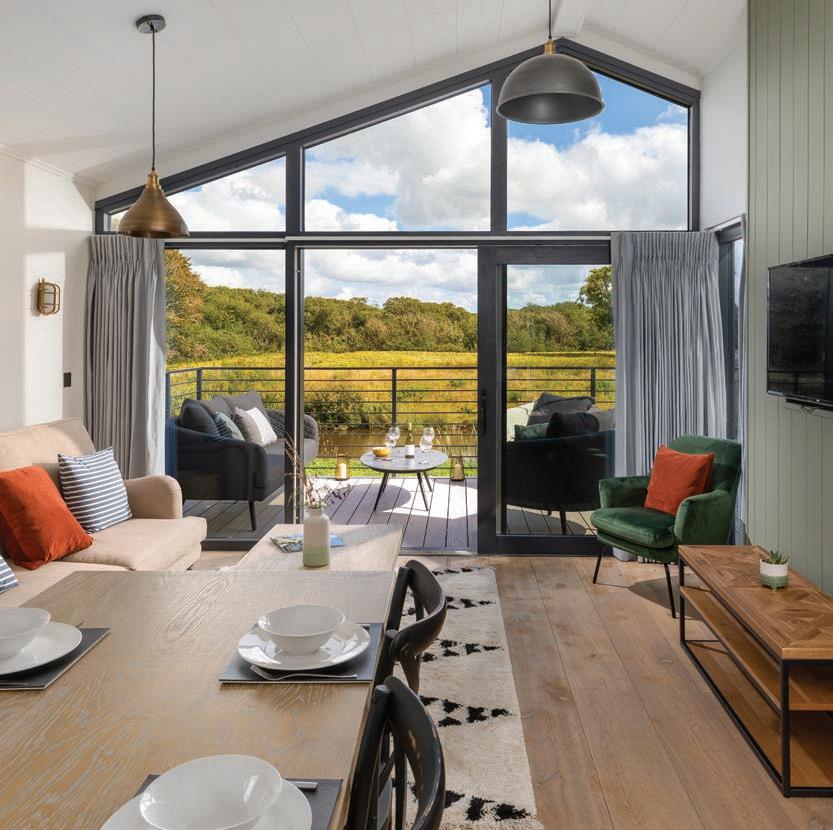
THE BAY COLWELL
The Bay Colwell is a quiet resort, tucked away on the Western tip of the Isle of Wight, just a short stroll from the beach
AWAY RESORTS
For more information call 01637 226109 or visit awayresorts.co.uk
“These properties in beautiful resorts have capital appreciation”
L* The Away Resorts investment product is available exclusively to qualifying investors; terms and conditions apply. ** We advise you to consult a specialist tax adviser to ensure you make the most from your purchase. 201AUTUMN 2022 | ABSOLUTELY EDUCATION | Holiday
sense
Resorts
RETREATS SCHOOL’S OUT / PARTNERSHIP


Fri 25 Nov – Sat 31 Dec WWW.CORNEXCHANGENEW.COM/PANTO | BOX OFFICE 01635 522733 WRITTEN AND DIRECTED BY PLESTED BROWN AND WILSHER Illustrations by Armadillo Images Fee Fi Fo FUN for all the family at the Corn Exchange pantomime!

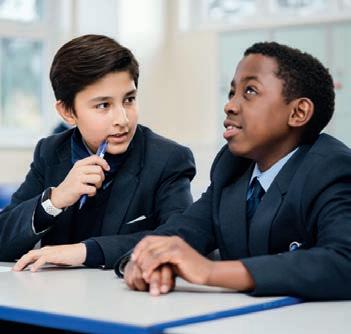


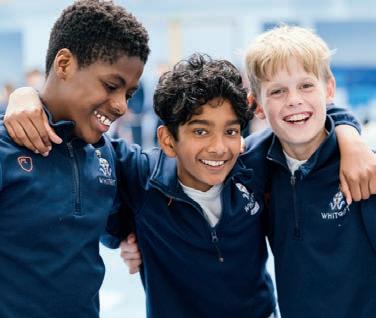

INDEPENDENT BOYS’ SCHOOL OF THE YEAR 2020 admissions@whitgift.co.uk | Telephone: +44 (0)20 8633 9935 | www.whitgift.co.uk Whitgift School | Haling Park | South Croydon | CR2 6YT Transforming boys’ lives through education… Whitgift is one of Britain’s finest independent day and boarding schools for boys aged 10 to 18. Set in 45 acres of parkland, we offer pathways for IB and A Levels. To find out more about our inspiring School, please visit our website Where personal growth meets meets global action Open Mornings 6 October & 19 October morehouse.org.uk
An Independent School for Boys and Girls

4-11

An Independent School for Boys and Girls aged 4-11 Quality of Pupils’ Achievement and Learning - “Excellent” Quality of Teaching - “Excellent” Quality of Extra-curricular Provision - “Excellent” Quality of Pastoral Care - “Excellent” Quality of Links with Parents - “Excellent” Quality of Pupils’ Personal Development – “Excellent” “Pupils of all ages benefit from a rich and exciting curriculum.” Independent Schools Inspectorate Report - July 2015 Kew Green Preparatory School Layton House, Ferry Lane, Kew Green, Richmond TW9 3AF www.kgps.co.uk KEW GREEN preparatory school To book your place on an open morning, please go to www.kgps.co.uk/openmornings or phone 020 8948 5999 KGPS.indd 1 22/07/2020 12:52 preparatory school RAVENSCOURT PARK
aged
Ravenscourt Park Prep School 16 Ravenscourt Avenue, London W6 0SL www.rpps.co.uk Open Mornings To register your attendance at one of our open mornings, please phone 0208 846 9153 or mail secretary@rpps.co.uk Quality of Pupils’ Achievement and Learning - “Excellent” Quality of Teaching - “Excellent” Quality of Extra-curricular Provision - “Excellent” Quality of Pastoral Care - “Excellent” Quality of Links with Parents - “Excellent” Quality of Pupils’ Personal Development – “Excellent” ‘’The curriculum is excellent for all ages and abilities, and is expertly matched to meet the needs of the range of pupils in the school.’’ Independent Schools Inspectorate Report - March 2016 9.15am Tuesday 14th November 9.15am Thursday 18th January 2018 9.15am Thursday 1st February 2018 Open Mornings 9.15am Thursday 9th May 2019 9.15am Tuesday 11th June 2019 To book your place on an open morning, please go to rpps.co.uk/admissions or phone 020 8846 9153 RPPS.indd 1 23/04/2019 12:48 To book your place on an open morning, please go to www.rpps.co.uk/openmornings or phone 020 8846 9153 RPPS_PRINT.indd 1
from Charing Cross to Tonbridge



very frequently.
there,
trip
followed by a
only 40
walk
will see some of the
school buildings and facilities in


you may even spot our boys
home from The CRAS – an
country
huge expanse of
of the most
come face to
FROM CHARING CROSS Arrange a visit: admissions@tonbridge-school.org tonbridge-school.co.uk Trains
run
The
takes
minutes and is
quick
down Tonbridge High Street to the School. Once
you
finest
the land and
romping
annual inter-house cross
run across our
fields. Even more importantly, you will
face with some
accomplished teaching talent in the country. TO CROSS COUNTRY
Luxury Holiday Rentals at Glenmor


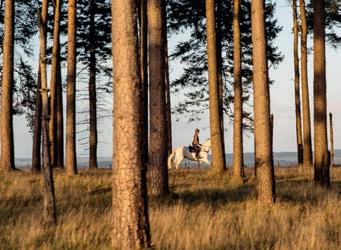

Make yourselves at home in the heart of Gleneagles



The Gleneagles experience is one of a kind – you can now enjoy it from the comfort of a Glenmor luxury holiday home, located in the heart of Gleneagles. On your stay you can enjoy complimentary golf for one person, plus access to all of the leisure, dining and pursuits of the 5 star estate. We have 2, 3 and 4 bedroom properties
perfect for all the family. With prices starting from £3,500 for a 2 bed, £4,410 for a 3 bed and £4,840 for a 4 bed for 7 nights.


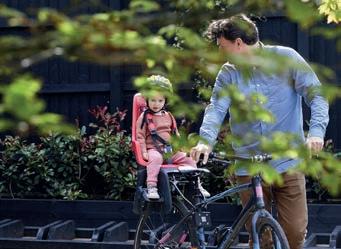
Find out more: GLENEAGLES.COM/GLENMOR +44 (0)1764 694321 OWN@GLENEAGLES.COM
available,
The Timeshare, Holiday Products, Resale and Exchange Contracts Regulation 2010 requires Gleneaglesto provide you with certain key information in relation to the proposed seasonal ownership contract. A standard information form which contains this key information in relation to that contract may beobtained by contacted us via the above methods. An independent day and boarding school for boys and girls aged 7-13 in Shackleford, Godalming Surrey. www.aldro.org Thinking about yourchild’s next chapter? To book a Tour and Meeting with the Headmaster email: admissions@aldro.org
Looking forward with confidence Looking back with pride





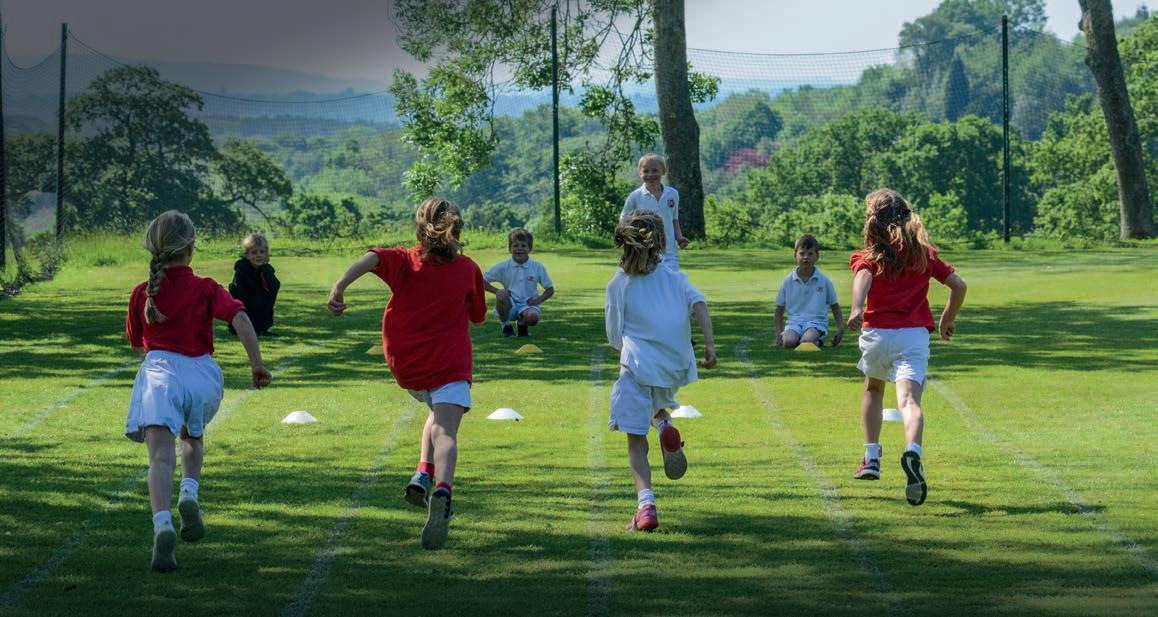
NURSERY, PRE-PREP & PREP SCHOOL CUMNOR 190 X 134 Advert.indd 1 02/03/2022 14:14 A co-educational boarding school for students aged 11-18 Outstanding facilities, an all-round education and endless opportunities await you atThe Duke ofYork’s Royal Military School. Our a ordable full boarding school, open to 11–18-year-olds, significantly out performed GCSE national attainment (2022). Students benefit from excellent teaching, a comprehensive curriculum and breadth of activities beyond the classroom; developing strong character and diverse life skills. Begin your journey as a Dukie today.


















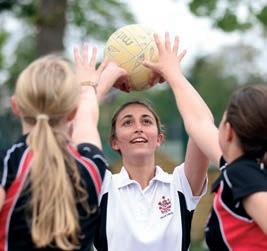
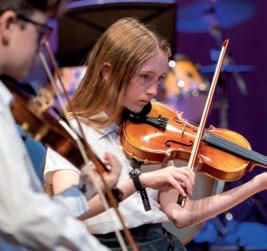





We are free thinkers. We are courageous. We are kind. An extraordinary Pre-Prep and Prep School in Oxford where children discover and develop their talents inside the classroom and beyond. To get a feel for the spirit of the Dragon, book onto one of our termly open days on our website, or through our Admissions team admissions@dragonschool.org / 01865 315 405. www.dragonschool.org -V Alleyn’s School Alleyn’s o ers co-educational excellence in a caring community for children aged 11-18. We offer a range of scholarships and means-tested bursaries. For more details, and to learn about life at Alleyn’s and our next Open Event dates, please visit our website. www.alleyns.org.uk 020 8557 1500 | Townley Road, Dulwich SE22 8SU



























Enrolling now www.kingsinterhigh.co.uk Making the most of those precious moments with exible online schooling. Our early morning school run “ ” King's InterHigh - TLES Advert Rework 2022 1-3.indd 1 A Leading Independent Boarding & Day School for Girls Aged 11-18 Contact: admissions@stmaryscalne.org % 01249 857200 stmaryscalne.org OPEN DAYS: 8th October & 5th November 2022. 25th February & 13th May 2023. A co-educational independent school for nine months – 18 years in Bath www.kingswood.bath.sch.uk With our warm and welcoming boarding community at the heart of the school, Kingswood offers an exceptional education of depth and breadth. Full, weekly or flexi boarding available, with our pastoral team providing a safe, nurturing and exciting experience for pupils. Visit us to find out more.
60
seconds with
Mike Stanley
The new Headmaster of The Lyceum School on his background and educational approach

What is your background?
I grew up in a family of teachers and knew from an early age that working alongside children would be my vocation. In a teaching career, spanning 25 years, I have fulfilled a variety of roles, including teaching History and Sport at Rokeby School in Kingston, being the Deputy Headmaster at Walhampton in the New Forest and, most recently, the Headmaster at Forres Sandle Manor in Hampshire. I am thrilled to have been appointed as the new Headmaster of The Lyceum.
What excites you most about your new role at The Lyceum School?
The Lyceum is a hidden gem in the heart of the City of London; I am excited about helping the school to shine more brightly. There is so much to celebrate at The Lyceum; it is a school steeped in creativity, and the performing arts – such as Music – are particularly strong here. I can see that there is huge potential at the school in other areas too. We are exploring ways to improve our Sport, STEM and entrepreneurial provision, as well as developing our children’s skills for the future and helping to develop their inner strength and emotional intelligence.
What is your educational philosophy?
I believe every child has the potential to shine in their own way. When children are happy, comfortable in their own skin and nurtured by their teachers, they are able to achieve great things. I want our sta to build strong relationships with the children, based on trust and mutual respect, that empowers them to treat every day, every challenge, as an adventure.
Can you tell us about one pivotal moment in your career?
I spent seven years working at Rokeby. During that time, I attended a friend’s wedding, held at Walhampton School in Lymington, and returned to London after the weekend with a new job, having been
ABOVE Mike Stanley
common in prep schools.
We do an enormous number of trips for a prep school, such as our living history trips which bring our curriculum to life. These include our Terrible Tudors trip, when our students live as Tudors in Milden Hall, Su olk for a week. We also pride ourselves on preparing our students for the modern world and our location means that we are part of that future. We are surrounded by some of the biggest and most exciting tech companies on the planet...
What makes a great student?
A great student is
o
ered the post of Head of History by the Headmaster. This changed the whole course of my career. I spent 16 years working at Walhampton, a place where my own children grew up and where my educational philosophy was moulded.
What is The Lyceum’s approach and what sets it apart?
Its location – London is our classroom and London is our playground. We have a topic-based curriculum, which is not very
a child who is naturally curious and asks questions – I like a student who is willing to question the status quo.
What makes a great school?
A happy and inclusive environment. A school needs to have a culture which values everyone who is part of the community and be a place full of smiles and laughter. It’s an environment where everyone is kind, thoughtful and respectful of others and where everyone can be themselves.
210 | ABSOLUTELY EDUCATION | AUTUMN 2022
LAST WORD
“London is our classroom and our playground. We have a topic-based curriculum – not very common in prep schools – and we also do an enormous number of trips”
PRIOR’S FIELD - THE PLACE
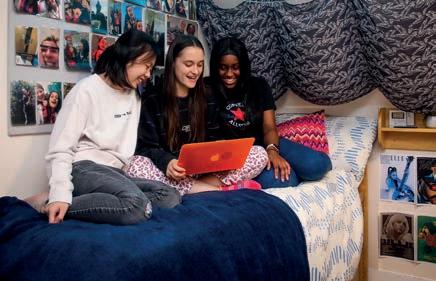






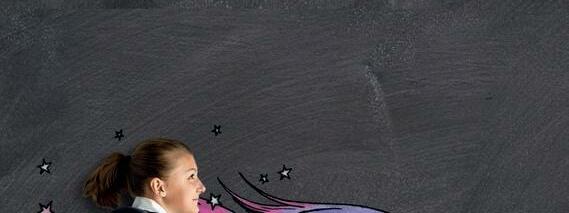




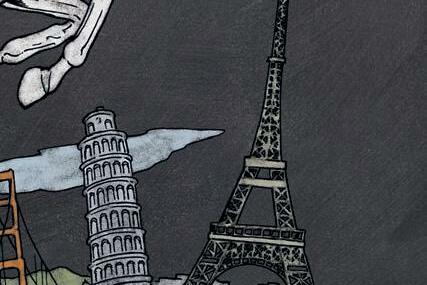




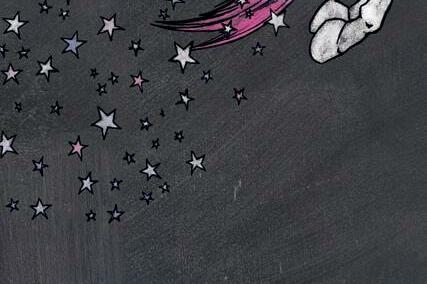






11+, 13+ and 16+ entry, Situated in rural Surrey since 1902 Contact admissions@priorsfieldschool.com to book your place at our virtual Open Event and discover why Prior’s Field is the place to achieve. +44 (0) 1483 810551 www.priorsfieldschool.com
TO ACHIEVE! Registered Charity No. 312038 Achievement in all its forms is alive and kicking in every part of their school day. Tatler Schools Guide Prior’s Field is a school where the spirit is creative and enterprising - it champions girls’ individual talents. Good Schools Guide 2022






























www.maidavaleschool.com T. 020 4511 6000 E. admissions@maidavaleschool.com Maida Vale School, 18 Saltram Crescent, London W9 3HR @MaidaValeSchool Book an open event by visiting www.maidavaleschool.com/openevents who m s A co-educational independent school for 11-18 year olds “Maida Vale School will be modern and innovative yet reflect many of the traditions and values established over thirty years at our schools.” - Gardener Schools Group

























































































































































































































































































 JAMES BALDWIN
JAMES BALDWIN



















































































































































































 RACHEL HOGG
RACHEL HOGG

















































































































































 ABOVE Students at King’s Magna Middle School, QE
ABOVE Students at King’s Magna Middle School, QE



























































































































































































 Principal, Cardi Sixth Form College
Principal, Cardi Sixth Form College
































































































































































 by Dougie Poynter
illustrated by Amberin Huq OWLET PRESS, £6.99
by Dougie Poynter
illustrated by Amberin Huq OWLET PRESS, £6.99



 by Emma Carlisle BIG PICTURE PRESS, £12.99
by Emma Carlisle BIG PICTURE PRESS, £12.99







 by Dr Nick Crumpton illustrated by Gavin Scott NOSY CROW, £12.99
by Dr Nick Crumpton illustrated by Gavin Scott NOSY CROW, £12.99




























 by Paul Ian Cross illustrated by Steve Brown WELBECK CHILDREN'S BOOKS, £5.99
by Paul Ian Cross illustrated by Steve Brown WELBECK CHILDREN'S BOOKS, £5.99





















 RACHEL HOGG
RACHEL HOGG


















 National Trust membership opens a door to spectacular places
RIGHT Role play to remember at Historic Royal Palaces
National Trust membership opens a door to spectacular places
RIGHT Role play to remember at Historic Royal Palaces





















































































































































































































































































































